

31 Mind-blowing Physical Symptoms of Spiritual Awakening
Feeling sick? It might not be the Taco Bell feast you had last night, but physical symptoms of spiritual awakening.
Maybe you’ve recently embarked on a spiritual journey.
You’ve been reading books about spirituality, uncovering your shadows, healing past traumas. Then suddenly, you start feeling some uncomfortable sensations you’ve never felt before.
Are you wondering why you’re experiencing these sensations?
Do you want to know if these are signs of spiritual awakening?
Spiritual awakenings can be painful but there’s a way to make it more bearable and understanding why they happen is the first step.
In this article, I’m gonna shine some light on all your confusion.
I will help you determine if those symptoms are signs of your spiritual awakening, why you’re experiencing them, and how you can better deal with them.
Let’s dive in!

Table of Contents
What Is Spiritual Awakening?
Spiritual awakening is the process of elevating your consciousness. This usually happens after a dark period in your life. It’s when we transcend our ego and begin to realize that happiness comes from within and time and fear are just illusions.
It starts with a feeling of wanting to leave a job, a toxic relationship, or wanting to move to a new place.
If you feel this urge to leave but you don’t know where to go, here are some of the most spiritual places you can travel to .
“It’s exhilarating to be alive in a time of awakening consciousness; it can also be confusing , disorienting, and painful.” -Adrienne Rich
31 Major Physical Symptoms of Spiritual Awakening
Going through a spiritual awakening can be a spontaneous experience. It usually comes after a deep bout of depression or a traumatic event.
Going on this journey is a very liberating experience and not everyone experiences it in their lifetime.
“You will begin to see through all the illusions in this world and strip off all the masks that you’ve been wearing solely for the validation of society.”
You will begin to live your life through your truest expressions and you will be more connected to your intuition.
The bliss that you will gain from this is indeed astounding but this transformation process isn’t just a calm, beautiful experience. It can also be so intense that you begin to feel it in your physical body.

What are the physical symptoms of spiritual awakening ?
There are lots of uncomfortable stories of spiritual awakenings. If you’re experiencing something similar, know that you are not alone.
Spiritual awakening is your ultimate transformation from darkness to spiritual enlightenment.
S o it’s normal that you may experience some uncomfortable symptoms.
Spiritual awakening happens because we are spiritual beings having human experiences and we are put here on earth with a purpose.
That purpose is to evolve, to know the true meaning of happiness, to live more consciously and with more compassion.
Without spiritual awakening, we will continue to live a life chasing material rewards and live a life based on fear and anxiety. We will keep believing that the world is scarce and take the present moment for granted.

Why is spiritual awakening so painful ?
Spiritual awakening involves the purging of everything that doesn’t match the higher self that you are about to evolve into.
It includes breaking out of illusions you’ve based most of your identity on and these changes might be too much for the mind to grasp.
“As you rise into higher frequencies, apart from the pain of losing people who are no longer a vibrational match, your body may try its best to resist all these unfamiliar changes you’re experiencing.”
Here are some of the common spiritual awakening symptoms one experiences during a spiritual awakening.
Please note that t hese could also be symptoms of an underlying medical condition and in those cases, it’s important to seek medical help.
Without further ado, here are the major physical symptoms of spiritual awakening!

1: Body shivering or trembling
Our bodies are filled with chakras that activate once we go through a spiritual ascension or awakening.
These give off energy that may be too much for your body to handle causing you to shiver or tremble.
You are rebalancing in many aspects and elevating to a higher frequency.
Your inner ears may be sensitive to this causing you to feel off-balance or experience vertigo.

3: Feeling drawn to metaphysical things
You may feel drawn to metaphysics and spiritual practices like reiki, meditation, and yoga.
This is because these are great tools to help you with your spiritual awakening and your guides want you to know that.
4: Throbbing or other sensations on the top of your head
Your crown chakra is located at the top of your head. This is the chakra that connects us to the source so the sensations you feel may be a sign that your crown chakra is activating.
I often feel this during full moons and eclipses.
5: Buzzing in the ears
As you begin to tune in to a different frequency, a higher vibrational one, you may begin to hear buzzing in your ears.
This is also a sign that your senses are getting more heightened and receptive.
6: Feeling more empathy and compassion
You may begin to feel more intensely the energies of people around you so it’s easy to feel drained in social situations.
You also begin to love purely, without expecting anything in return.
7: Feeling at peace with the darkness
You begin to feel a sense of peace and you are no longer afraid of the darkness.
You see that fear is only created by the egoic self and darkness is a vital part of your spiritual awakening.
8: Heat on hands and feet
In Hinduism, hand postures known as “mudras” are supposed to aid in the transfer of higher energies while the feet symbolize balance and grounding in the physical realm.
9: Tingling sensation between eyebrows
This might be one of the most common physical symptoms of spiritual awakening and something I often experience during meditation.
The space in between your eyebrows is where your third eye chakra is located, also known as “the seat of the intuition”.
Tingling may mean that it’s starting to activate and your intuition is becoming stronger. If you want to know how to fully activate it, read this article “How to Open Your Third Eye Safely”.

10: Vivid dreams
This is a sign that you’re connecting to universal consciousness and you’re starting to ascend to a higher dimension.
We’re all more receptive to these in our most relaxed states such as while meditating or sleeping.
If you want to know how to control and experience your dreams, you may read about lucid dreaming here.
11: Headaches
This could happen especially when there is a surge in energy such as during full moons. This is due to you being more connected with the energies in your surroundings.
I recommend that you do a full moon ritual to help you channel this intense energy into making positive changes in your life.
12: Skin irritation
Spiritual awakening includes the purging of everything that isn’t good for your higher self.
This may be a sign that your body is trying to get rid of cellular toxins and they’re coming out through the skin.
13: Symptoms of virus or infection
Spiritual awakening illness is more common than you think. Symptoms of a virus or infection that cannot be explained may just be your body trying to adjust to this new energy flowing inside you.
During a spiritual awakening, the lower density energies are removed from within you.
14: Insomnia
The intense energies activating in our bodies may be too strong that our bodies begin to need less sleep.
Our brains’ subconscious gets reprogrammed or rewired best while we’re sleeping which may cause you to wake up multiple times during the night.

15: Increased sensitivity
As you become more present and aware, all your senses get heightened causing you to feel more sensitive to lights, sounds, smell, taste, and touch.
You may begin to hear sounds you would’ve not heard before, notice details in your surroundings you never noticed before, and more.
16: Depression or anxiety
We are creatures of habits and our brains hate everything unfamiliar.
When everything we’ve ever known turns out to be false, our brains activate a fight or flight response. This causes us to experience a spiritual awakening depression, or anxiety.

17: Awareness of negative habits
You might not think this belongs on a post about physical symptoms of spiritual awakening, but since it’s something both me and many of my lightworker friends have experienced, I thought it was important to mention.
And that is that you become hyper-aware of the negative habits in your life and feel a strong desire to change them .
It’s your spirit guides leading you to a path towards becoming your higher self.
18: Feeling disconnected from everyone
As your frequency changes, you will lose a lot of people that aren’t a match to your vibration.
This has to happen because if they stayed in your life, their energies might disrupt your awakening process.

19: Bloating or water retention in the lower body
Your consciousness gets elevated to higher levels. Your body is trying to recalibrate and ground itself causing you to feel heaviness on your lower body.
You may even gain weight but it’s usually just water weight and they will go away eventually.
20: Pain and aches
Pain comes from resistance.
It’s normal for your physical body to try to resist all these energy transformations happening inside you and that’s why you may experience some pain or aches in certain areas of your body.

21: Personality changes
You may notice that you don’t like the same things as before, you don’t look at things or treat people the same way because your ego-self is being stripped and your authentic self is taking charge.
To help guide you towards becoming your truest self, this free numerology report can help you uncover your hidden talents, strengths, and deepest desires.
22: Feeling the need to purge
One of the biggest physical symptoms of spiritual awakening is that you feel the need to do a detox for your body, step away from toxic relationships, leave the job that makes you feel like a zombie, or move away from a place that’s draining you .
These are all spiritual purging symptoms . You may crave solitude to protect your energy as you go through your self-awakening process.
24: Experiencing jerks or rapid eye movements
There may be times you feel parts of your body jerk or like you couldn’t control the movement of your eyes.
This is because of all the intense energies inside you, chakras activating, and negative energies trying to flow out.
25: Feeling irritated with small talk
You no longer have tolerance for shallow talk. You talk to people from this higher state of spiritual consciousness and you feel it when people aren’t on the same frequency.
When you talk to someone on the same levels of consciousness, it feels like you’re talking to their soul.
26: You see through the illusions
It’s as if your eyes got sharper and developed a deeper dimension. You see through the illusions in society that you’ve never noticed before.
You’re no longer a prison to the material world and you begin to see that you are not what you own nor who society says you are.
27: Heightened intuition
Intuitive abilities are innate to us humans but because of society, we’ve come to distrust our own intuitions and trust whatever society tells us instead.
When your intuition heightens, you become more op en to receiving secret messages or signs from you r guides.

28: Feeling angry
A lot of people may be confused if they feel strong emotions such as anger during spiritual awakening especially when they’ve been suppressing them. However, doing so allows those negative energies to be stuck in our bodies causing us to feel sick.
Letting yourself feel those emotions without judging them is healthier. Feeling all those emotions is a part of being human.
“Being awakened doesn’t mean we never feel the negative ones. It means that we acknowledge and observe them without judgment instead of reacting to them.”
29: Food intolerances
Every cell in our bodies is intelligent. They know what’s good for us and what isn’t.
Some foods you used to love before, your body seems to reject.
You may get cravings for foods you didn’t like before.
This is because you’re getting more in tune with this inner intelligence.
30: Fatigue
One of the most common physical signs of spiritual awakening is fatigue.
This usually happens after you feel all the intense symptoms.
Your body has gone through a lot and now it needs time to rest and recalibrate. Don’t worry, this feeling of exhaustion won’t last.
31: Feeling great
This is the best symptom of all. After your body has recalibrated, you just feel so good and so light.
You’re now in a high vibrational state and the heaviness from your formerly dense body has vanished.

How do I deal with spiritual awakening symptoms?
You just have to accept that they’re part of your awakening process. Remember that what resists persists so just let them be. Doing some yoga may help alleviate the pain and aches that you’re feeling.
Physical symptoms of spiritual awakening are not fun stuff, but it’s necessary to purge what doesn’t serve you so be grateful when it happens.

How long does spiritual awakening last ?
A spiritual awakening is not a linear path with a finish line. It’s a lifetime commitment. As long as you commit to your higher self, no matter how crazy your path gets, the important thing is that your overall trajectory would be upwards.
What happens after a spiritual awakening?
You become enlightened, you begin to live your life as your most authentic self, and you operate on a higher level of consciousness. Your task now is to do everything you can to nourish your soul and maintain that level of consciousness .
Consistent meditation is one of the best ways to do this. You can try this free 30 Days Meditation Challenge here .

Most people think that a spiritual awakening experience is calm and beautiful but it can be coupled with strange, uncomfortable physical symptoms as well.
Knowing that these are all parts of your journey will help eliminate the fears you associate with them so you could just let them be and trust that you will come out of the other side blissful and whole.
These are just common physical symptoms of spiritual awakening because the energies we use during this period of transformation are usually too intense for our bodies to handle.
Don’t let these hinder you from reaching the final stages of spiritual awakening .
If you want more personalized guidance on your ascension journey, you can find vetted healers and psychics with my partner Keen .
Are you going through a spiritual awakening? Which of these symptoms have you been experiencing? Let’s have a conversation going below!

This Post Has 61 Comments
I feel like I’m going to burst into tears for silly or no reasons at all. It’s embarrassing & makes others uncomfortable which makes me uncomfortable.
That’s healing, dear. Releasing of pain and tension. Plus, welcome sensitivity. 🙂
Thank you! <3 In the last 10 years I had my two 20-day "pre-enlightenments" + two long dark nights… in this, the third, energy healing – yes, most of the above symptoms but THANK YOU for intolerance for the small talk, fatigue, and anger… it seemed to me that somehow, after dilligent and people-pleasing decades, I'm becoming a lazy and rude person… Maybe just self-confident. The reading says: a free soul 😉
This! Exactly what I thought to myself when I read the small talk/fatigue/anger!
Greetings Author,
This helped me in unexplainable ways. Oh, how thankful I am to have searched, “are headaches a part of spiritual activation/awakening”. I’ve been going through several of the mentioned symptoms (it’s been a great deal too). I’m 41 & to face childhood traumas at this age as part of my commitment to fully embrace all things higher (ascension) has not been easy.
Unlearning everything prior has become my definition of “rebirth”. Nonetheless, I will remain fully committed to the rising of self; within lies a whole new world. Again, I’m thankful & grateful for this read; you helped me.
A Healing Soul
Magical! You’re welcome. Sending you lots of love and blessings 💕
I am understanding most of them.thsnks for explaining the reasons very well and the measures to be taken. At one point my anger was very much heightened that it was creating troubles for me at office. I felt as if someone inside me is demanding me to be my true self irrespective of what others might think. One symptom i have which you have not mentioned here is extraordinary sense of humour,i see almost every situation has a space for humor and i use it to lighten the work environment and people live it. This is strange because I was very introverted earlier and this almost uncontrollable urge to laugh is embarrassing to me ,but people seem to enjoy though. I am being brutally honest in conversations and doing it through sense of humour is playing to my advantage sometimes. But i dont feel comfortable being center of attraction though.any pointers on this heightened sense of humour
Correcting few typos
1.,I am undergoing most of the symptoms. 2. One symptom i have which you have not mentioned here is extraordinary sense of humour,i see almost every situation has a space for humor and i use it to lighten the work environment and people LOVE it
I think that is a great call out – the humor!! During my journey, I’ve reflected on how I believe the “entertainment” industry has somewhat plagued much of society, in a way that we often laugh at the “wrong” things, however laughter is so needed for the soul & it’s one of my favorite things to do and this journey has shown me just how hilarious life and the god of the universe truly is! …without having to laugh at the “wrong” things. I absolutely love laughter and life is beautifully humorous!
Yes laughter and fun is such a simple way to raise our vibrations, isn’t it!
Thank you very much ❤️
OMG I’m just letting this go thru me I could be in an exorcist movie lol I’m like Steve Martin and Lilly Tomlin in one body AND I’m laughing so hard at it I look like I’m possessed – (now they’re cracking my neck as I type – sometimes it hurts but I just hate waiting for anything and I’ve been in pain my whole life so bring it on and let’s get going!) LET’S WAKE OUR PEOPLE UP!
I know that this is an old post, and I probably will feel silly later for being so compelled to comment 5 months later, I just had to tell you that you’re reply spoke to me deeply. I am 39, but feel so young, curious and awestruck all at the same time; especially when I realize how grateful I am for even the most brutal but crucial parts of my life.
You have woven a thread golden of light through my existence. Thank you so very much.
I feel bloated and got strange weight around my waist. Don’t like the feeling. It feels like I had too much food and don’t feel like socializing. How can I ease that feeling?
I stopped fighting it and didn’t eat if I wasn’t hungry and sometimes I was SO hungry all day but for just fruit and beans and tonight I’m having Brussel sprouts I used to hate them and I can’t wait but yah – the bloating sucks – I think of these awful symptoms as nothing more than symptoms you’d have after an exhaustive surgery – bloating – confusion – odd pains – just trust the doctors and nurses in your soul group – you’re doing great (and avoid people till you are stronger … I’m just permitting right now – I have NO desire to interact with anyone other than whatever this is.) ALL THE GOOD EMOJIS …. WEEEEEE here we go ….
Hello spiritual community
I’m very new to all of this but was able to accept that I’m an empath a few years ago. This explained a lot and of course filled in many blank spots for me. Nevertheless, in my studies and my path to self-discovery, I never thought that I fit any of the criteria for being a healer however I’ve had a few very unsettling experiences lately that make me feel a bit differently.
Bare with me as I try to paint a picture…
Apparently it’s always been second nature for me to have my protective walls up (without even knowing) so I don’t typically have to deal with a lot of unwanted energies, etc. With that said, I’ve had a few experiences as of late that feel, none other than, what I assume a jolt or a surge of energy being injected into my feet/legs or.. shooting out of my feet. This last experience happen while in a dead sleep, and I shot out of bed, into a standing position at the side of my bed. Forced myself to go back to sleep and about 30 minutes later, same thing happened again. Both times, it hit me like a panic attack but I was keenly aware that what anxiety/emotion I was feeling was NOT mine. These experiences always follow either hanging out with or talking on the phone with a very specific family member and in a emotional type crisis.
These experiences have not been pleasant and unfortunately painful..
Has anyone experienced anything like this??
Does anyone think that I’ve unfortunately overlooked the healer aspect of my empathic abilities or was recently awaken as a healer?
I really need help and am desperate for answers.
I too have had very similar experiences. They always prove to be true but I never know what exactly will unfold until it unfolds in real-time, earthside time. All I can do is brace myself. I try to tune in and accept the gift so that I can become sharper. It’s hard work.
I haven’t experienced that as I have a feeling I WAS that family member and not so very long ago … take a deep breath and return to your physical body if you’re not ready – you have all the time you need – don’t rush it but don’t concentrate on fear – we are all here talking about really odd stuff that would scare anyone not going thru it so hang in there and this too shall pass AND IT’S A REALLY GREAT THING so hang on and smile – I’m streaming Jeshua … it’s a blast!
I don’t know who can help I don’t feel awakened my body buzzes all over all the time I always hear ringing no one else hears and feel the vibrations everywhere as frequencies change if I close my eyes I see the sound in vivid colors and all three of those occur simultaneously but it feels amazing I’m just trying to find out what is happening if I touch anyone with my eyes close I see inside of them and feel any pain they feel and it seems I absorb the pain they don’t hurt but I do then after a while I feel better any suggestions would be cool this has been happening for a long time but has intensified recently I know it sounds rediculus so maybe I’m nuts
Do some meditating and ask for guidance from your Angels and spirit guides. look into reiki attunement because it sounds like you would make a wonderful healer! If you are seeing colors and hearing sounds, you are very gifted. look into auras and clairaudience and clairvoyance as well. Sounds like you are an empath as well. Your not crazy! just a special person!
wow this resonated with me so much! I”m a few years into riding the waves of awakening. I’ve had a ton of physical symptoms, slowly starting to release the resistance and try to just SURRENDER! haha =) it’s tough but so rewarding.
Now i understand why!?!Almost all of the sign I’m having it right now. Sometimes I just don’t know what to do or how to deal with it. Symptoms starts last year. And now almost 2 months I didn’t go to my work, I just feel that I want to GO somewhere else like SPACE or other PLANET and live there peacefully.
Thanks for your comment! Sending you lots of love and blessings 💕
Thank you so much. I feel exhausted , like my body wants stillness and silence. It’s a relief to know it is normal part of awakening!
maybe you are a star seed!
Thank you Julia. I understand myself much better now. I will keep working on releasing anything that’s holding me back to fully awaken. I send you love, gratitude and blessings. Namaste.
I recently had a very strong awakening Wich scared me completely. I felt lifted up, looking down on my body and there was a swirling sense of energy in my legs, wrists, arms, head and heart. I actually thought I was having anxiety attack but smth kept me from not panicking. I had to keep breathing – i was in meditation Wich I’ve been doing for years. But this sensation was absolutely mind-blowing.. i feel very light on my feet and like i can’t really balance well. I hope this gets calibrated in time… Background is that I’ve had a year with jobless, divorce, two movings, and a breakup recently. I guess there is just so much stress in my system. Right now i feel like I am exposing my wound to the world, like i have no protection against my inner world. It’s raw and beautiful but also feels very vulnerable and strange …
Thanks for sharing your story! 😊 Sending you lots of love and blessings 💕
Hi there. I’m very new to this but I had a healing session overseas last week and have been unwell, dizzy/vomiting/vertigo for around four days. Also heightened emotions – strange to find myself getting emotional during movies where previously I never would. My symptoms are slowly subsiding but my mind feels really light. Im cautiously excited about how I feel but am wondering if I should find a local healer to continue the process or can I find my own way? I must admit the extent of my symptoms (really unwell) did shock me but I guess it means there was a lot to resolve within myself. Would love your perspective.
It is a relief to know that the symptoms I’ve been experiencing are a result of spiritual awakening. My mind creates thoughts and feeling that I’ve been attached to or addicted to my whole life. It seems constant but my higher mind is fully aware of them and labels them so there’s this chatter in my head constantly. If I slip into worry my higher mind says to me ‘that’s just worry , stay in the moment.’ Or if I’m feeling anger or resentment in the moment my higher brain takes me to a moment in childhood or even a past life experience where I’ve felt like that and tells me you need to release that. As well as various physical symptoms, skin rashes, feeling like I need to vomit or purge, pressure at my third eye like it’s about to burst.
Some of these symptoms might be from dark entites that are already attached to you becoming uneasy about your spiritual growth. Once your light grows, dark entities will leave but you might attract others as well, entities of higher vibrations, but still dark. It’s important to maintain your core and continue forward. Spiritual awakening can be quite unsettling at times. Connecting with your Divinity (Higher Self, for some people) will help a lot. Also, lower the ego. The ego coupled with spiritual awakening can attract more darkness. We’re not special for going through this, we’re just at a different stage. A level that some people have reached already, others not yet. Everyone goes through this eventually in this life or another life.
So true, well said!
Why do the angels or what have U keep trying to make me think I died and that I don’t belong here and that there is something I have to do to get to heaven…
Love that I came across this and all of the insightful comments! I’ve been on my journey for a little bit now and as I work thru my anxiety, uncomfortable physical symptoms tend to really raise my anxiety. As I try to fully let go of fear, there seems to always be something new. But I refuse to “worry”. However, certain physical symptoms can trigger worry or anxiety. Currently (about the last couple weeks) I’ve felt this throbbing in the top of my head and temple area. It’s not painful at all as I had suffered from headaches most of my life and this is not what I would call an “ache”. It’s like a throbbing or pulsating. I’m glad the post touched on it but also wondering about others’ personal experiences with any type of feelings or sensations in the head. Anyone?
Thank you so much for posting this. I mostly love my spiritual journey that began in the summer of 2021. It’s been amazing and I feel so blessed and grateful. The highs are incredible and the lows really suck. The physical symptoms have really caught me off guard though. I pretty much have had or am having all the ones you listed. Thanks for sharing…. I’m not alone! Xo
Ummm, didn’t know this was happening but yeah… 28 of the 31 I’ve experienced in the past 6 months.
Disturbing symptoms I’ve came across or it might be linked to 2 sleep paralysis episodes I had at my old apartment.
1) Low pressure zone, where ever I go anyone within a 20ft radius instantly dry coughs, or rubs their ears, scalp, nose, neck, or eyes. (Brought it up to only a few people and they all had a disturbed look on their face) 2) based on the position of my body, wind will rage aggressively in my direction. (Multiple witnesses) 3) when driving at night 1/20 street lights will randomly go out as my vehicle approaches or passes them. (Multiple witnesses)
My hypothesis’s for those 3 symptoms is either 1)in my old apartment one of the AC units was idk sounds crazy.. possessed. When I had my 2 episodes of sleep paralysis there, it felt as a electrical entity was holding me down by my ankles. A month or so afterwards I started getting randomly shocked when I was in my bed.
2)Magnets. -So my old phone case had a strong magnet on the back; for the mount in my car. When I say strong, I’m not kidding. -I went through a phase of quitting cigarettes and substituted with juuls (For those who don’t know the charging system had a relatively strong magnet at the base of the device) also would have occasionally 2 devices in my pocket at once. -wireless earbuds/playing music too loud (Same as the juul for charging) I think a combination of having all three on my body when in bed; mixed with tossing and turning. Oh and stress. And the claustrophobic sense of being trapped in my room because my roommate wouldn’t play with his dog/take her for long walks. I did, so she wouldn’t leave me alone if my bedroom door was open.
Idk what to do… I actually own/wear a 3rd eye pinecone & have experimented a good amount of psychedelics in my life. Also refuse to drink tap water/fluoride toothpaste.
So this could be an awakening like listed above.. but I don’t know what to do.. I can keep composure in public/around other people. But when I’m by myself I feel a constant urge to twist and turn.. this symptom might be due to a spinal/neck injury. TMJ. Or PTSD.
Should I seek a psychiatrist or neurologist? I haven’t listed the feeling of all my nerve endings being twisted up in places they shouldn’t. If I do yoga, some of these will return to normal placement, usually followed by loud a crackling/crack noise. (Witnessed by father/sister/best friend)
As I’m typing this my right eye is irritated and idk what to do… I don’t have health insurance and I don’t have any money..
Is this all in my head due to extreme stress/anxiety. Or should I maybe seek out a priest?
I would greatly appreciate it if someone would get back to me. Thank you
I have a question, how many stages of spiritual enlightenment are there? I had major mental problems for many months and weakness and felt a sense of disconnection from people, almost the whole time.
I also had anxiety all the time. With the first 2 stages I have been feeling spiritually dead a lot at times even though I was trying to develop a spiritual awakening.
Thank you so much for this post.
I have been experiencing all these symptoms for few months now, its truly challenging. One night I woke up suddenly knowing that i feel super dizzy, its like i was on a boat, I had a panic attack and next morning my body felt strange, as if i was scared of myself, since that night, i been experiencing high vibrations in my body ( especially one night when i was aware of the vibrations) which felt like i was taken away by someone by this hight vibration/energy, its so hard to explain but something was happening to my body.Since then i been reading alot of books about spirtual world and listening to NDE made me feel awakened, i feel like a different person , i feel all these terrible physical symptoms but at the same time I am kind to people , i want to help without receiving anything in return, i want to move and live in nature, i want the world to be a better place, i think alot about human life and afterlife and our purpose on this earth, I see angels trying to connect with me through numerology, I know all the meanings I know their messages I know they are here and I am aware what is happening, I am however sometimes feel like I would like to feel normal again, without feeling any physical symptoms that are most disturbing. I have faith that this will pass and I will be happiest soul on this planet <3 I wish there was a group we could all connect and share our experiences, I would feel less alone in this journey 🙂 bless all and thank you again for this post ! xxxxx
Mante, First and foremost you’re definitely not alone! Your story resonates with the beginning of my own journey four years ago. I have also, just recently, begged, cried and prayed for my old self be returned to me and off this spiritual path. To no avail. Once you’re chosen, it cannot be undone. The best thing I can reccomend for you to start doing for some relief is pray. Pray coming from the deepest parts of your heart for enlightenment, direction, and support. Then sit quietly with your eyes closed and wait for the answers. Pay attention to the signs your body will give you, tingles, throbbing, heat etc. These are all answers! Then ask questions as you feel them and you will be guided. It may take practice but make sure you set aside some quiet time everyday to do this and eventually you’ll open the lines of communication with your guides, Angel’s, God etc. There’s a special reason/job you’ve been chosen to do and it’s your responsibility to grow and find out what it is. I’m here for you with any questions or feel free to reach out so you’re not alone. You would be helping me too!
I had my spiritual awakening 4.5 years ago. I went through the bliss stage where I just felt so connected to the Divine. But the past two months I have been going through something dark, I just have lost interest in work my body feels so heavy, I have been feeling some type of electrical charge going on in my head. I burst out in tears out of no where but then I’ll laugh. I have to make myself get out of bed and take a shower. To get everyday things done at home. I just want to curl up in bed and seclude myself away from the world.
Having insomnia, anger outburst, the strong recognition that a deep sweeping of resentments is required. Along w this a feeling of rebirth and reconnection, renewed hope, It’s a lot! Thank you for your article and the shares. In this together right now is well wonderful. So much brighter! Yay team!
You’re welcome! 😊 Thank you for your kind words. Sending you lots of love and blessings 💕🙏
From Thursday to yesterday. I felt so sick that I actually did a covid test. I typically suffer from allergies so it is hard to determine if my headaches, clogged ears and pressure are from that or allergies. But no medication would help. Today is a better day. I feel I was transcending, or maybe wishful thinking on my part. I believe this started 2021. In the past 6 months I have had several bouts where it feels as if I have the flu, chills, headache severe pressure in my E.T. tube. I am going to have to note if they are happening around the full moon. Ty for this article
OMG yes! Every one of them applies to me. Also more emotionally sensitive. If I hear of a story of an animal being mistreated to the point of death my soul gets so grieved. I always felt sad about it before, but NOW I almost lose a piece of myself when it comes to beings like animals, children, the elderly, or disabled people suffering.
Amazing Lacey! Do you have any suggestions for future videos? Sending you lots of love and blessings 💕
All n more but faith keeps me Going with Jesus all is possible
Hi, my name Kevin. I love your posts breech (is it) but it gets deeper.
Thank you! 😊💜
Thank you for sharing your insightful perspective on the physical symptoms of spiritual awakening. It takes a brave soul to embark on the journey of spiritual awakening, and your words remind us that it is not an easy path. However, the ultimate purpose of this journey is to evolve in all aspects of our being, to truly understand the meaning of happiness, and to live our lives with greater awareness and compassion. The pain and discomfort we experience along the way are reminders that we are shedding old layers of ourselves and making space for new growth. It is through this process that we gain clarity and wisdom, and ultimately find a deeper sense of fulfillment and purpose in our lives. So let us embrace the challenges of our spiritual awakening, knowing that they are all part of the journey towards greater self-awareness and inner peace.
It was amazing to read such a wonderful post! Most of the symptoms mentioned here were being experienced but did not make sense to me because of perceived imagery of spiritual awakening as a state of total calm and quietness! Now, every bout of anger, panic and pain make sense fully! Thanks for sharing such a wonderful article and so many uplifting comments by other seekers, especially one by Roberta Block Hempfling ! Be blessed, All!!
You’re welcome 💜
Thank you for your kind words. Sending you lots of love and blessings 💕🙏
Spirituality is a broad and subjective concept that encompasses a sense of connection to something greater than oneself. It often involves exploring questions about the meaning of life, the nature of existence, and the purpose of our existence. Different cultures, belief systems, and philosophies have their own interpretations of spirituality. For some, it is linked to organized religion and faith in a higher power or deity. For others, it may be more secular, focusing on inner peace, mindfulness, and a sense of interconnectedness with the universe.
Designed to foster open and respectful conversations about spirituality. It should be used with sensitivity, and the information gathered should be used to support the individual’s holistic well-being. Additionally, the questions can be adapted or expanded based on the specific context and the preferences of the person being assessed.
Theres a huge universal and vibrational shift going on, known as Khali Yuga in ancient Hinduism, it’s a rebalancing. It is defined by dysfunction, disease, departure, war, and is vibrational in nature. It is affecting sensitives, healers, indigenous peoples, meditators the most and energy will shift to affect larger groups of people as it shifts. Guides have explained to me that it’s a time when the lowest amount of cosmic light is coning in, but light is steadily overtaking darkness to bring cleansing, it is Karmic in nature. I have experienced extreme dizziness, nausea, body aches, rashes , fatigue, nightmares, and a host of similar testimonies on this blog. Dark energies are attacking light and light workers, because they are being lowered into darker places and being eliminated. The lack of compassion and anger , rage, dishonesty, crime we are witnessing is due to a cosmic lack of light, but we are shifting to a higher place, it will be difficult for a while .Because the symptoms and discomfort in your bodies is vibrational, the best way to deter it now is to move the vibrations out, driving in a car helps because when you physically move the vibrations are thwarted, I also twirl, spin, walk, and found the most helpful tool to be an electric tooth brush, used as a hand tool, massage areas like lips, nostrils and ears, vibrations come thru openings in your body. Put cotton in your ears to plug them. Massage your crown area on head, the vibrations and lower entities are hostile and can cause brain dysfunction, blurred vision, confusion; they are mentalists. think of a hypnotist putting negative emotions, thoughts and depression in your mind, they can ” freeze you ” physically. Lower energies are hostile and manipulative, if you have guides; evaluate the information they bring. Young people are vulnerable who are attracted to lower energies; they are being influenced to commit crimes. Animals are acting unusual and are vulnerable as they feel these energies. Instead of being quiet, meditating, or listening to calmer music, listen to music that gets you moving, movement is a way to move them out. As we shift into more cosmic light, higher beings and people who are open to light will experience renewed energies and improvement in all areas of life, and lower minded people will be sickened physically. Society is vulnerable to disease now, protect yourself with this awareness, I’m still wearing a mask mostly when I go out, and even gloves, as my guides have asked me too. Know that Angelic beings, healers, have reincarnated at this time to help transfer LIGHT into the world, and are here to overcome darkness, mostly know darkness cannot defeat or overcome the Light. I also use electric body massagers and they are helpful to remove lower vibrations. Be patient, vibrational rates are quickening as they overcome slower vibrations.Our bodies and all things are Vibrations.
I’ve been feeling many of these symptoms since my spiritual awakening. In the last couple of months, I’ve had painful physical symptoms, and currently, the left of my neck is hurting so much as if I have strep throat on that side. I normally see that these pains have a purpose for me, as I continuously grow in my spiritual journey. But I do tend to feel depressive and so sad at times when dealing with the pain of my body. I have most all of the symptoms you mention Breech. It has been amazing to finally feeling more authentic and true in my 40s, to connect with others going through similarly or on their way. I’ve had a life with a lot of traumas and have always struggled to stay here. But this spiritual journey has awakened me surely, to God and Jesus, my angels, spirit guides. I feel other people’s energies too much as I always have. I will continue on now knowing that there is a higher purpose in life for us. Namaste friends.
Leave a Reply Cancel reply
Disclaimer: Some of these links go to one of my websites and some are affiliate links where I’ll earn a small commission if you make a purchase at no additional cost to you.
Spiritual content should be viewed as being for entertainment purposes only and in no way replaces proper legal, financial or medical advice. Like with everything in this reality, we can never know for sure, so exercise your own discernment and only take on as truth that which resonates for you as truth. Keep an open mind, but if something doesn’t resonate, please honour that.
Search this blog

Meet the founder
Welcome to The Spirit Nomad! We help lightworkers step into their power and soul mission. Read more about Julia Lundin…
The content is based on a combination of the author’s life experience and years of knowledge gathered through online research. However, like with everything in this reality, we can never know for sure, so exercise your own discernment and only take on as truth that which resonates for you as truth.
Related posts
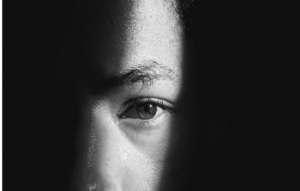
7 Spiritual Awakening Eye Symptoms (Incl. Eye Color Change)

Top 10 Best Spiritual Awakening Movies

Individualogist Archetype Test Review 2024: Scam Or Legit?
- Terms and Conditions
- Refund Policy
© The Spirit Nomad 2024
Why Is Spiritual Awakening So Painful? 9 Reasons Why
Anyone who has gone through a spiritual awakening knows it can be an incredibly painful experience.
Though the rewards of becoming spiritually awakened are great, the journey there is often fraught with pain and suffering.
Why is this?
In this article, we’ll explore some of the main reasons why spiritual awakening can be so painful and what you can do to ease the process.
Key takeaways:
- Spiritual awakening can often lead to the end of relationships – both romantic and platonic.
- This awakening can be painful because it causes us to question everything we once held to be true.
- During this time, it’s common to feel isolated and alone, but remember that we must go through this process in order to grow.
Table of Contents
Understanding the pain of spiritual awakening
Before we can talk about why spiritual awakenings are so painful we have to discuss the physical, mental, and emotional pain people experience during an awakening.
The physical pain of a spiritual awakening can be pretty intense.
Many people report feeling like they are going through withdrawal, as they detox from the lower vibrational energies that have been holding them back.
This process can be extremely uncomfortable, with symptoms including headaches, nausea, and fatigue.
However, it is essential to remember that this pain is only temporary.
Once you have reached a higher level of consciousness, you will no longer be subject to the same lower vibrational energies.
In fact, you may even find that your physical health improves as a result of your spiritual awakening.
Mental pain during an awakening can take many forms.
One of the most common is anxiety.
As you begin to see the world more clearly, you may become anxious about all of the problems that exist in society.
You may also become anxious about your own life and what you are doing with it.
It is not uncommon for people to feel like they are going crazy during an awakening.
This is because your mind is bombarded with new information and is trying to make sense of it all.

Emotional pain is one of the most common types of pain people experience during a spiritual awakening.
This can manifest as feeling overwhelmed by emotions, feeling unsupported by those around you, or feeling like you’re just plain old stuck.
Emotional pain can be incredibly frustrating because it can feel like no matter what you do, you just can’t seem to escape it.
However, the good news is that emotional pain is often a sign that you are progressing on your spiritual journey .
The reason is that when we first awaken spiritually, we tend to be very attached to our ego-self.
This attachment can cause us to experience a lot of suffering because we constantly try to protect and defend our ego-self.
As we release our attachment to our ego-self, we experience less emotional pain.
So if you’re going through a lot of emotional pain right now, it’s a good sign that you’re on the right track!

Why is spiritual awakening so painful – 9 reasons why
I wish spiritual awakening could be all flowers and rainbows but the truth is, it’s not.
I thought something was wrong with me for a long time because the process was so incredibly painful.
I felt like I was dying like my life was being torn apart, and like I would never make it to the other side.
But I did make it to the other side and I’m here to tell you that you can too.
Here are 9 reasons why spiritual awakening is so painful:
1. Old wounds start to surface, and you’re forced to deal with them head-on
A spiritual awakening is often an intensely painful experience.
It can feel like all the rug has been pulled out from under you, leaving you feeling lost, confused, and alone.
This is because an awakening forces you to confront your deepest and darkest truths – often referred to as our shadow self.
These are the parts of ourselves that we have been hiding away, often for many years.
And when they come to the surface, it can be a very confronting and scary experience.
It’s easy to ignore the parts of ourselves that we don’t like or that make us uncomfortable, but when faced with them head-on, it’s hard to deny their existence.
This process of facing our shadow selves can be incredibly painful, but it is also necessary for our spiritual growth.
Without it, we would remain stuck in our old patterns and behaviors, never truly moving forward on our spiritual journey.

2. Change isn’t easy
Most people resist change at all costs – even I used to be one of those people!
We like our lives to be comfortable and predictable, even if that means staying in a place of pain and suffering.
But the truth is, that change is inevitable.
It’s an essential part of life; without it, we would never grow or evolve.
Spiritual awakenings often come with a lot of internal and external change.
And for many of us, this can be tricky to adjust to.
We may have to let go of old beliefs and ways of thinking that no longer serve us.
We may have to end relationships that are no longer healthy.
Our whole way of life will likely change as we start to live more authentically.
This is never easy, but it is always worth it because it can lead to a much happier and more fulfilling life.
3. You start to see through the illusions that you’ve been living in
Imagine this – you’ve lived in a beautiful house for many years.
You love this house, it’s your home.
But one day, you start to notice that the walls are cracked, the roof is leaking, and the foundation is slowly crumbling.
You start to see that this house is not as perfect as you thought it was.
At this point, you have two choices – you can either ignore the problems and continue living in denial, or you can face the truth and start looking for a new home.
For many of us, our egos are like that crumbling house.
We build them up to be this perfect, invincible thing, but in reality, they are full of cracks and flaws.
And when we start to see through the illusions we’ve been living in, it can be a very painful experience.
When you go through a spiritual awakening, what you once thought was true really starts to unravel before your eyes.
Your belief system is challenged, and everything you thought you knew is called into question.
This can be a very disorienting and confusing time, but it is also an essential part of our spiritual journey.
Without this process of questioning and deconstruction, we would never be able to create something new and better in our lives.

4. You no longer fit into the box that you once did
If you’ve ever tried to fit a square peg into a round hole, you know how frustrating it can be.
It just doesn’t work.
And yet, that’s often what we try to do with our lives – force ourselves into a mold that just doesn’t fit.
We try to live up to other people’s expectations or fit into a role we’re uncomfortable with.
But when we start to awaken spiritually, we realize that we don’t have to do that anymore.
We can start to create our own path in life that is authentic to who we are.
This can be a very liberating experience, but it can also be very scary.
We may have to give up things that are familiar to us, or venture into the unknown.
But ultimately, it is always worth it because it leads to a more authentic and fulfilling life.
5. Relationships may fall apart
One of the most challenging things about spiritual awakening is that it can often lead to the end of relationships – both romantic and platonic.
This is because, as we start to grow and change, we may no longer be compatible with the people we are currently close to.
We may realize that we no longer share the same values or goals .
Or, we may simply outgrow them.
It’s hard saying goodbye to someone who was once an essential part of our lives, but sometimes it is necessary to create space for new and more authentic relationships.

6. It’s easy to feel isolated
Going through a spiritual awakening has to be one of the loneliest experiences a person experience.
This is because, during this time, we often question everything we once held to be true.
We may feel like we have no one to turn to, because no one else seems to understand what we’re going through.
Friends and family may not be able to relate to us, and we may feel like we are entirely alone.
But it’s important to remember that there are others out there who are going through the same thing.
You are not alone in this experience, even if it may sometimes feel that way.
No one can understand exactly what you’re going through because every spiritual awakening is different, but that doesn’t mean there aren’t people who can provide support and love.
Finding your kindred spirits is one of the most important things you can do during this time.
7. The people closest to you may not understand
As I’ve mentioned, people who are close to you may not be able to understand what you’re going through.
They may think that you’re going through a phase or just being difficult.
And while it’s essential to have patience with the people in your life, sometimes it’s necessary to take a step back and give yourself some space.
It’s okay to distance yourself from people who don’t understand what you’re going through – you don’t need that kind of negativity in your life right now.
Focus on surrounding yourself with people who love and support you, and who will be there for you no matter what.

8. The world may seem like a dark place
When most people think of spiritual awakening, they think of it as a time of growth and light.
And while it can be both of those things, it’s important to remember that it is also a time of great darkness.
As we question everything we once held to be true, we may realize that the world is not as perfect as we thought it was.
We may see the darkness and pain in the world, and feel overwhelmed by it.
But it’s important to remember that the light always exists, even in the darkest of times.
Eventually, we will find our way back to the light.
9. You experience a spiritual death, in which all that is false within you dies
To experience a spiritual awakening, we often go through a period of death and rebirth.
This is because, to awaken spiritually, we have to let go of all that is no longer serving us.
We must release our attachment to the things holding us back, and allow ourselves to be reborn.
It is a painful and challenging process, but it is necessary to grow.

Final thoughts
Spiritual awakening can be a difficult and painful process, but it is necessary to grow.
It is important to remember that you are not alone in this experience and that there are people who can provide support and love. eventually, we will find our way back to the light.
If you are currently going through a spiritual awakening, I encourage you to be patient with yourself and to surround yourself with people who love and support you.
You may be wondering what happens after you’ve gone through the pain of a spiritual awakening and what comes next.
Well, you can find out more about what comes after a spiritual awakening .
If you found this article helpful, please share it with others who may be going through a similar experience.
Thank you for reading!

Struggling With Spiritual Awakening? Why It Can Be Lonely & Hard

Have you ever felt like as you pursued your spiritual journey no one else understood what you were going through? That was my experience when I went through a spiritual awakening a while back.
While my spiritual awakening was a beautiful and transformative process, it was also a time of loneliness and struggle. In this article, I want to share my personal experience of why spiritual awakening can be lonely and hard, and how I navigated it.
Spiritual awakening can be difficult and lonely because it is such a personal and unique experience. You may want to share your profound experiences and insights with others, but the truth is most people may never truly understand.
Painful symptoms of spiritual awakening
Why spiritual awakening can be so lonely and difficult, how do you navigate the struggle of a spiritual journey.
When you think about awakening spiritually, you may think of something positive and beautiful. This is not always the case in the beginning. Sometimes a spiritual awakening can manifest in negative ways when we resist it or don’t know how to handle it.
> check out my full list of symptoms here “20 Signs of Spiritual Awakening”
1. Heightened emotions
A spiritual awakening can leave you with an open heart and increased sensitivity. As spiritual energy flows through you it can open up a lot emotions.
Sometimes this can look like intense crying for seemingly no reason. To others this may turn into anxiety.
The important thing to remember if this happens to you is that you surrender. Let the emotions flow and run their course. It is all part of the process.
See also “Anxious After Spiritual Awakening? Here’s Why”
2. Losing relationships
As you begin to wake up, you may find that some friends and family aren’t good for your life. This may cause you to distance yourself from those negative relationships. However this can create a sense of loss and grief.
It’s important to find people you can talk to about your spiritual journey. Foster new and beneficial relationships that nurture your spirit and grow you as a person.
3. Awareness of your shadow
A spiritual awakening can bring up lots of junk in your psyche that need to be sorted out. If you have a large shadow, this can be a particularly difficult process. Spiritual awakening, though difficult, will cleanse and heal these parts of you.
This process will bring up internal issues and parts of yourself you dislike. This is happening so you can become aware of it and heal it. But when it comes up, it can be particularly painful.
There are few struggles inner struggles that can occur when you have a spiritual awakening. A profound spiritual insight could change your perspective so much that it feels like you’re in totally new territory with a ton of new struggles despite the beautiful transformation that it is.
Here are some common difficulties after spiritual awakening and some personal examples.
1. Feeling disconnected from loved ones
During my spiritual awakening, I felt like I was on a completely different wavelength than my friends and family. I wanted to talk about things like consciousness and the universe, but they didn’t seem interested or didn’t understand what I was saying.
I felt like I was speaking a different language and no one really new what I was talking about. At best, I’d get supportive nods.
This can leave you feeling isolated and disconnected.
2. Spiritual awakening leaves you questioning everything
Another challenge of my spiritual awakening was the constant questioning of everything I had ever believed or known. After I came to the direct and startling realization that I am not my body, I started to question what else I had wrong about myself and reality.
I started to question my job, my relationships, my habits, and even my identity.
This was a deeply unsettling process, but at the same time I became excited. My curiosity switched into high gear. All of the sudden it felt like I needed more answers.
3. You don’t care about the same things after a spiritual awakening
To some this might be a blessing, to others it will be a struggle. There was a lot that seemed irrelevant after my spiritual awakening. Priorities shifted after my spiritual awakening. This meant that I cared less about unimportant things, but this also posed a problem.
For example, I cared less about school when my family expected me to really give that my all. This then created conflict between what I was expected to do and my new values. That’s just one example, but there are plenty of other places in life this can happen.
4. A profound spiritual awakening can leave you feeling nihilistic
On your journey towards waking up and spiritual awakening, you may come to some startling realizations. One very common realization you may have is that nothing really matters. This may lead to a spiritual depression or confusion for why anything exists at all.
The good news is that there is light at the end of that belief. You can either choose to see that truth with a negative light or a positive light. If you think nothing matters and that’s bad, then you’ll fall into a depression and believe there’s no reason to go on doing anything.
But imagine… nothing matters, and you can do ANYTHING. That’s very much a good thing in my opinion. It’s all a matter of perspective, but the struggle to get there is definitely real.
> see my article “20 Signs Of Spiritual Awakening & How To Know You’re Waking Up”
The biggest thing that transformed my loneliness during my journey was having an insight into the difference between loneliness and aloneness.
Loneliness is a feeling of emptiness and lack of connection . It was what I felt for a while as I longed to share my spiritual experiences with those close to me.
Aloneness on the other hand is simply being alone. The key with aloneness is that you can learn to be alone and yet still feel connected.
The truth is that your spiritual journey will give you that connection if you just keep going. The connection you can feel from experiencing the divine nature of the universe will be infinitely more powerful than the connection you get from a chat with a friend.
> see my article “Spiritual Awakening: What Stage Are You In? (Quiz)”
1. Finding a community or spiritual mentor
That being said, finding someone who you can relate to and discuss with on your journey can be SO valuable. Try to find people online on forums or spiritual social media accounts to connect with.
This will provide a safe and supportive space where you can connect with others who understand what you’re going through. Don’t expect there to be many around though, as the spiritual path is a path not often taken.
A fantastic way to find support through this journey of awakening is by finding a spiritual mentor. It was invaluable to me to have someone many steps ahead who also understands where I was now.
> see my article “How To Find A Spiritual Mentor”
2. Cultivating spiritual practices
Another thing that helped through this journey was practicing spiritual practices and techniques that helped me to stay grounded and centered. For example: meditation, yoga, and journaling.
Meditation or mindfulness in general is a great way to ground yourself and dive deeper into your spiritual journey. These practices helped me to connect with my inner guidance and find a sense of peace.
3. Trust and surrender
Surrender is more important than you might think. In fact, I would say it is the most important part of the spiritual journey.
Trust the process and surrender to the unknown. I realized that my spiritual journey was a personal one, and that there’s no right or wrong way to navigate it.
By trusting in the universe and letting go of my fears whenever possible I was able to fall more deeply in love with life and the process of waking up.
Yes, spiritual awakening can be a lonely and hard journey, but it can also be one of the most transformative experiences of your life. By finding a supportive community, practicing mindfulness, and trusting in the process, you can navigate this journey with grace and courage.
Ryan Molkentin
Hi, I’m Ryan. I’m a meditation teacher, spiritual seeker, and founder of nurtureyourspirit.org. I’m glad you’re here! I founded Nurture Your Spirit because of my love of meditation, spirituality, and spiritual awakening.
- 7 Best Spiritual Retreats in Costa Rica (Ultimate List)
- 7 Best Spiritual Retreats In The Caribbean (Ultimate List)
- 7 Best Spiritual Retreats In Texas (Ultimate List)
7 Best Spiritual Retreats In California (Ultimate List)
Related posts.

7 Best Spiritual Retreats In Arizona (Ultimate List)

7 Best Spiritual Retreats In the US (Ultimate List)
Leave a comment cancel reply.
Your email address will not be published. Required fields are marked *
Save my name, email, and website in this browser for the next time I comment.
Discover the 6 stages of awakening and find out where you are in your spiritual journey.

This quiz will take only 1 minute to complete
This quiz will take only 1 minute to complete
- X (Twitter)

How to Find and Release Physical Pain During a Spiritual Awakening
For my awakening friends, you probably have found some surprising pains stuck in your body as you’ve gone through your spiritual shifts and realizations . It can be quite a shock to discover how much pain you’ve been living in, and of course, physical pain is one of the hardest things with which to come to peace. Everything in our anatomy says that we should fix physical pain more so than most any mental or emotional pain that we may feel. But this fixing attitude is fraught with problems, and it rarely takes the time to truly understand why a physical pain has manifested in our bodies. As such, deeper rooted issues are never fully understood, and we tend to find situations and remedies that offer relief, but not release. By the way, the difference between relief and release can be found on this link:
Understanding Releases and Relief on Your Spiritual Journey
Simply put, relief is when the pain is numbed, masked, or sent back into remission. Release is when part or all of an issue leaves your body and energy. Clearly, the better of the two is obvious, but most people don’t know what releasing an issue is like. We live in a world where people have become masters of self-delusion, numbing , and denial. As such, most people don’t know how to release a mental issue, much less a body issue. Which brings us to the topic of today, and one which I hope to leave you a little more emboldened to find the roots of all your pains and to realize deeper peace in your heart, mind, spirit, AND body.
If you want support in releasing ego issues and attachments, you may be interested in my one-on-one online sessions:
Tracking the Many Trails of Pain
Let me be honest, if you haven’t worked with your mental and emotional issues, you’re unlikely to be ready to dig into the physical pains you may be feeling. I also want to be clear that we’re not talking about broken legs. That’s easy to figure out what happened. You fell out of a tree, and now a trip to the ER is in order. We’re not trying to meditate away a fracture. What I’m discussing is more along the lines of this spiritual awakening blog post:
Phantom Physical Pains and Spiritual Awakening
Many of these pains are revealed because we were too numb to feel ourselves. Other aspects of physical pain are kind of like channels that are two narrow for all the current rushing through us in a spiritual awakening . We’re being stretched and transformed in an amazingly powerful way. It’s surprising just how painful that can be. Additionally, old emotional pains and especially traumas take up root in the body, and the physical memories of any abuse received or often caused by us to others also is remembered and held onto in the muscle memory of our bodies. In so many ways, our physical body has become a warzone of dis-ease. Is it any wonder that some human beings end up breaking down?
Honing Your Focus on Pain
Especially at the early stages of a spiritual awakening, it can be difficult to focus on anything. Sometimes you have to just let things ride for awhile to get your bearings on all the emotional, mental, physical, and energetic stimuli that are arising. But generally, it is important to be engaged as much as you can, and if you’ve never really paid attention to your body, this will be a very unsettling time for you. All kinds of stories in the language of the body–which is often pain–come bursting into your awareness. You may feel incapacitated.
But don’t let the mind’s overwhelm take you by storm. Too often people allow themselves to shut down by this feeling of overwhelm. As I said, this stage of spiritual healing is best engaged with after you’ve become comfortable working with your mental and emotional issues. It’s too easy to keep regenerating the pain in your body with old mental patterns that do not serve you.
For instance, you feel exhausted by your life. You say over and over about how tiring everything is. You feel like you can’t handle anything. In turn, your body replays this message. “Well, she said we’re tired. So I guess we’re tired.” That means you physically feel tired and thus create a nasty of repeating loop. Your body feels tired, and now you’re justified in what you say. You probably have found ways to over-exert yourself, sleep deprive yourself, under-nourish yourself, or other things to further self-sabotage and justify this whole story. But if you’ve worked with this story and realized that perhaps this is about not feeling good about yourself and a self-worth issue, you can then go deeper into fatigue in the body. You can start to focus on what this type of discomfort is telling you and see what the body wants to show you to come into better physical alignment, which usually means you become healthier.
Working Through Waves of Discomfort
One of the hallmarks of spiritual shifts is that when a wave of energy subsides, things settle down. The pain you were trying to figure out seems to vanish. The immature spiritual person figures that the issue is gone. But it’s just gone back into remission because the energy is no longer driving it up into your consciousness. If you are in awakening, don’t worry. It’ll get driven up again. If you’re not, you need to be more focused and dedicated to finding it. Remember that many people spend a great deal of their lives holding onto an innumerable number of issues. We’ve become pros at hiding our own crap, and most of us won’t have an awakening to land us face down in our own shit. It’s one of those gifts that those of us who have awakened don’t fully appreciate at first.
So when another wave of awakened energy comes up, you can go even more deeply into the physical pain or discomfort you are working on. Oftentimes, the waves are also a gift because they give space to catch our breathe and integrate what we have discovered and how we have spiritually grown. Then another wave comes through, and we have a little bit more awareness and self-confidence to drop deeper into the dark places where we need to go. Most importantly, remember that the discomfort is temporary, and as an issue unfolds and releases, some of these physical pains will simply dissolve.
5 Tips for Pinpointing Physical Pain
As I said, having the space to be with physical pain is a challenge, and it is one of the most important skill-sets any of you can develop on the spiritual path . This isn’t sitting with back pain for three hours of meditation. That rarely has much meaning, and that is usually the ego inflicting an idea on your body and trying to achieve something. Healing physical pain on the spiritual path is really understanding where the pain is in your body and what it is trying to tell you. This is done without any attempts to change the pain. You simply allow it and allow things to unfold. With that said, here are some tips for pinpointing the true source of a physical pain:
- Sit still. Moving and doing lots of things keeps the body too agitated for us to discern much. Oftentimes, it makes physical pain worse, and other parts of your body are stressed more because they are compensating for the deeper source of pain.
- Take your time. Patience is key. Remember that a lot of this pain has probably been with you for years. A half hour of meditation is unlikely to resolve a physical issue overnight even if you’ve had big mental and emotional break-thrus about what it is about.
- Work through outer layers . Don’t be fooled by the initial or loudest source of pain in your body. Your body is interconnected. The initial pain or the seemingly worst may simply be the place that has compensated the most for some other pain or lack of physical alignment. Use this first pain as the beginning of the thread to follower deeper.
- Relax into the pain . This is soooo important, and it can be soooo hard. It is counter-intuitive to relax into physical pain, but it’s important so that you don’t create tension onto of the pain that is coming up. The relaxation helps you to further see how this pain is interacting in your body and go deeper.
- Bring touch to the deepest layer you have found . This may not always be the deepest layer of the pain, but adding touch can be a nice way to focus your attention. Once you are here, breathe and let go. Breathe and let go. Remember step number two. This can take some time.
The Arising of Physical Enlightenment
In a healing process like this, we begin to really appreciate this house we live in our whole lives, and we start to come into deeper appreciation of its wisdom. Once you’ve pinpointed an issue, it may take some time for the issue to unwind itself. It is the body, and the body lives in the world of duality. Some issues may dissolve immediately. Some may not and may require you to make changes to how you are interacting with your body in your daily life to further the healing. But mainly, I encourage you to sit with the pain, and let it reveal itself. Fully allow yourself to feel it, and see what happens. What does your body say? Now that you’re here, a new level of listening is needed. You can’t run from this pain. You don’t need to. It will address itself. That is the power of the body’s natural healing abilities.
The Profundity of Physical Releases
The easiest way out of physical pain is the way through it. Feeling that pain and acknowledging it are so critical. Then, something releases. Sometimes, it will be a memory stuck in your body of a past pain or personal transgression. Sometimes, it’s simply how out of alignment your body became from being stooped over a computer, and now it’s telling you to focus on ergonomics. Sometimes, it’s how you physically hid your heart–stooped shoulders and a concave chest–and that led to all kinds of back pain. Whatever you discover, the conscious changes you are most likely going to make after a discovery will be physical ones. They will require physical action because that’s how the body behaves. It does not care about emotions and thoughts; it wants a little intentional action.
And a little intentional action goes a long way. Unless something is really out of whack (you’ve been living on corn chips and ice cream your whole life and need to radically change your diet, for instance), physical changes don’t necessarily need to be huge. Conversely, when there’s a physical release, the ease and openness we feel in our bodies is unmistakable. It was one of the most pronounced releases we can feel on the spiritual path.
An Easeful, Flexible Body
A body at peace and free of pain is full of ease and flexibility. You can have issues release so deeply that parts of your body immediately regain a renewed flexibility. It simply depends on the type of issue and what was being held in that part of the body. As I said, generally speaking, you don’t want to expect big changes like that for the body overnight. This is especially true for chronic pain caused by an issue you’ve carried with you most of your life. But sometimes, it does clear this quickly, and that is a true gift. If you’ve felt this kind of physical release, you know what I’m talking about.
The great thing about physical releases from the body (or any part of us) is that we are done with that issue or that part of the issue. We don’t have to deal with it again. But as we come into greater health and integrity, other parts of our body that aren’t in integrity have new light shined upon them. In a spiritual awakening, it may seem like the release lasts extremely briefly before the next issue is hit. The raging flood of awakening does not like to wait around it seems.
But each time you release a physical issue, the body becomes more at ease and more open. This creates a very relaxed space from which to interact with the world, and that can have amazing impacts on how we interact with others, how we touch others, how we receive touch, and how we touch ourselves. It impacts our food choices, our sleeping habits, and pretty much any other physical part of our spiritual journeys. To be sure, a peaceful, pain-free body makes this lifetime an absolute joy to live, and it’s why this part of the spiritual healing that we do–which can be quite challenging–offers us some of the greatest rewards we can ever experience as a human body.
I hope this post was helpful. For more of my thoughts, you can sign up for my free newsletter:
I'm a spiritual teacher who helps people find freedom from suffering.

Enlightened Exercise: Discovering Your Body’s Natural Shape
5 popular spiritual awakening videos.
Wow, this was an unanticipated article that soundly resonated. It filled me with a deeper gratitude and awareness of what has been going on in this journey. I have witnessed other people healing and they are not aware of the cause- but it seems like a general deepening of consciousness. It is fun. Thank you, Jim!🙏. -Katy🦋
Nice article, Jim! I have been K-active for about 20 years, it came on spontaneously along with the sound of a tornado in my bedroom. I have been working with a masseuse that is deep tissue oriented – but we have devised a way of locating and releasing the deep muscle memory. He puts one thumb near the base of my skull (or anyplace else!) and another thumb in some other area of my body, my back, sides, legs, etc. He pushes down hard and remains there. I ease into the discomfort, and if there are memories associated with the areas he is touching, sooner or later the kriya will occur. Sometimes it takes 30 seconds or more. We are learning this together. What happens is a current of kundalini energy cycles in a circle, through him as well. He feels the heat, the tingling; he'll start sweating and at the end of the session he's rejuvenated, as am I. It's really pretty amazing and real simple. I do get flashes of memory depending on where he's pushing. I imagine it's a bit like rolfing.
Write A Comment Cancel Reply
Save my name, email, and website in this browser for the next time I comment.
Type above and press Enter to search. Press Esc to cancel.
Pain Management Methods
- Pain management techniques
- Headaches and migraines
- Neuropathic pain
- Arthritis pain
- Fibromyalgia pain
- Cancer pain
- Menstrual pain
5 Ways to Overcome Physical Pain During Your Spiritual Awakening Journey [Expert Tips]
![spiritual journey painful 5 Ways to Overcome Physical Pain During Your Spiritual Awakening Journey [Expert Tips]](https://aasem.org/wp-content/uploads/2023/04/tamlier_unsplash_5-Ways-to-Overcome-Physical-Pain-During-Your-Spiritual-Awakening-Journey--5BExpert-Tips-5D_1681842226.webp)
Short answer spiritual awakening physical pain:
Spiritual awakening can cause physical pain as the process involves a transformation of the mind, body, and spirit. This may include purging of negative emotions, release of trauma stored in the body, and heightened sensitivity to energy shifts. It’s important to prioritize self-care during this transformative time.
How Spiritual Awakening Can Help You Overcome Physical Pain
Spiritual awakening is an incredibly powerful and transformative process that can change everything from our perception of the world to how we relate to others. One of the most fascinating aspects of spiritual awakening, however, is its potential to help individuals overcome physical pain.
At first glance, this may seem hard to believe. After all, how could a non-physical process possibly have any bearing on something as tangible and corporeal as physical pain? Here’s where things get interesting: while spiritual beliefs alone are unlikely to “cure” chronic conditions like arthritis or migraines, they do have the potential to drastically alter how we perceive and react to that pain.
For starters, spiritual awareness tends to be accompanied by a heightened sense of mindfulness and focus. When we’re in tune with our inner selves and deeply connected to our surroundings, it’s easier to focus fully on the present moment rather than getting caught up in worries about future pain episodes or regret about past flare-ups.
In addition, spirituality can provide individuals with a sense of purpose or meaning that extends beyond daily discomforts. This greater purpose can act as a powerful motivator when it comes to managing chronic pain; when we feel like we have a reason for dealing with our struggles (such as pursuing greater enlightenment), those struggles become more bearable.
Another key aspect of spirituality is connection – both connection with oneself and connection with others. Having an established support system in place – whether through community groups, family/friends, or virtual support networks – has been shown time and again to decrease instances of depression or anxiety which are often comorbidities amidst chronic health conditions. By feeling less isolated from the world around them through fostering these relationships spiritually awakened individuals lessen their experiences of pain by reducing stress levels which contributes strongly towards amplify physiological impact on the body functioning.
All in all, while there’s no singular magic cure for physical pain (whether acute or chronic), there’s plenty of evidence pointing to the healing power of spiritual awakening. By fostering a deep connection with oneself and others, building awareness and focus on the present moment, and seeking greater purpose in life, individuals who have experienced spiritual awakening may find themselves better equipped to manage difficult physical symptoms.
Ultimately – Being spiritually awakened differs for different people but its benefits are universal irrespective of individual differences. Therefore, it is important to be spiritually alert for increased quality of life overall – not just pain management but stress relief which can consequently aid in preventing damages from potential triggering agents of lifestyle diseases.
The Step-by-Step Process of Navigating Spiritual Awakening and Physical Pain
Spiritual awakening is a term that has become increasingly popular over the years. Essentially, it refers to a process of becoming more aware and attuned to spiritual realities and experiences. This can happen gradually or suddenly, and often involves a shift in one’s beliefs, values, and sense of purpose.
While spiritual awakening can be an incredibly transformative experience, it’s not always easy. Many people report experiencing physical pain or discomfort as they navigate this process. In this blog post, we’ll explore some of the common steps involved in navigating spiritual awakening alongside physical pain.
Step 1: Acknowledge the Pain
The first step in navigating any type of pain is acknowledging its existence. For many people going through a spiritual awakening, this may mean accepting that they’re experiencing physical symptoms that aren’t easily explained by conventional medicine or other health practices.
If you’re experiencing physical pain or discomfort during your own journey of spiritual awakening, take some time to really tune into your body and acknowledge what it’s telling you. This might involve taking note of specific symptoms (like headaches or back pain) and tracking when they occur throughout the day.
Step 2: Seek Professional Support
If you’re experiencing significant physical pain during your journey towards spiritual awakening, it’s important to seek out professional support from experts who can help guide you through these challenges.
This might include working with doctors or other medical professionals to rule out any underlying medical conditions that could be contributing to your pain . It may also involve consulting with alternative healers like acupuncturists or energy workers who are equipped to address imbalances within your body from a holistic perspective.
Step 3: Embrace Mind-Body Techniques
Once you’ve identified the source of your physical discomfort and connected with supportive practitioners who can guide you on your journey towards healing, it’s time to embrace mind-body techniques designed specifically for use alongside spirituality practices.
These methods might include yoga, meditation, visualization techniques, and deep breathing exercises, each of which can help calm your mind and release tension within your body. As you begin to experience more peace and calm within your physical form, you’ll likely find that the journey towards spiritual awakening becomes clearer and even more transformative.
Step 4: Connect with a Spiritual Community
One final step in navigating spiritual awakening alongside physical pain is to connect with a supportive community of like-minded individuals who can offer encouragement, guidance, and support throughout the process.
This might include finding local groups or communities online who share similar beliefs or spiritual practices . Even just connecting with a few trusted friends who understand what you’re going through can be incredibly valuable as you work to align your body, mind, and spirit during this transformative time in your life.
In conclusion, navigating spiritual awakening alongside physical pain is no easy task. However, by acknowledging any discomfort we experience along the way, reaching out for professional support when needed, embracing mind-body techniques to promote healing from within – plus finding a community of those sharing similar journeys – we’ll be better equipped for this meaningful path towards spirituality than ever before!
Spiritual Awakening and Physical Pain FAQ: Answering Your Most Common Questions
Spiritual awakening is a profound journey of self-discovery that can be both transformative and challenging. One of the most common aspects of this journey is experiencing physical pain. If you’re going through a spiritual awakening, you may be asking yourself why it’s happening and what to do about it.
Below, we’ve put together some frequently asked questions on this topic to help you better understand what’s happening.
1. Why am I experiencing physical pain during my spiritual awakening?
During a spiritual awakening, your body and mind are undergoing major changes as your energy shifts to higher frequencies. This shift can cause physical pain as the body adapts to these new vibrations.
2. What kind of physical symptoms can occur during a spiritual awakening?
Physical symptoms can vary greatly but may include headaches, joint or muscle pain , fatigue, dizziness, tingling sensations in various parts of the body, changes in appetite or digestion, sleep disturbances or even flu-like symptoms.
3. How long will my physical symptoms last?
The duration of your symptoms may depend on how quickly your body adjusts as well as other subjective factors such as personal lifestyle choices and previous experiences with healing work.
4. Can I alleviate my physical symptoms during a spiritual awakening?
There are many different ways to alleviate your physical symptoms during this time – choosing ones like meditation for example – which primarily serves as an effective way to several types of pains and health issues related to stress levels. Other methods could include working with energy healers or holistic practitioners who can assist with rebalancing and aligning chakras.
5. Is it necessary for me to go through physical pain during my spiritual awakening?
No! While it’s common for people on this path to experience some form of physical discomfort or pain due to adjustments from low-vibration energies being released from their bodies; there doesn’t have to always be any suffering involved especially if precautions are taken by listening closely when their inner voice speaks out with potential red flags such as discomfort.
In conclusion, if you are experiencing physical pain during your spiritual awakening, there is no need to worry. You’re simply undergoing a transformation process that may be challenging at times but will lead to a higher level of awareness and understanding. Consider the above questions as helpful tips for working through any obstacles or pains and know that you can reach out for support when in doubt!
Top 5 Facts to Know About the Relationship Between Spiritual Awakening and Physical Pain
Spiritual awakening can cause a plethora of physical sensations, including pain. As we delve deeper into our spiritual journey, it’s not uncommon to experience aches and discomfort in various parts of the body. The paradoxical relationship between spiritual awakening and physical pain has been the subject of much discussion among experts & enthusiasts alike. Let’s take a look at the top 5 fascinating facts you need to know about this intricate connection .
1) Physical Pain Can be a Nudge From the Universe
It might sound strange, but many individuals on their spiritual path have reported experiencing physical pain that seemingly has no scientific explanation. Believe it or not, this could be the universe’s way of nudging you towards certain areas in your life that require immediate attention: whether it’s untangling from toxic relationships or changing unhealthy habits, physical pain often emerges as an alarm system reminding us that something needs to be addressed.
2) Emotional Trauma Can Manifest as Physical Symptoms
Are you aware that pent-up emotions like fear, shame, and anger can manifest as bodily symptoms such as chronic headaches, neck pain or tense shoulders ? This phenomenon highlights the interconnected nature of mind and body. If left unresolved for too long without adequate expression or release through healthy coping mechanisms like therapy or meditation practices (physical & mental), unprocessed emotions can trigger physiological responses within the body resulting in aforementioned pains .
3) Painful experiences serve as Spiritual Catalysts
Yes – pain can act as a catalyst in aligning oneself with positivity and growth. Unsurprisingly enough some people turn to spirituality when they’re battling physical discomfort / emotional trauma- itself acts as an impetus to initiate change; leading to embark on journeys towards holistic healing via mindfulness methodologies such as yoga/naturopathy/modalities of alternative medicine.
4) Change is inevitable
Change is said to be one heralded outcome post-spiritual awakening. This adjustment period coupled with unfamiliarity may lead one towards heavy emotional and physical turbulence. The resultant pain and distress may cause discouragement, leading to doubts about staying the course. However, it’s important to remember that pushing through such challenges forges inner resilience – a trait worth possessing during turbulent times.
5) Surrender and Acceptance
Sometimes acceptance is the only thing left on the menu. Despite our best efforts, there can be situations where we have no choice but to surrender – like when mental or physiological issues surface as a result of our spiritual pursuits. Surrendering in such scenarios highlights another key lesson on this journey – identifying necessary limits through prioritizing self-care needs, figuring out methods to release resistance in order to align oneself with universal balance.
In conclusion, pain resulting from spiritual awakening isn’t always negative: rather serves as an opportunity for personal growth & enlightening journeys down roads often untraveled. Embrace challenges, practice self-love,and most importantly: trust the process!
A Personal Story of Finding Healing Through Spiritual Awakening and Physical Pain
When you think of healing, it’s easy to imagine the traditional methods of medicine and therapy. However, sometimes healing doesn’t come in a conventional form, but rather through spiritual awakening and physical pain.
At the age of 28, I found myself bedridden due to chronic back pain . As someone who was always active and healthy, this was a huge shock to my system. After going through multiple treatments with no relief , I began to search for alternative methods of healing.
That’s when I stumbled upon spirituality and meditation. Initially skeptical of how sitting still could bring any relief , I decided to give it a try. To my surprise – it worked! My initial intention was only to find some form of relaxation or calming method amidst the pain that weighed heavy on me, but as time went by and I meditated more consistently, something magical started happening.
As if emerging from underneath years worth of physical discomforts and emotional baggage that had accumulated inside me; gradually illuminating every corner and crevice until it shone so bright – brighter than any conventional bulb- at last the realization dawned me: Everything truly is connected. Once you start opening your mind to these kinds of spiritual truths you can even feel physical pains transform into charging points – access points even- that light up something brilliant hidden within us all along.
It soon became clear that my physical pain was symbolic for underlying emotional trauma (something none of the doctors ever realized)- by allowing myself quiet time through meditation regularly , after coming out in one piece from each session- learning techniques like visualisation allowed me space too process long-buried emotions such as anger towards anyone who slighted me in ways big or small or feeling inadequate because we’re comparing our behind-the-scenes with everyone else’s highlight reel online which led towards acceptance and ultimately forgiveness which reflected positively in every area of my life.
Spiritual awakening gave way to a deep sense of inner peace which no amount of prescription could ever deliver. With distance from my pain and empowerment after being equipped with tools to learn how to manage it, I too found myself becoming my own personal sunshine!
It was a long journey filled with ups and downs, but through it all, I learned that true healing comes from within. Sometimes we need a physical nudge in the right direction to find our way back to ourselves- mentally and emotionally.
In the end – this is what spiritual awakening is all about: Connecting with oneself at a deeper level, understanding oneself better so that one can live life fully and joyfully without limitations worth shedding off any excess baggage of negative emotions or energy holding us down.
In conclusion, seeking alternative healing methods may seem intimidating at first, but opening your mind to these possibilities might lead you towards discovering an entirely new world of self-discovery and internal healing that will leave you feeling whole again.
Tools and Techniques for Integrating Spirituality into Your Journey with Chronic Pain
Living with chronic pain can be a daunting and isolating experience. Pain can take over our daily lives, decreasing our overall quality of life and causing us to feel powerless in the face of constant discomfort. However, spirituality can provide a powerful avenue for coping with chronic pain , allowing us to connect with something greater than ourselves and tap into inner resources that we may not have known existed.
Here are some tools and techniques for integrating spirituality into your journey with chronic pain:
1. Mindfulness Meditation: One of the most effective ways to integrate spirituality into chronic pain management is through the practice of mindfulness meditation. This form of meditation involves tuning into present moment awareness without judgment or reactivity. By fully experiencing each moment as it unfolds, rather than resisting or pushing against difficult sensations, one can cultivate greater emotional resilience and acceptance in the face of chronic pain.
2. Yoga: Another powerful way to connect with your spiritual self while managing pain is by practicing yoga. This ancient discipline incorporates physical movement, breathing exercises, and mindful awareness to help increase flexibility, reduce stress levels, and improve overall well-being.
3. Affirmations: Affirmations are short statements that focus on positive outcomes you want to manifest in your life. These positive declarations can help change negative thinking patterns that may exacerbate your pain symptoms by promoting self-love and acceptance.
4. Spiritual Reading: For many people living with chronic pain , seeking connection through spiritual texts or literature can bring great comfort or strength during difficult times where you might be feeling overwhelmed by suffering or disconnected from others.
5. Prayer: Lastly, prayer is another powerful tool that allows individuals access to their spiritual selves—a universal source of support—when feeling physically or emotionally unwell. Whether praying for guidance, healing, or simply offering gratitude & faith towards a higher power or God deity—all acts stem from this place within ourselves which transcends physical limitations.
While everyone’s journey with chronic pain is unique, it’s important to remember that we all have an internal well of spiritual strength, resources, and resilience to tap into. By exploring these different tools and techniques for integrating spirituality into your journey with chronic pain, you may find yourself feeling more grounded, centered, uplifted, and empowered in the face of chronic pain & discomfort.
Table with Useful Data:
Information from an expert.
As an expert in spiritual awakening, I have seen many people experience physical pain during the process. It is common for individuals to feel discomfort as they change their habits and ways of thinking. However, it’s important to understand that this pain is temporary and a sign of growth. Through meditation, reflection, and self-care practices, you can alleviate the discomfort and continue on your path towards spiritual enlightenment. Remember that physical pain does not define your journey but is simply a part of the process. Historical fact:
During the Great Awakening in the 18th century, many people experienced physical manifestations of their spiritual awakening such as fainting, crying, and convulsions. These experiences were often seen as evidence of God’s power and presence.

Save my name, email, and website in this browser for the next time I comment.
- Privacy Policy
- Terms And Conditions
The Role of Pain in Spiritual Progress
Embracing suffering as a path to awakening, finding meaning in pain and adversity, overcoming adversity and cultivating resilience, expert opinions on the role of pain in spiritual growth, the path to spiritual growth and resilience, you might also like.
Have you ever wondered why pain is often seen as a necessary part of personal and spiritual growth? Why do we fear and avoid pain when it could be the key to profound transformation and awakening? What if I told you that pain is not an obstacle to overcome but a catalyst for resilience, purpose, and a deeper connection to ourselves and others?
In this article, we will explore the concept of pain as the touchstone of spiritual growth. We will delve into the idea of embracing suffering, finding meaning in pain, and overcoming adversity to experience true spiritual transformation. Prepare to challenge your beliefs and discover the hidden potential within your own experiences of pain.
Key Takeaways:
- Pain is the touchstone of spiritual growth, offering opportunities for personal transformation.
- Embracing suffering can lead to resilience, awakening, and a greater sense of purpose.
- Finding meaning in pain and adversity can provide insight and foster personal growth.
- Overcoming adversity requires cultivating resilience and a mindset that views challenges as opportunities.
- Experts from spiritual and psychological fields offer valuable insights into the transformative power of pain.
According to spiritual teachings and the experiences of individuals, pain is an integral part of the journey towards spiritual progress. While pain is often viewed as something undesirable, it can actually serve as a catalyst for personal growth and transformation. Whether it is physical, emotional, or mental, adversity has the power to humble us and make us more aware of our own limitations.
Pain also has the potential to foster a sense of compassion and empathy for others who may be experiencing similar suffering. By facing and embracing our pain, we open ourselves up to profound spiritual growth, finding deeper meaning, purpose, and connection within ourselves and with the world around us.
By acknowledging and accepting pain as a natural part of life, we can move beyond it and use it as a catalyst for change. Pain teaches us valuable lessons, helping us develop resilience, strength, and a greater understanding of ourselves and others. It pushes us to question our beliefs, values, and priorities, ultimately leading to personal and spiritual growth.
It is through the experience of pain that we gain a deeper appreciation for joy, love, and all the positive aspects of life. The contrast between pain and pleasure allows us to fully embrace and savor the moments of happiness and fulfillment.
Unlocking Spiritual Growth Through Suffering
When we approach pain with openness and curiosity, we allow ourselves to grow spiritually. It is in our moments of suffering that we are often pushed to seek higher truths, to question the meaning and purpose of our existence. As we navigate through our pain, we uncover hidden strengths and qualities within ourselves that we may never have discovered otherwise.
Suffering can also unveil the interconnectedness of all beings, fostering a sense of unity and compassion. Through our own experiences of pain, we develop a deeper empathy for others who are going through similar struggles, leading to a greater capacity for kindness and understanding.
Embracing pain as a catalyst for spiritual growth requires courage, resilience, and a willingness to confront our deepest fears and insecurities. It is a transformative journey that can lead to spiritual awakening and a profound shift in perspective.
As we continue on the path of spiritual progress, it becomes clear that pain is not our enemy, but rather a necessary companion. It is through our experiences of pain and suffering that we find the strength to overcome, the wisdom to navigate life’s challenges, and the capacity to truly appreciate the beauty and joy that exists amidst the hardships.
Many spiritual traditions teach the significance of embracing suffering as a means to awaken spiritually. In Buddhism, the Four Noble Truths emphasize that suffering exists and that through accepting and understanding suffering, we can find liberation from it. Similarly, Christian teachings encourage the concept of carrying one’s cross, suggesting that embracing suffering leads to spiritual growth and transformation.
When we fully experience and accept our pain, we open ourselves up to profound wisdom, compassion, and love. By embracing suffering as a path to awakening, we embark on a journey of self-discovery and spiritual transcendence. Pain can be a catalyst for profound personal and spiritual growth, allowing us to cultivate resilience and develop a deeper understanding of ourselves and the world around us. In embracing suffering, we discover the keys to unlocking our true potential.
Through our pain, we confront the darkest corners of our being and come face-to-face with our vulnerabilities. It is in these dark moments that we have the opportunity to transform and rise above our circumstances. By embracing suffering, we gain a new perspective and a deeper connection to the greater tapestry of life. We learn to view pain not as a burden, but as a stepping stone on our journey towards awakening.
Pain and adversity can often leave us feeling overwhelmed and questioning the purpose of our suffering. However, many spiritual traditions teach us that even during the most challenging circumstances, there is an opportunity to find meaning and purpose.
By navigating through pain and adversity, we open ourselves up to a path of spiritual growth and personal development. These difficult experiences can serve as catalysts, propelling us towards resilience, strength, and a deeper understanding of ourselves and the world around us.
Finding meaning in pain requires a commitment to introspection and self-reflection. It involves delving deep into our emotions and thoughts, unraveling the lessons and growth opportunities that are hidden within our most difficult experiences.
Through this process, we can cultivate a sense of resilience and inner strength that allows us to face future challenges with newfound wisdom and perspective. We develop a profound understanding of our own capacity to endure and overcome, empowering us to navigate through life’s obstacles with grace and determination.
As Viktor Frankl, renowned psychiatrist and Holocaust survivor, once said, “When we are no longer able to change a situation, we are challenged to change ourselves.” It is through finding meaning in pain and adversity that we can grow spiritually and find new purpose and direction in our lives.

Overcoming adversity is not an easy task. It requires resilience, the ability to bounce back and recover from difficult experiences. Resilience is not about avoiding or suppressing pain, but rather about developing coping mechanisms, self-care practices, and a mindset that allows us to navigate challenges with strength and courage.
When faced with adversity, it is natural to feel overwhelmed and discouraged. However, by actively cultivating resilience, we can transform our relationship with pain and adversity. Instead of seeing them as insurmountable obstacles, we can view them as opportunities for growth and personal development.
“Resilience is not the absence of adversity, but the ability to bounce back from adversity stronger than before.” – Maya Angelou
Cultivating resilience involves building emotional strength, developing effective problem-solving skills, and fostering a positive mindset. It is about finding healthy ways to navigate through pain and adversity, while also taking care of ourselves along the way.
Self-care practices such as regular exercise, healthy eating, and adequate rest can help us maintain physical and mental well-being, which are essential for resilience. Additionally, seeking support from trusted friends, family, or professionals can provide valuable guidance and assistance during challenging times.
By building resilience, we can approach adversity with confidence, knowing that we have the inner resources to overcome it. It allows us to bounce back from pain, setbacks, and disappointments, ultimately leading to personal growth and a greater sense of self-efficacy.
Strategies for Cultivating Resilience:
- Practice self-compassion and self-acceptance
- Cultivate a positive mindset and focus on solutions rather than problems
- Develop strong social connections and support networks
- Set realistic goals and break them down into manageable steps
- Learn from past experiences and use them as stepping stones for growth
- Take care of your physical health through regular exercise, healthy eating, and sufficient rest
- Seek professional help when needed
By implementing these strategies and actively working on cultivating resilience, we can overcome adversity, bounce back from pain, and develop the inner strength necessary for personal growth and well-being.

When it comes to understanding the role of pain in spiritual growth, experts from different fields offer valuable insights. Spiritual leaders, who have dedicated their lives to guiding others on their spiritual journeys, believe that pain has the power to transform individuals and lead them to their true nature.
“Pain is not something to be feared or avoided, but rather an opportunity for profound personal and spiritual growth. It is through navigating our pain that we can awaken to our true selves and cultivate a deeper connection with the divine.” – Spiritual Leader
Psychologists also acknowledge the significance of pain in facilitating personal growth and resilience. While pain and suffering can be challenging, they can also provide important opportunities for individuals to develop inner strength and overcome adversity.
By integrating perspectives from both the spiritual and psychological realms, we can gain a more comprehensive understanding of the transformative potential of pain. Spiritual leaders and psychologists together emphasize the importance of embracing pain, finding meaning in suffering, and leaning into the discomfort as a path towards spiritual growth and self-discovery.
Quotes from Spiritual Leaders:
“Pain is the raw material from which our spiritual growth is forged. It is the catalyst that propels us towards awakening and self-transformation.” – Spiritual Leader
“Embracing our pain allows us to connect with our deepest selves and discover the limitless well of love and compassion within us.” – Spiritual Leader
Psychologists’ Views on Suffering:
Psychologists recognize that pain and suffering can be significant catalysts for personal growth and resilience. By acknowledging and fully experiencing our pain, we can learn to cope with adversity more effectively and develop greater psychological strength.
“Suffering can lead to personal growth and resilience. It is in our moments of deepest pain that we have the opportunity to tap into our inner resources and emerge stronger.” – Psychologist
By exploring the insights of both spiritual leaders and psychologists, we gain a broader perspective on the transformative power of pain. These expert opinions offer guidance and encouragement for those on the path of spiritual growth, reminding us that pain can be a gateway to self-discovery, resilience, and profound spiritual awakening.
Embracing pain and finding meaning in adversity are essential steps on the path to spiritual growth and resilience. In the face of challenges, we have the opportunity to develop a mindset that sees pain as a catalyst for growth and transformation. By acknowledging and facing our pain head-on, we can overcome adversity and awaken to a deeper sense of purpose and connection.
When we embrace suffering as the touchstone of spiritual growth, we open ourselves up to profound personal transformation. Through our pain, we develop resilience, strength, and a greater capacity for compassion and empathy. Adversity can be a teacher that guides us towards a more awakened and enlightened way of being.
Finding meaning in pain and adversity is not an easy task, but it is a rewarding one. It requires introspection, self-reflection, and a willingness to explore the lessons and growth opportunities that difficult experiences present. By navigating through our pain, we can uncover the deeper purpose behind our suffering and use it as fuel for spiritual growth.

I'm Gia, and I'm thrilled to be your spiritual guru, guiding you through each spiritual insight with a voice aimed to bring harmony and peace. But, who am I really? Well, I'm a bit of a jack-of-all-trades when it comes to the spiritual and healing realms. I'm an intuitive healer, your spiritual guide, a dedicated meditation instructor, and a sound healer, all rolled into one. My journey into this world was fueled by my passion for understanding the deep connection between our minds and bodies, leading me to earn a Bachelor's degree in Fitness, Nutrition, and Health, complemented by a minor in Psychology.
Leave a Reply Cancel reply
Spiritual Center bring you Spiritual Meditation, Spiritual Dreams Interpretation, Spiritual Books and Healing Meditation for your daily Spiritual Living and Spiritual Soul
- Spiritual health
- Spiritual growth
- Spiritual awakening
- Spiritual animals
- Spiritual symbols
- Spiritual healing
- Spiritual numbers
- Terms and conditions
- Privacy Policy
- Our mission
Subscribe to our list
Don't worry, we don't spam


Pain is the Touchstone of Spiritual Growth: A Deep Dive Into Self-Transformation
The phrase “pain is the touchstone of spiritual growth” isn’t just a fanciful saying—it captures a profound truth about personal development. This paradoxical concept makes us ponder how discomfort and distress, seemingly negative experiences, play instrumental roles in propelling our spiritual awakening and self-transformation.
When we think about spiritual growth, many people might imagine serene meditations or tranquillity-infused mindfulness practices. However, it’s often through life’s most challenging episodes that meaningful evolution happens on an individual level. In this deep dive exploration into self-transformation, we examine why pain acts as the catalyst for significant changes on your journey towards spiritual development.
Did you know?
Interestingly, neuroscientists at Northwestern University found that exposure to short-term physical pain can actually heighten your sense of joy and contentment because it provides a profound relief once the discomfort subsides. This process mirrors spiritual growth which often involves overcoming painful situations to achieve transformation.
Understanding the Role of Pain in Spiritual Growth
“Pain, often perceived as a negative experience, can in fact play a crucial role in our spiritual growth. This is not to glorify suffering but rather to understand its transformative potential. In life’s journey, pain encounters are inevitable; they shake us out of complacency and guide us towards self-discovery.
Though initially unsettling, these painful moments bring about the awareness necessary for genuine transformation. Pain acts as an indicator pointing towards areas within ourselves that require attention and healing – be it fear, anxiety or unresolved trauma. As we confront these inner spaces through meditation or other spiritual practices, we uncover new depths of resilience and wisdom hidden beneath layers of hardship.
Recognizing Pain as an Opportunity for Inner Transformation
There’s an age-old saying that “pain is the touchstone of spiritual growth.” It implies that pain, in all its forms, physical or emotional, plays a significant role in our journey towards inner enlightenment. But how do we go about recognizing this pain as not just suffering but an opportunity for transformation?
Firstly, consider the idea of ‘touchstone.’ In olden times people used a stone called ‘touchstone’ to test if something was real gold or fake. Similarly in life when we come across hurdles (our figurative touchstones), they test us – our values and strengths.
Let’s delve into recognizing painful moments as catalysts for profound change.
1) Shift Your Perspective: Recognize pain not as punishment but rather a signal from your higher-self suggesting there’s some work needed on specific areas.
2) Embrace The Pain: Before rushing to numb or avoid discomforting feelings embrace them wholeheartedly with kindness without passing any judgment.
3) Explore Your Feelings: Instead of concealing emotions explore each one individually by journaling perhaps? This way you can pinpoint root causes catalyzing particular reactions thus harness healing power residing within self-awareness realm.
Embracing Discomfort to Foster Spiritual Enlightenment
In our journey of spiritual growth, it’s important to acknowledge the role pain plays. Often touted as negative, we’re conditioned to evade discomfort and ache at all costs. However, if we can take on an evolved perspective and embrace that ‘pain is the touchstone of spiritual growth,’ a transformative shift happens.
Pain comes with lessons vital for soul development. Each experience pushes us out from our comfort zones into unfamiliar territories where profound wisdom lies hidden under layers of hardship. It’s here where we realize who truly are; these revelations wouldn’t dawn upon us without such compelling circumstances.
As contrary as it may sound, there’s magnificence cloaked within adversity — you just need discerning eyesight coupled with an open heart!
Furthering your understanding allows acceptance which leads towards healing–the ultimate goal being enlightenment.You become one step closer every time you conquer arduous stages life throws unexpectedly.
The Journey Through Pain Towards Spiritual Awakening
In the metamorphosis of one’s spirituality, like a butterfly emerging from its cocoon, pain often plays an unexpected yet crucial role. It facilitates transformation and enlightenment – journeying through it can be likened to walking on burning embers towards spiritual awakening. In this process, experiences that may initially seem tumultuous or unsettling become our greatest teachers; they shape us into resilient beings capable of growth and profound understanding.
The phrase “pain is the touchstone of spiritual growth” encapsulates this intertwining relationship between suffering and self-expansion perfectly. Like a silversmith uses fire to burn away impurities in precious metals – revealing only pure silver – we too must endure discomforts as part of our purification process on our pursuit for higher consciousness.
No enlightened being has ever claimed their path was easy or devoid of tribulation. Rather, struggles are the catalyst pushing us beyond comfort zones propelling deep introspection, acceptance and ultimately leading us towards inner peace and wisdom. The more we face adversity with courage & grace instead merely attempting avoidance–we move forward spiritually stronger than before–this eternal truth underlines every soul’s journey in 2023.
Identifying Milestones in Personal Growth Triggered by Adversity
Understanding personal growth milestones during hardship periods can be a transformative process. In the arena of spiritual development, pain often becomes an unexpected teacher and gatekeeper. The notion that “pain is the touchstone of spiritual growth” underscores this concept beautifully.
Many people seek respite from their suffering without realizing its potential as a catalyst for profound change. It’s essential to recognize that adversity isn’t merely something to bypass but rather an opportunity for learning about oneself and enhancing one’s life experience.
First, when faced with arduous ordeals, they serve as litmus tests for resilience and strength—both physical and psychological traits crucial in forging our identities. Every challenge confronted head-on cultivates qualities like courage, perseverance, patience—all pivotal attributes on the path towards self-transcendence.
Secondly, difficult experiences compel us to confront aspects hidden deep within ourselves which we might not realize otherwise—an encounter with fear might reveal latent bravery; a heartbreaking loss could unfurl boundless capacity to love despite vulnerability or even inspire gratitude amidst grief highlighting human spirit’s indomitable nature.
Moreover , various forms of pain lead many individuals down paths less trodden leading them into realms of meditation , holistic healing therapies thereby initiating them onto unique journeys – these are significant turning points signifying shifts from mundane daily existences towards elevated consciousness marking heights achieved through diving depths .
Navigating Emotional Turmoil as a Catalyst for Developing Spirituality
Navigating the tumultuous waves of emotional upheaval can be a daunting task. However, with an introspective mindset and proactive approach towards self-care, these testing times become potent catalysts for cultivating spiritual growth.
Many people view pain as an antagonist – something that needs to be avoided or fiercely combated against. It’s time to challenge this popular narrative; it is important to understand “pain as the touchstone of spiritual growth”. Rather than viewing pain through a lense of fear and negativity, we should perceive it as a key component in our journey towards enlightenment and inner peace.
Let’s break down how one can harness the transformative power embedded in painful experiences:
Pain’s Intersection with Mindfulness and Meditation Practices
In the journey of spiritual growth, pain acts as a powerful progenitor for robust transformation. It’s in these moments of suffering that we tap into mindfulness and meditation practices to cushion us against life’s calamitous impacts. The intersection of this discomfort with contemplative exercises creates an opportunity for holistic development – a cultivation ground where seeds sprout into wisdom trees.
Mindfulness accentuates our ability to stay present despite adversity, underscoring why ‘pain is the touchstone of spiritual progression.’ When faced with profound tribulation, it has you absorb your surroundings – every sensation felt under variable circumstances without escape or avoidance tactics—the act advocates acknowledging what afflicts us rather intimidatingly turning oblivious towards it—it’s about acceptance more than resistance.
Meditation also enriches this understanding by providing mental stability during turbulent times—like ancient mariners using stars’ position amidst stormy seas; Meditation helps navigate aboard life’s tumultuous voyage—it gives clarity when chaos clouds cognition. As they say, “You leverage stillness within turbulence.” —A key component fostering evolution on our path toward heightened consciousness and enhanced spirituality.
Leveraging Mindful Awareness to Address Suffering
Mindfulness is a powerful tool in our journey towards spiritual growth, especially when we learn to leverage it amidst suffering. When applied with intention and consistency, mindfulness practices can hasten the transformation of pain into an essential touchstone for enrichment and enlightenment.
Let’s begin by understanding that pain is not merely physical discomfort; it encompasses emotional turmoil as well. It may be born out of loss or trauma, heartbreak or failure. But what matters more than its origin is how we perceive and respond to this inherent part of human existence.
Herein lies the beauty – mindfulness helps strip pain off unnecessary layers added by judgmental mental narratives . Instead of viewing your distress from a lens tainted with aversion , you engage with each moment exactly as it unfolds., silently acknowledging everything without seeking change .
This deep level acceptance gradually dismantles unconscious resistance patterns formed over years which often amplify distress instead demystifying them.
From hereon begins true healing . As you make peace with reality free from judgment , shorter paths open up leading towards personal growth .
Integrating Meditation Techniques for Alleviating Emotional Distress
In spiritual growth, pain often plays a central role. As the adage goes, “pain is the touchstone of spiritual growth,” and amidst this transformative process lies an intersection with mindfulness and meditation practices that facilitate self-awareness and emotional healing.
When it comes to integrating meditation techniques for alleviating emotional distress, one can begin by embracing acceptance. Acceptance here doesn’t mean passive resignation but rather understanding that discomfort or stress is part of life’s tapestry; acknowledging your feelings without judgment allows you to shift focus from resistance towards positive transformation.
Breathing exercises form another essential bracket in our arsenal against emotional distress. Paying attention to your breath as it flows in and out help anchor your mind in the present moment – curbing anxiety about future possibilities or ruminations over past mistakes. Just five minutes each day concentrating on your breathing pattern could work wonders for mental serenity.
In the grand scheme of self-transformation, “pain is the touchstone of spiritual growth”. It’s our guide through a riveting journey that reveals strength previously unknown and wisdom unheard-of. Embrace it with courage and resilience, for every painful moment gives birth to an expansive opportunity – one that propels us towards enlightenment.
Take this knowledge into your heart, explore more about it as you continue on your path. Dive deeper into the great ocean of Spiritual Development available on our website – each wave offering new perspectives in understanding life’s profound mysteries. Here’s to unlocking greater depths within yourself as we venture together onto unchartered territories!
Similar Posts

What are Examples of Spiritual Growth? A Comprehensive Look at Personal Enlightenment
Delving into spiritual growth, one might ask “what are examples of spiritual growth?” This subject often remains intangible and deeply personal. The pursuit of enlightenment is every bit as unique as the individual seeking it – there isn’t a ‘one size fits all’ answer. Yet, across time and various cultures, certain commonalities appear that mark…
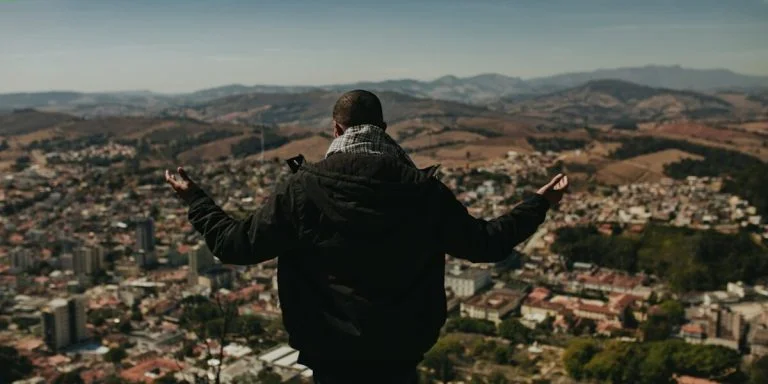
30 Day Spiritual Growth Challenge: A Journey Towards Inner Awakening
Embarking on a “30 day spiritual growth challenge” could be the transformative experience that brings you closer to your core self. This journey, designed specifically for individuals seeking inner change and deeper connection with their spirituality, offers daily practices aimed at enhancing personal development. The challenge is about exploring unseen aspects of yourself and venturing…

Purgative Stage of Spiritual Growth: A Deep Insight Into Its Meaning and Importance
Embarking on the journey of spiritual evolution involves traversing through various stages. One such crucial stage is the purgative stage of spiritual growth, a phase that every seeker encounters in their path towards higher consciousness and enlightenment. This initial step presents a profound cleansing process where one loosens ties with materialistic desires and cultivates virtues…
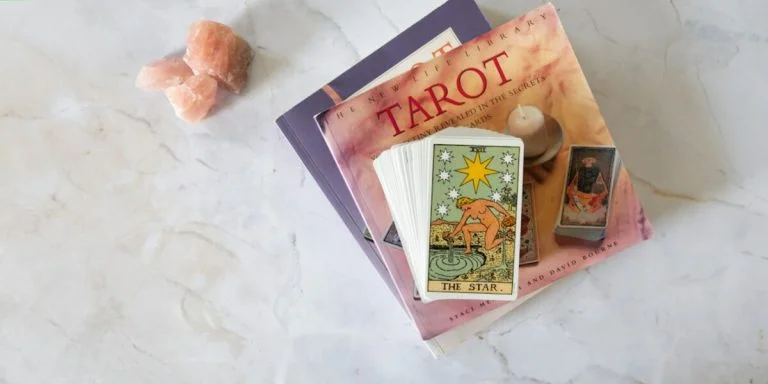
Symbols of Spiritual Growth: Identifying Your Personal Journey Into Enlightenment
Diving into the realm of spirituality often leads to encountering various symbols. These “symbols of spiritual growth” play an essential role as guides and markers on your path towards enlightenment, providing direction and meaningful insight. Understanding these symbolic indicators can deepen your awareness about yourself, contribute to personal development, and transform ordinary life experiences into…
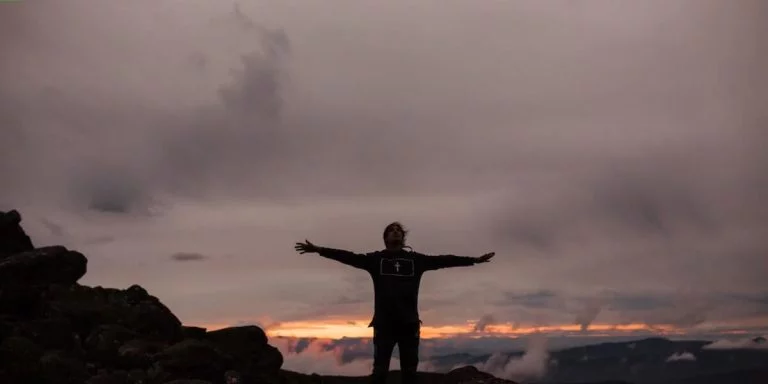
Spiritual Growth Sanaya Roman: A Journey Towards Inner Enlightenment
Spiritual Growth Sanaya Roman is a concept that delves deep into the realm of inner enlightenment, self-awareness and transformative evolution. Revered as an embodiment of spiritual development, this philosophy introduced by contemporary author Sanaya Roman is rooted in her extensive knowledge on metaphysics and personal progress. It emphasizes holistic advancement through fostering higher consciousness. Implementing…

4 Steps to Spiritual Growth: Unveiling the Path for Inner Enlightenment
Embarking on the path of spiritual development is a journey that can often seem filled with uncertainty. However, it doesn’t need to be complicated or overwhelming. Trusting in these “4 steps to spiritual growth” will guide you towards inner enlightenment and provide direction for those yearning for a higher level of consciousness. These four stages…
Understanding Spiritual Pain
It had been five years since I started at OSF HealthCare and I had never stepped inside the executive boardroom, but there I was, packed into this room with a variety of palliative and supportive care team members. As I looked around the room, I felt like the odd man out. It was like being at the big kids’ table for the first time; I kept my eyes down and my mouth shut unless I was asked a direct question.
I passed the time by listening and taking notes about topics we could use for this blog. One of the quietest, but most passionate speakers at the table was Sister Jacque (pronounced jack-ee) Schroeder and she kept referring to this term: spiritual pain.
I was intrigued so I sat down with Sister to chat about spiritual pain. Here’s what I found out…
What is spiritual pain?
Spiritual pain is the pain that comes from the “hidden” areas of our life. It can’t be pointed to on a pain scale, but it is still very real and can impact our physical and emotional health.
Spiritual pain is often broken down into four categories:
- Meaning – struggling with the “meaning” behind life, relationships, and the world around you
- Forgiveness – pain that stems from forgiving others, ourselves and God
- Relatedness – dealing with relationships, whether good or bad
- Hope – feeling like there is no hope or it doesn’t exist
Spiritual pain doesn’t discriminate based on gender or age; it affects everyone in different ways at all stages of life. As Sister put it, everyone is on a spiritual journey from the moment they are born and from that journey, we feel pain and, in turn, we grow. Our society doesn’t often emphasize this journey so we have a difficult time dealing with the pain when it becomes too much to handle.
Dealing With Spiritual Pain
After learning so much in a short time, I asked Sister if there was anything we can do for ourselves or as caregivers to others to keep spiritual pain from becoming too much. Her answer was simple, but powerful: breathe and be silent.
Once, when Sister was faced with some of the hardest choices in her life, she asked God for guidance, but the only response she received was “breathe.” Our society and our lives move much too fast these days so taking the time to just breathe gives us something to focus our minds and keep them clear so the answers we are seeking can rise to the top.
Hand in hand with breathing is silence. Again, we are bombarded with messages and “noise” all around us every day. Having a place to turn that off and just listen and breathe often creates that environment of spiritual and emotional healing we are looking for. As Sister put it, “God doesn’t need time to speak to us; we just need to find the time to be quiet and listen.”
Doctor, Heal Thyself
As caregivers, it is difficult to know how to treat every part of a patient. That’s why hospitals have social services, pastoral care, palliative care, and more in order to treat the entire patient. But, it’s important for all caregivers to remember one thing: we are the medicine we bring.
You have probably heard someone say, “You can’t help others until you help yourself.” This is true with doctors, nurses, and all of our health care providers. Once the caregivers take time to be silent, breathe and confront their own spiritual pain, then they are able to incorporate that into the medical treatments and coordinated care they provide at the bedside.
Last Updated: February 9, 2022
Mike, your efforts to help us understand spiritual pain through your interview with Sister Jacque are very appreciated! I believe that we as health care professionals often avoid this important domain of care because we were taught that “spirituality” is a personal thing not to be discussed. But in reality, patients with serious illness want us to address this domain of care, likely because it can bring them hope and healing outside of the physical domain.
Linda – I appreciate the compliment. I would agree that clinicians can often get wrapped up in “solving” the physical problem when all too often it isn’t always the physical pain that the patient suffers from. I am interested to see how the new health care environment may help or hinder this holistic approach to medicine.
1 Trackback
- Understanding Spiritual Pain – OSF Supportive Care Blog | All Things Palliative - Article Feed

A 501(c)(3) Nonprofit

A 501(c)(3) Non-profit Organization
Changing Humanity's Future
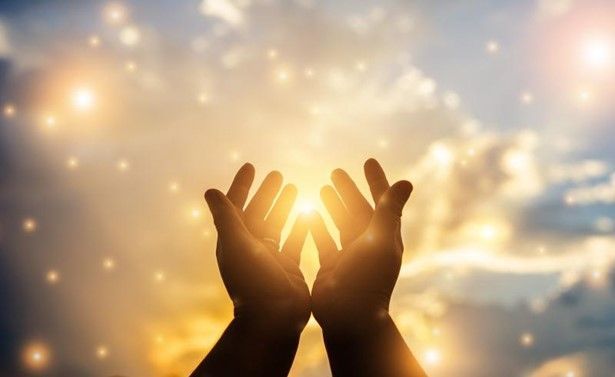
Exploring Spirituality: A Guide to Understanding and Practice
Welcome to Humanity's Team's exploration of spirituality. In this detailed guide, we'll delve into the most commonly asked questions about spirituality, offering insights and guidance for your own spiritual journey.
What is Spirituality?
Spirituality is a concept that transcends a single definition, encapsulating a myriad of personal beliefs and experiences. At its core, spirituality involves a sense of connection to something greater than ourselves, often leading to a quest for meaning in life. Unlike religion, which is often structured and doctrine-based, spirituality focuses more on individual belief and personal experience. It can include belief in a higher power, a sense of interconnectedness, a quest for self-discovery, and a lasting and beautiful search for answers to life's big questions.
How do we become more Spiritual?
Embarking on a spiritual journey is a deeply personal process. Central to this journey is the cultivation of inner awareness and mindfulness. This can be achieved through various practices including meditation, yoga, spending time in nature, or engaging in art and music. Helping to still the mind, these activities allow for introspection and a deeper connection with one's inner self. The key is to find the practices that most resonate with your soul and to incorporate them into your daily life.
What are the benefits of Spirituality?
Engaging in spiritual practices can lead to numerous benefits in both the mind and body. Studies have shown that spirituality can contribute to better mental health, reducing symptoms of depression and anxiety. It can foster a sense of peace and well-being, enhance our resilience against stress, and improve overall quality of life. On a physical level, certain practices such as meditation can lower blood pressure, reduce chronic pain, and enhance sleep quality.
Can Spirituality and Science coexist?
The relationship between spirituality and science is a fascinating area of exploration. While they may seem contradictory, many find that the two complement one another. Science offers a way to understand the physical world, while spirituality provides a framework for understanding the non-material aspects of existence. By integrating both, one can find a more holistic understanding of life and existence.
What is the difference between Spirituality and Religion?
Spirituality and religion, while related concepts, have distinct differences. Religion typically involves specific beliefs, rituals, and practices often centered around a deity or deities and is organized in a structured community. Spirituality, on the other hand, is more about an individual's personal relationship with the divine or the universe. It is a broader concept that can encompass religious beliefs but can also be entirely separate from them.
How do we meditate for Spiritual Growth?
Meditation is a cornerstone of many spiritual traditions and a powerful tool for personal growth. To begin meditating, find a quiet space and dedicate a few minutes each day to practice. Focus on your breath, a mantra, or even a candle flame, and gently bring your attention back whenever your mind wanders. The goal is not to empty the mind, but to observe it, understand its patterns and learn to be present in the moment.
What are Spiritual practices?
Spiritual practices are activities that deepen one's spiritual connection and understanding. These can range from traditional practices like prayer and fasting to more contemporary practices like eco-spirituality or volunteer work. The key is to engage in practices that feel meaningful and enriching to you, whether they are introspective practices like journaling or more active activities like community service.
How do we find a Spiritual Path?
Finding a spiritual path is a journey of exploration and discovery. It often involves reading about different spiritual traditions, experimenting with various practices, and reflecting on personal beliefs and experiences. It's important to remain open-minded and patient, as finding a path that resonates can take some time. Keep tuning into your intuition and trust that in time the right path will reveal itself to you.
What is a Spiritual Awakening?
A spiritual awakening is often described as a profound realization or shift in consciousness. It can manifest in various ways, such as a newfound sense of clarity, a deep understanding of one's purpose, or a feeling of unity with all existence. Such awakenings can be spontaneous or the result of prolonged spiritual practice. They often lead to significant changes in one's perspective and lifestyle.
How does Spirituality affect Mental Health?
Spirituality can play a vital role in mental health and well-being. It can offer a sense of purpose, provide comfort in times of stress or grief, and create a sense of community and belonging. However, it's important to approach spirituality in a way that is healthy and supportive of your mental health, recognizing that it's just one component of a holistic approach to well-being.
Discover Your Spiritual Path: A Personalized Quiz
Embark on a journey of self-discovery with our quiz. Answer these questions to uncover insights into your spiritual path and find practices that may resonate with you.
What draws you most in your exploration of spirituality?
A. Understanding the deeper meaning of life.
B. Feeling a connection with a higher power or the universe.
C. Finding inner peace and mental clarity.
D. Experiencing a sense of community and belonging.
Which activity do you find most fulfilling?
A. Reading and learning about different philosophies.
B. Spending time in nature.
C. Practicing meditation or yoga.
D. Volunteering or helping others.
Which qualities do you seek most in your spiritual practice?
A. Wisdom and knowledge.
B. Mystery and awe.
C. Calmness and balance.
D. Compassion and service.
How do you prefer to explore spirituality?
A. Through structured study or religious texts.
B. Through personal experiences and intuition.
C. Through guided practices like meditation or retreats.
D. Through community service and social activism.
When facing challenges, you prefer to:
A. Reflect and seek insights from various teachings.
B. Connect with nature or a higher power for guidance.
C. Engage in mindfulness or calming techniques.
D. Seek support from a community or group.
Mostly A's: The Seeker of Wisdom
You are drawn to the intellectual aspects of spirituality. You may find fulfillment in studying spiritual texts, engaging in philosophical discussions, and exploring various religious and spiritual traditions.
Mostly B's: The Mystic
Your path is one of personal experience and intuition. You may be drawn to practices that connect you with the natural world, contemplative activities, and an exploration of the mystical aspects of spirituality.
Mostly C's: The Inner Explorer
You value inner peace and balance. Mindfulness practices, meditation, and yoga might be particularly beneficial for you as you seek to understand your inner self and find tranquility.
Mostly D's: The Compassionate Activist
Your spirituality is deeply connected with community and service. Engaging in social activism, volunteering, and being part of spiritual communities align with your desire to make a positive impact on the world.
Remember, your spiritual journey is unique to you. This quiz serves as a starting point for an exploration into various practices and methods. I encourage you to blend elements from each area that resonate with your personal beliefs and experiences.
Resources offered by Humanity's Team to support Your Spiritual Journey
At Humanity's Team, we are dedicated to supporting your spiritual growth and exploration. Recognizing that each journey is unique, we offer a variety of resources tailored to meet the growing diversity of needs and interests:
Free Programs and Masterclasses
Our free programs are designed to provide valuable insights and teachings from renowned spiritual leaders and thinkers like Gregg Braden , Neale Donald Walsch , Michael Bernard Beckwith , Suzanne Giesemann , Nassim Haramein , James Van Praagh, and many more. These masterclasses cover a wide range of topics, from mindfulness and meditation to deeper philosophical discussions about spirituality and its role in today's world.
Humanity Stream+
Our streaming platform, Humanity Stream+ , offers a wealth of spiritual content at your fingertips. It features a diverse collection of talks, workshops, and documentaries focused on spirituality, interconnectedness, and personal development. This platform is an excellent resource for those seeking to deepen their understanding and practice of spirituality in daily life.
As we've explored these common questions about spirituality, it's clear that spirituality is a deeply personal and unique journey for each individual. We hope this exploration has provided valuable insights and guidance for your own spiritual path. Remember, the journey is as much about the process of discovery as it is about the destination. Be well on your journey, and Namaste.
< Older Post
Newer Post >
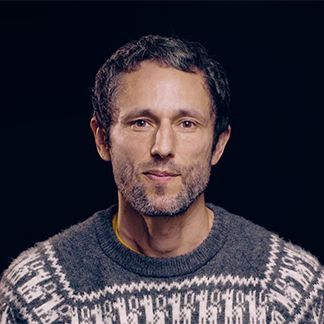
Ep. 213: ‘Rediscovering Our True Selves’ with Charles Eisenstein

Ep. 212: ‘Unlock Your Potential: Quantum Leap in Transformation’ with Pam Oslie
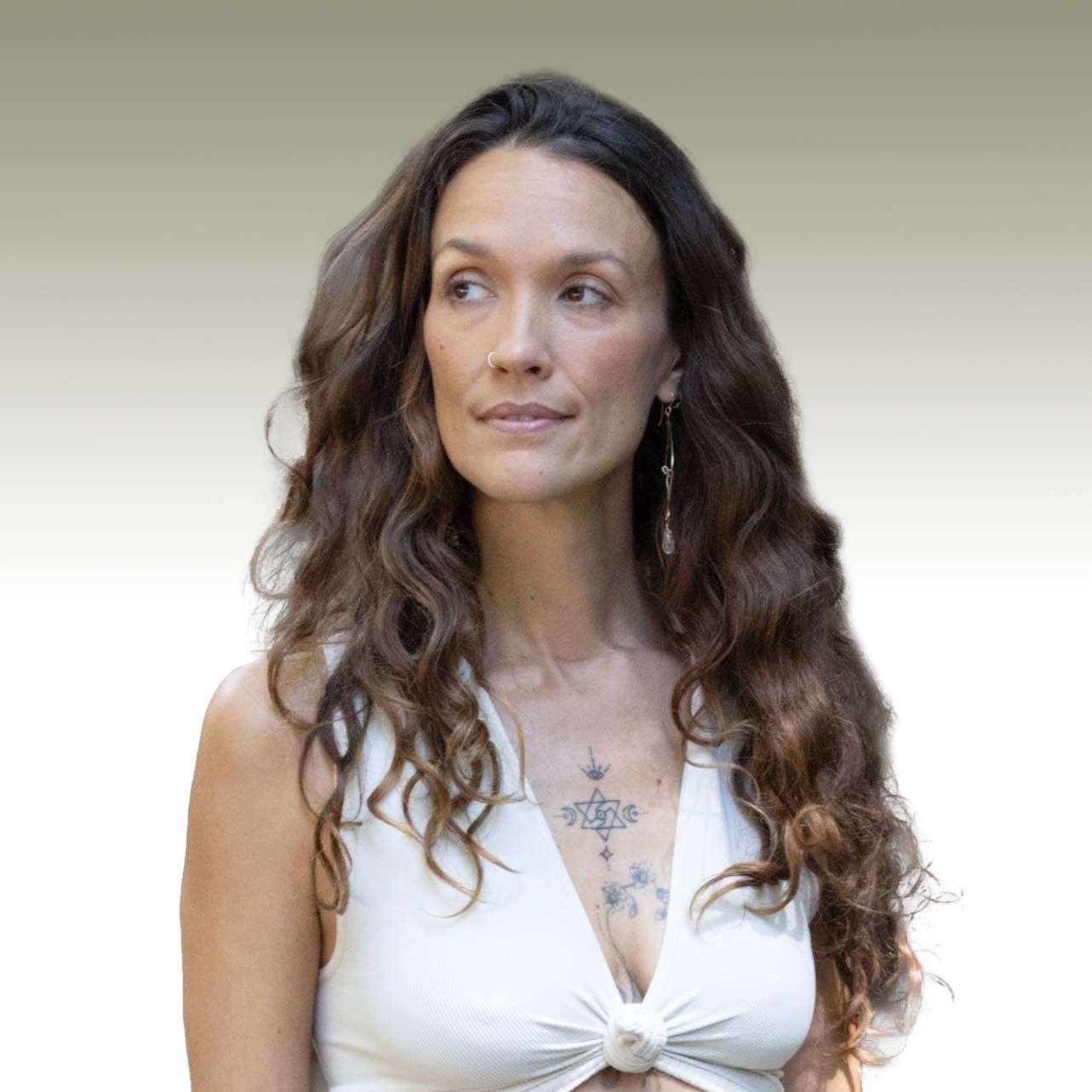
Ep. 211: ‘Collaborating with Nature’ with Sarah Wu

Ep. 210: ‘Saying YES to Living Our Ultimate Lives’ with Debra Poneman
Share this post!
HUMANITY'S TEAM BLOG CATEGORIES

From the Heart
with Steve Farrell
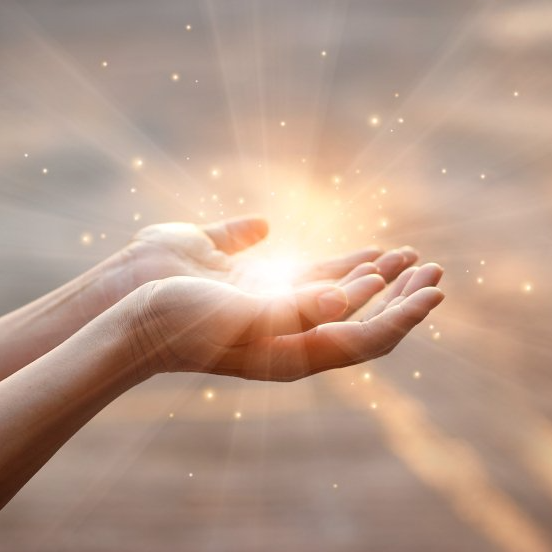
Conscious Thought Leaders
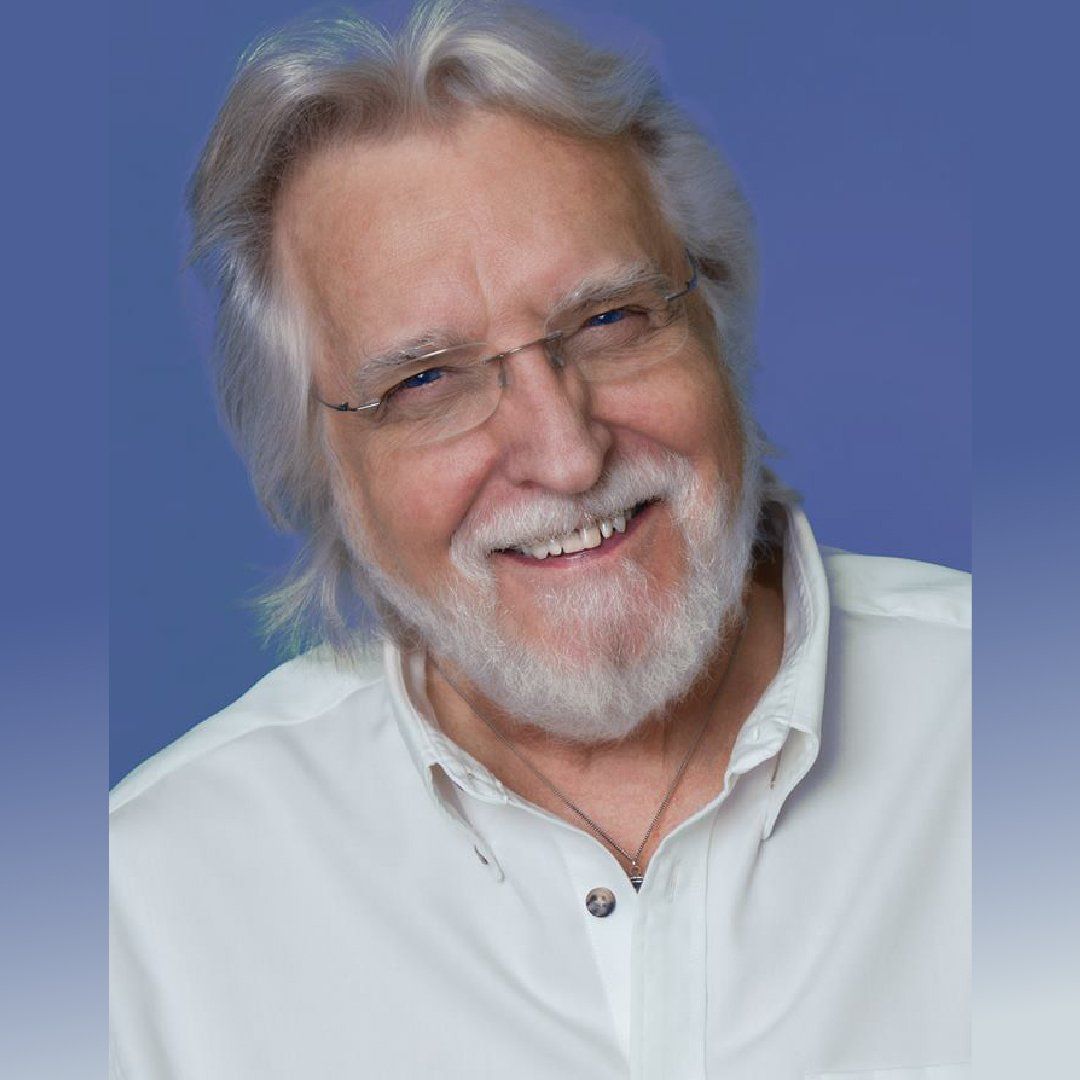
From The Desk of:
Neale Donald Walsch

Humanity's Team Leaders
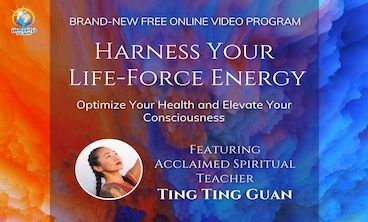
LISTEN TO ONE OF OUR RECENT PODCASTS
Sign up now so you never miss a blog post, podcast,
or free event with Humanity's Team!

The Unified Field’s Healing Power: Aligning with Love’s Vibrational Frequency

Ep. 209: ‘Envisioning a New Tomorrow’ with Gregg Braden and Nassim Haramein

Exploring Good vs. Evil: Navigating Today's Global Landscape

Oracles and Divination: Communicating with Your Higher Self
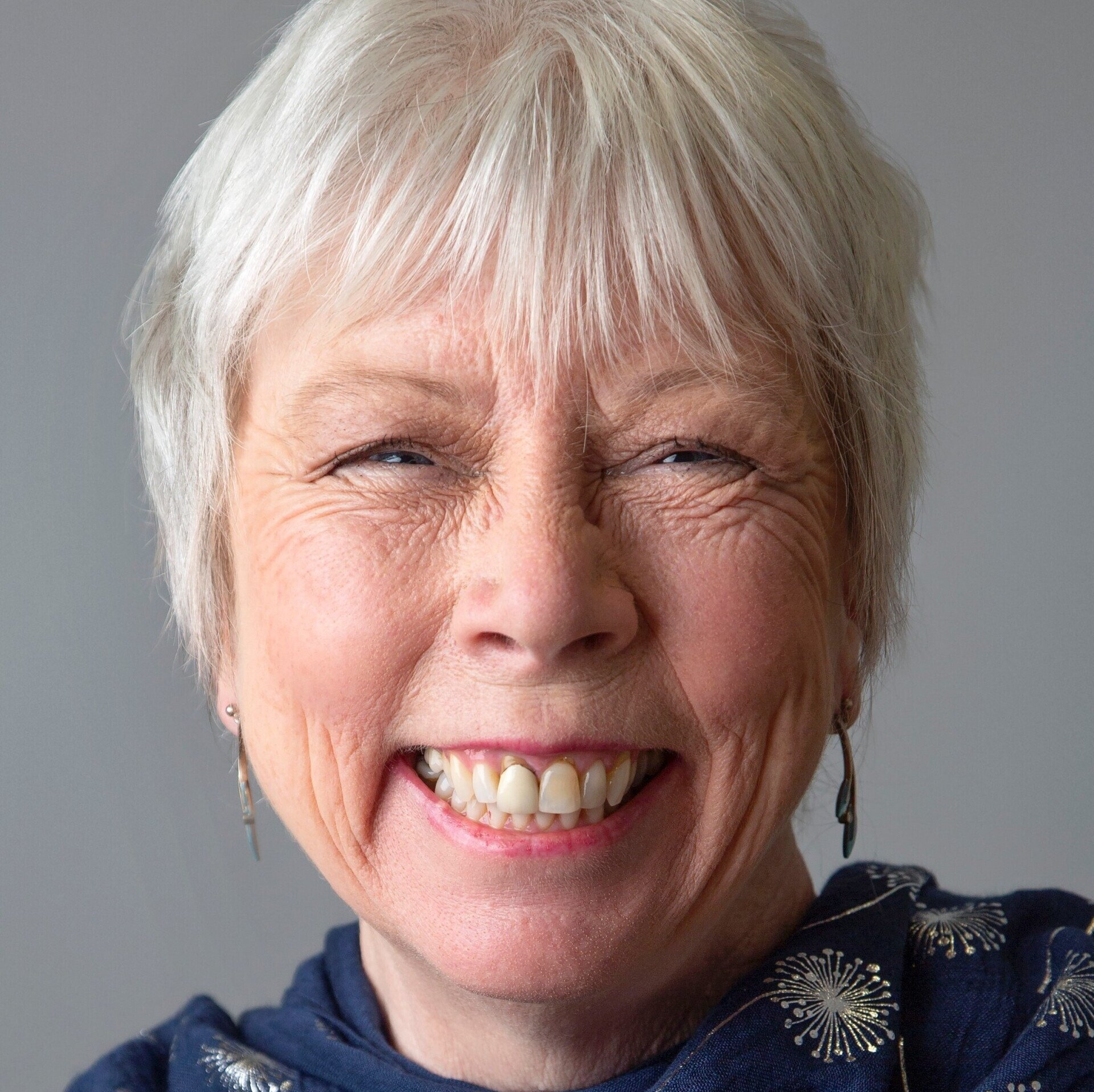
Ep. 207:‘Awakening our Cosmic Consciousness’ with Jude Currivan

Navigating the Ether: Exploring the Akashic Records for Spiritual Insight and Growth
Social media.
Humanity’s Team is a tax-exempt organization in the United States under Section 501(c)(3) of the Internal Revenue Code. Federal Tax ID: 86-1088741. Your donation is tax deductible to the extent permitted by law.
Humanity's Team, 2735B Iris Avenue Suite 3 Boulder, Colorado 80304 United States

- Spirituality of Chronic Pain
Awakening Resilience: Navigating the Spiritual Journey Through Chronic Pain
- September 14, 2023
Introduction
Chronic pain is a formidable adversary that tests the limits of physical endurance and emotional strength. Yet, within the realm of pain’s grip, individuals often embark on a spiritual journey that leads them to the wellspring of resilience within themselves. This journey is one of awakening—a profound exploration of the inner landscape, where the seeds of courage, hope, and transformation flourish. In this article, Dr Julian Ungar-Sargon delve into the spiritual journey of navigating chronic pain and the awakening of resilience that accompanies it.
The Catalyst for Inner Exploration:
Chronic pain serves as a catalyst, propelling individuals into the depths of their inner selves. As the external world becomes challenging to navigate, the spiritual journey offers an opportunity to explore the boundless potential of the inner world.
Shifting Perspectives:
The spiritual journey through chronic pain involves a shift in perspective. It’s about moving from a place of victimhood to one of empowerment. Instead of being defined solely by pain, individuals begin to see themselves as warriors who face their challenges with strength and grace.
Cultivating Mindfulness and Presence:
Mindfulness becomes a cornerstone of the spiritual journey through chronic pain. It’s the practice of fully inhabiting the present moment, accepting it without judgment. Mindfulness not only lessens the intensity of pain but also enhances one’s ability to cope with it.
Exploring the Depths of Acceptance:
Acceptance doesn’t imply surrender; rather, it’s about acknowledging reality and working with it. The spiritual journey involves exploring the depths of acceptance, allowing individuals to make peace with their pain and foster a sense of inner calm.
Finding Meaning Amidst Suffering:
Suffering can be a catalyst for profound growth and meaning. The spiritual journey through chronic pain invites individuals to uncover the lessons and insights that emerge from their experiences, shaping a narrative of resilience and purpose.
Connecting to Inner Strength:
The journey through chronic pain is an exploration of inner reservoirs of strength that may have previously remained untapped. It’s a reminder that the well of resilience is vast and that individuals possess the capacity to navigate challenges with courage.
Transcending Isolation:
Chronic pain can lead to feelings of isolation, but the spiritual journey is marked by a quest for connection. Whether through self-compassion, shared experiences with others, or a deeper connection to a higher power, the journey is a testament to the power of connection.
Transcending the Ego:
The spiritual journey through chronic pain often involves transcending the limitations of the ego—the voice that says, “I am my pain.” By rising above this identification, individuals discover a sense of expansiveness and freedom that empowers them to transcend suffering.
The Awakening of Compassion:
Compassion for oneself and others is a hallmark of the spiritual journey through chronic pain. It’s the recognition that everyone is navigating their own battles, and this shared human experience fosters empathy, connection, and a deeper sense of belonging.
Conclusion:
The spiritual journey through chronic pain is an odyssey of awakening resilience—an invitation to explore the depths of one’s inner landscape, to cultivate mindfulness, and to uncover the boundless strength that resides within. It’s a journey of shifting perspectives, finding meaning in suffering, and connecting to the wellspring of compassion that unites all beings. While chronic pain may be the catalyst, the spiritual journey becomes a testament to the human spirit’s capacity to navigate adversity with grace, to awaken resilience, and to emerge from the crucible of pain transformed and empowered.
Like this article?
- Skip to main content
- Skip to primary sidebar

- Spiritual Resources
Spiritual Awakening: 23 Major Signs + Symptoms
by Aletheia · May 18, 2024 · 237 Comments

Going through a spiritual awakening is one of the most confusing, lonely, alienating, but also supremely beautiful experiences in life.
Put simply, spiritual awakenings mark the beginning of your initiation on the spiritual path.
Without experiencing a spiritual awakening, we go throughout life pursuing the emptiness of money, fame, power, and respect in an attempt to find “happiness.”
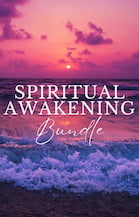
The unsettling and equally beautiful thing about spiritual awakenings is that they occur at the least expected times. There is no way you can plan for them. They lurch into your life and shake everything up like tornadoes.
But the hidden gift buried deep within them is that they occur at the precise time that you need them the most.
Spiritual awakenings are the soul’s cry for freedom.
Listen to its call and your life will be transformed into something meaningful and significant.
Refuse its call and your life will be like a graveyard.
If you have experienced a spiritual awakening, you have come to see through the lies and illusions of this world.
Deep in your soul, you realize that nothing external has ever, and can ever , bring you true happiness or fulfillment.
This profound realization leaves you craving for something richer, more fulfilling, and something that will make you feel whole once again.
If you’re looking for answers, if you’re thirsting for a direction in life, this page will share with you everything you need to know.
On this page, you will find all the possible spiritual resources you need for the beginning of your journey as a lone wolf and spiritual wanderer , including what spiritual awakening is, common spiritual awakening symptoms, and much more.

If you feel this page may help a friend or family member close to you, please share it and pass along this vital information.
If you prefer to listen to this article instead, we’ve created a video version of this article:
Table of contents
What is a spiritual awakening, my experience with the spiritual awakening process, why did your spiritual awakening happen, what triggers the spiritual awakening process, the dark night of the soul & awakening, 7 spiritual awakening stages, 23 spiritual awakening signs and symptoms, physical spiritual awakening symptoms, 3 spiritual awakening myths, spiritual awakening q&a, spiritual awakening and inner work, spiritual awakening book.

What is the meaning of ‘spiritual awakening’?
When we undergo a spiritual awakening, we literally wake up from the dreamlike reality of ego-centered living.
We begin to question our old beliefs, habits, and social conditioning, and see that there is much more to life and ourselves than what we have been taught.
It is common to ask questions such as, “Who am I?” “What is the purpose of my life?” “What happens after death?” “Why do good people suffer?” and other questions that examine the fundamental nature of life and reality during your awakening.
Spiritual awakenings stir the deepest and most significant questions within us that we have been putting off asking or have been too scared to touch.
Sign up to our LonerWolf Howl newsletter
Get free weekly soul-centered guidance for your spiritual awakening journey! (100% secure.)
If you’ve experienced a spiritual awakening, you might crave to find who or what you truly are deep down , as well as what the meaning of your life is, and whether there is a “higher state” of being.
Searching for God, or for the Divine, is a common desire during this experience.

I experienced the beginnings of my spiritual awakening in 2010. At that time, I was deeply indoctrinated into a world of fundamentalist religious teachings in the Christian sect I was born into.
After almost two decades of believing in the hellfire-and-brimstone teachings I was fed every week, something began to eat away at me suddenly.
I began to doubt, question, and sense that there was way more to life than my indoctrinated outlook, and I felt deeply lost and alone.
I had no one outside of the church that I felt comfortable talking to about my feelings. I had no true friends to confide in – and my family didn’t understand – or rather, didn’t want to.
As a result, I felt so alienated and suffocated with loneliness that I developed depression, health issues, OCD, and chronic anxiety, the latter lasting for many years.
Like Neo in the movie The Matrix , I was being offered the red and blue pill. Should I continue taking the blue pill and remain in my comfortable ignorance? Or should I take the red pill and be free (but experience the pain of waking up)?
Long story short, I chose the red pill. It wasn’t easy at first. I would often carry the unshakable sensation that I was falling endlessly through a void of darkness.
The Dark Night of the Soul descended quickly upon me, and I felt abandoned by life and betrayed by those closest to me. Ultimately, I had no fucking idea what was happening and thought for sure I was losing it (or would burn in hell for eternity).
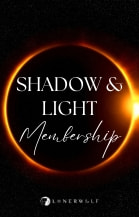
Shadow & Light Membership:

But in the end, going through this process of spiritual awakening was worth all the pain and sacrifice. No regrets.
The amount of growth, love, transformation, and freedom I’ve experienced since choosing the ‘red pill’ has been totally mind-blowing, life-changing, and profound.

So, why do spiritual awakenings happen in the first place?
Spiritual awakenings happen as a natural product of your Soul evolving, expanding, and maturing. Just as everything in life grows, so too does our connection with our Souls.
As our Soul organically matures and ripens, we find it more effortless to access the field of pure Consciousness that some call Spirit, Source, or Nondual Awareness, which is our original home and True Nature that is already and always here.
Once we begin to see and truly feel that who we really are goes beyond thought , we begin to drop ego identification, returning back to our birthless and deathless True Nature as Life Itself.
It is then that we taste the true and deep joy , peace, love, and freedom that we have always wanted, but have misguidedly sought in the material world and realm of thought.
While the spiritual awakening process can feel painful and disturbing at first, it ultimately helps you to break through illusion and find out who you truly are.
The sensation that your life doesn’t make sense anymore is the product of having all of your former beliefs, desires, and paradigms challenged and often disproven. This is traumatic, but a necessary part of your expansion.

Free Spiritual Awakening Journaling Prompts!
Want to go deeper and reflect, integrate, and gain a greater perspective of your journey of awakening?

You might be curious to know what activates a spiritual awakening.

The answer is that innumerable circumstances can trigger this process! There really is no one answer.
Spiritual awakenings can happen at any moment or period in your life. They can be spontaneous, but they can also be triggered by major life changes , illnesses, tragedies, and traumas such as life-threatening illnesses, car accidents, divorces, war, midlife crises , and much more.
Awakening can also happen due to your temperament. For instance, you might be a naturally contemplative person, an introspective spiritual wanderer , or a sensitive empath who is, by nature, particularly receptive to seeing beneath the surface of life.
Furthermore, for some people, spiritual awakenings are even triggered by deep but challenging soul mate or karmic relationships .
Generally speaking, the spiritual awakening process happens in conjunction with an experience known as The Dark Night of the Soul.

If you’re highly sensitive to the suffering of others and are a deep thinker by nature, it is possible that you have gone through, or are currently going through, a Dark Night of the Soul.
The Dark Night of the Soul is a period in life when we feel completely cut off from God or the Divine.
The more aware you become of your disconnection from the Divine, the more chances you have of experiencing a Dark Night of the Soul.
Going through a Dark Night of the Soul is profoundly entwined with the process of spiritual awakening.
Before seeing the light (i.e., spiritually awakening) we must “walk through the valley of the shadow of death” in order to prepare our minds and hearts for the expansion of consciousness.
If this post has inspired or helped you in any way, we'd be incredibly grateful if you would consider donating to keep us alive and running. LonerWolf has been a two-person labor of love for 12 years so far. Any amount, big or small, would mean the world to us.
Just think about the analogy of getting dressed. In order to put on new clothes, you must take off the old ones. That, in a nutshell, is essentially what the Dark Night of the Soul is about.
The old must be stripped away in order to make way for the new. This means that the suffering you experience during the Dark Night of the Soul is for a purpose – and that is the destruction of the old (outdated beliefs, identities, habits) to pave the way for fresh ways of being.
This life is a cycle of birth and death. As such, going through the Dark Night is not a pretty or manicured experience – at its core, it’s raw, primal, and perhaps the most difficult experience known to humanity.
Everything is stripped away from you. There is no light, no clarity, and no peace. But please know that it is a stage , and like everything in life, it will naturally fade.
Also, there are ways of speeding up the Dark Night (like doing inner work and soul work ).
I have gone through a bleak and chaotic Dark Night of the Soul, and let me tell you, inner work and soul work were vital for my sanity.
It’s kind of like the difference between letting your old clothes just fall off you (which is a long, unhygienic, and tiresome process) or actively pulling them off and throwing them to the wind yourself.
However, please note that sometimes doing any kind of work, internal or external, can feel taxing and quite simply impossible during the Dark Night.
Sometimes rest and withdrawal are what we need the most, and that is perfectly normal, healthy, and fine.
Signs you might be experiencing a Dark Night of the Soul (along with a spiritual awakening) include the following:
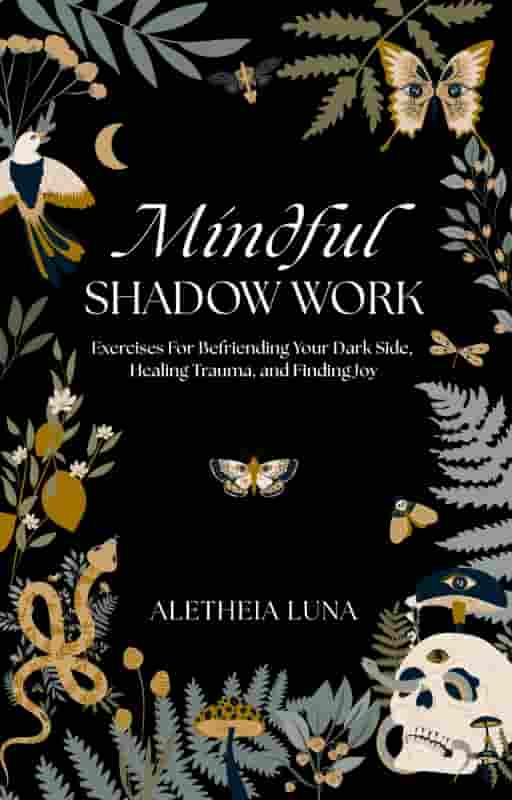
- You feel isolated from everything (others, yourself, and life in general)
- You feel abandoned by god/the divine
- Your mood is almost always low and melancholic
- You’re lost and don’t know which direction is right
- You feel despair and horror when observing the world
- You feel a sense of existential dread
- You feel deep tiredness in your bones
- You lack the motivation to keep doing what you used to
- You’ve lost interest in most things
- You keep pondering the deep questions of life (e.g., “What is the purpose?”)
- You feel like you don’t belong on this planet
This list is not exhaustive, so keep in mind you might be experiencing signs that aren’t included here.
You can take our free Dark Night of the Soul test if you need more clarification.
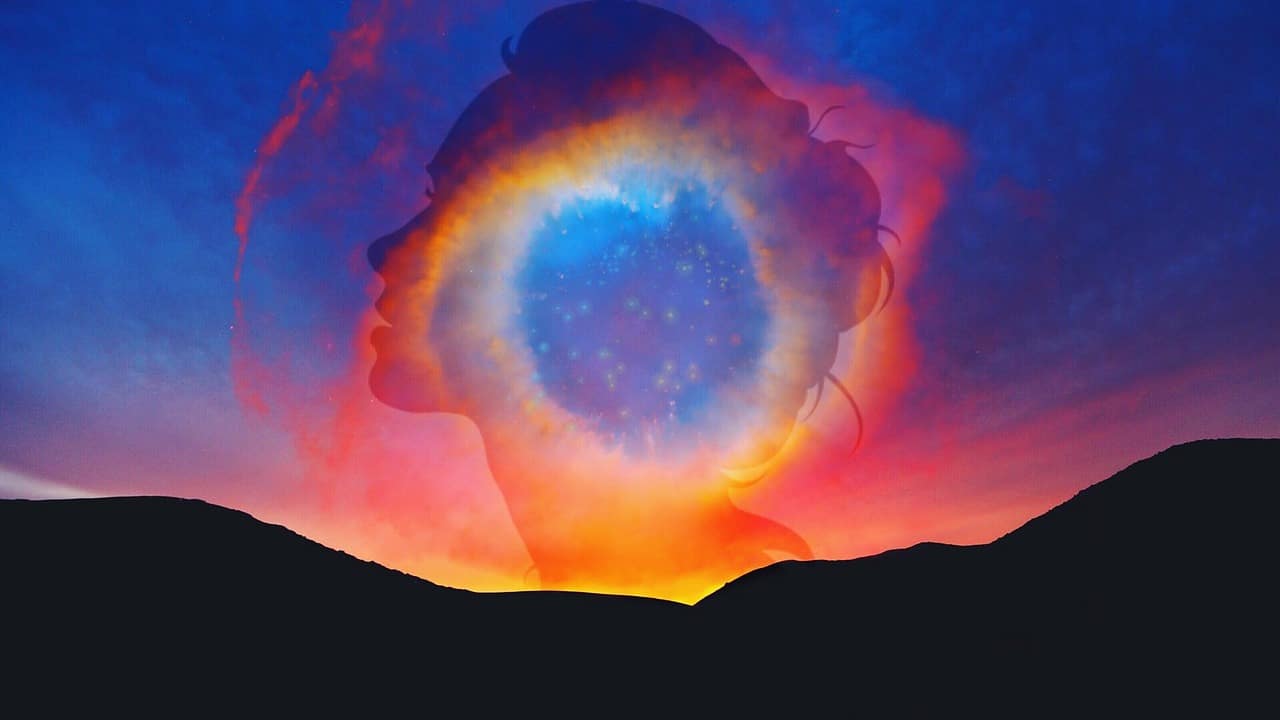
The spiritual awakening process is complex, multi-layered, and different for everyone. In reality, it cannot be fit into neat categories.
However, with that being said it is helpful to have a kind of “map” to locate where you’re at right now.
The following stages are general. They define the overall flow of the spiritual awakening process:
Stage 1 – Unhappiness, despondency, and feeling lost
In this stage, you experience the Dark Night of the Soul. This is a time of confusion, disconnection, alienation, depression, and great unhappiness with life. You are searching for something, but you don’t quite know what. There is a great looming emptiness inside of you. This stage either emerges spontaneously or due to a life crisis (e.g. breakup, divorce, death, trauma, illness, major life change).
Stage 2 – Shifting perspectives
You start to perceive reality in a totally different way. In this stage, you start seeing through the lies and delusions propagated by society. You feel unhappy with life, disturbed by the suffering you see, and hopeless about the ills of the world. You no longer see life as you once did in your previous state of complacent unawareness.
Stage 3 – Seeking answers and meaning
There must be a point to all this, right? In this stage, you’re asking all the deep questions. You are in search of who you truly are, your spiritual destiny, and the meaning of life itself . You will start dabbling in different metaphysical, self-help, and esoteric fields in the search for answers and truth. Your focus is on beginning your spiritual search.
Further reading: What is Spirituality? (EVERYTHING You Need to Know)
Stage 4 – Finding answers and experiencing breakthroughs
After a lot of soul searching , you’ll find a few teachers, practices, or belief systems that ease your existential suffering. (Beware: a lot of spiritual bypassing can occur in this stage.) You will feel a sense of expansion as old patterns dissolve and your True Nature begins to emerge. You may have a number of mystical experiences or brief moments of Satori ( spiritual enlightenment ) that give you a glimpse into the ultimate nature of reality. This is a time of joy, hope, connection, and awe.
Stage 5 – Disillusionment and feeling lost again
Life is about movement. With the spiritual awakening process, there is always an ebb and flow. In this stage, you become bored and tired of your spiritual teachers or practices. You may become disillusioned by the faux spiritual BS out there and crave something deeper.
You may have even experienced long periods of connection with the Divine, only to become apparently separated again (this is normal). Understandably, you’ll feel disturbed and deeply upset by this experience.
Additionally, while you may have experienced many mental/emotional/spiritual breakthroughs, they might feel superficial.
You crave authenticity and deep spirituality that permeates your life and transforms every part of you. The unhappiness and stagnation you feel will motivate you to go in search of more.
Stage 6 – Deeper inner work and soul work
In this stage, you’re not interested in dabbling in feel-good spiritual philosophies or surface practices anymore. The abiding pain you feel inside motivates you to do deep inner work and soul work. You may become a serious student of meditation, mindfulness, non-duality, inner child work , shadow work , body work , or various other transpersonal philosophies.
Stage 7 – Integration, expansion, joy
Integration means taking the spiritual lessons you’ve learned from your inner work and soul work and applying them to your daily life. Integration happens both naturally and consciously as a habit in deep spiritual practice .
In this stage, you’ll experience the most profound and long-lasting changes deep within. Many people experience prolonged mystical experiences and periods of unity with the Divine in the integration phase.
Remember that enlightenment, or full Self-realization , is never guaranteed: we can strive for it, but it is ultimately a gift from Life. Nevertheless, profound peace, love, and joy emerge and are felt in this stage.
You may feel ready to be a spiritual helper of some kind and pass on your insight to others. Life will become less about you and more about We .
You may undergo an energetic shift in awareness, and you may start to experience life from an undivided point of view. Above all else, you will feel connected, at peace with yourself, and deeply aligned with life.
Note: it is common to move back and forth between these spiritual awakening stages. Remember that this is not a linear process – you cannot just move from A to B to C.
This is a complex and messy path, so it’s perfectly fine if it doesn’t look like what I’ve described. Your spiritual awakening process is unique to you . But I do hope this analysis has helped (in some way) you to ‘gain your bearings.’

There are many spiritual awakening symptoms. In fact, spiritual awakening symptoms are not only emotional but also psychological and even physical.
Here are twenty-three of the most common symptoms out there. See how many you can identify with:
- You feel as though your life is false
- You craving for meaning and purpose
- You begin asking deep questions like “Who am I?”
- You realize that a lot of what you’ve been taught is a lie
- You feel completely lost and alone
- You see through the illusions of society
- You see how unhappy most people are
- You want to ‘purge’ your life
- You begin experiencing deep empathy and compassion
- You desire to be alone
- Conversations seem shallow
- You want to quit your job
- You thirst for authenticity and truth
- You become aware of your old negative habits
- You experience anxiety and/or depression
- You become more sensitive
- You want to make the world a better place
- You deeply want to understand who you are
- Your intuition is heightened
- More synchronicity
- You feel more wonder, love, and curiosity
- You have glimpses into your True Nature
- You see that we are all One
I’ll expand on these signs below:
1. You feel as though your life is false
Everything that you have believed, built, and worked towards seems to be false. Your life doesn’t feel as though it’s your own. You no longer feel like yourself – nearly everything you once enjoyed no longer brings you meaning or satisfaction.
2. You craving for meaning and purpose
You deeply desire to find the meaning of your life. You have no idea what your purpose is, but you want to find it desperately. There’s a sense that something is “missing” inside of you (like a part of your soul ).
3. You begin asking deep questions
Questions such as “Who am I?” “What’s the purpose of life?” “What happens after we die?” “Why do people suffer?” arises. You begin thinking more philosophically. Such profound thoughts may greatly disturb you as you don’t know the answers.
4. You realize that a lot of what you’ve been taught is a lie
You start to see how many beliefs, feelings, and values are not actually your own, but other people’s or inherited from your culture. You are growing in self-awareness .
5. You feel completely lost and alone
Nothing in your life seems to make sense anymore. You feel as though you’re wandering through an endless wilderness. As a spiritual wanderer and lone wolf, you feel completely alone and cut off from people. You struggle to relate to those you once felt close to (i.e., your friends, work colleagues, and family members).

6. You see through the illusions of society
Materialism, success, and profit no longer mean anything to you. You start feeling as though you’re a cog in the machine of society.
7. You see how unhappy most people are
You awaken to the unhappiness and suffering of others. You may start to explore activism or read more about the human condition. It is tormenting for you to realize how much pain there is in the world.
8. You want to ‘purge’ your life
You’re sick and tired of feeling stranded, depressed, and hopeless. Suddenly, you feel the need to simplify and declutter your life. This could mean cutting ties with toxic people, reassessing your habits, donating old things, relocating to a new job or place to live, or even giving away most of what you own. Wanting to purge your life doesn’t always happen externally, but it is a deeply felt internal craving that also manifests as the desire to experience some level of internal purification.
9. You begin experiencing deep empathy and compassion
As you start paying more attention to the many hardships faced by humanity and nature alike, you develop more compassion. Your inherent empathy is awakened, and you may find it hard to cope with the intensity of your feelings. This is a pivotal point in your inner transformation: you either numb the pain you feel with addictions, or you find healthy ways to accept and express your emotions.
10. You desire to be alone
You crave solitude . Whereas once you may have been extroverted, now you experience the introverted side of your nature. You spend a lot of time alone introspecting and enjoying the silence. At every cost, you try to reduce social contact. At this point, you may lose touch with many old friends and even family members.
11. Conversations seem shallow
When you do talk to people you feel an acute sense of separation. You realize that very few people are comfortable with talking about deep and meaningful topics. In conversations, you feel restless and irritated by the small talk. You silently scream, “ Can’t anyone wake up and realize what is happening? ” Your distaste for frivolous chit-chat draws you more into solitude. You become a lone wolf and rebellious free spirit .
12. You want to quit your job
Even though you worked for years getting your degree, establishing your career, and climbing the ranks, you feel nothing but emptiness. Your job no longer provides you the sense of fulfillment that you need. You desperately crave more.
13. You thirst for authenticity and truth
Being true to yourself becomes a top priority. You hate faking and putting on the old masks that you used to wear. You want to be completely authentic . Pretense makes you feel sick and disgusted.
14. You become aware of your old negative habits
You are painfully aware of your flaws and destructive habits. Within you arises a strong urge to wipe the slate clean and start over.
15. You experience anxiety and/or depression
You may go through deep bouts of existential depression or persistent anxiety. The shock of plunging into your awakening leaves you feeling unstable. You may be misdiagnosed with a mental illness. Uncertainty and fear follow you around everywhere.

16. You become more sensitive
Everything impacts you more. You feel the energy of others more strongly, the pain of your loved ones more intensely, and the difficulties in life deeper than ever before. At the same time, you feel a gloriously enhanced connection with animals and nature. You start feeling more at home within the natural world (rather than the human world).
17. You want to make the world a better place
When all is said and done, you want to leave the world a better place. You start thinking ‘big picture.’ This longing to make a real impact translates to actively helping others or finding a life purpose that aligns with this desire.
18. You deeply want to understand who you are
Endless questions arise about your identity and your life, for example, “Who am I?” “Why was I born?” “What am I here to do?” “What is the purpose of my existence?” As a result, you begin reading many self-help books and spiritual texts. No wonder you ended up here. :-)
19. Your intuition is heightened
Gradually you begin to listen to the still, small voice within. You allow it to guide your decisions and you may become more receptive to the messages of your unconscious mind through dreams, physical sensations, and practices like journaling or meditation. You may even come in contact with your spirit guides , spirit animal , or other spiritual helpers. Eventually, you start to uncover your hidden gifts and talents thanks to learning how to trust your intuition .
20. More synchronicity
You start becoming conscious of the many signs and omens that life brings to you. Life becomes much more receptive and interactive with you. Serendipity and déjà vu increase. You may even undergo numerous mystical experiences.
21. You feel more wonder, love, and curiosity
The smallest things start to bring you joy and bliss: a falling leaf, a spider’s web, a child’s laughter, a puddle. Life is no longer ignored – it is seen as magical, amazing, and beautiful. As the barriers of the ego break down, you begin to love other people without expectations or conditions (this includes self-love ). You lose interest in drama, conflict, and anything that perpetuates hatred.
22. You have glimpses into your True Nature
The deeper you turn inwards, the more you begin to discover that who you truly are goes beyond all thought, belief, idea, memory, or mental construct. As the layers of the ego and the blockages that obscure your inner Light begin to dissolve within the light of awareness, you begin to glimpse your true eternal nature.
Shifting out of the personal ego and witnessing life from the seat of Divine Consciousness is known as ego death , Self-realization, or enlightenment – and such an experience can be temporary or permanent.
23. You see that we are all One
As your awakening process matures and ripens, you begin to integrate the realization that who you truly are is always and already here as Spirit, Consciousness, or Life Itself. You see that we are all One, we are all expressions of the same Divine Source, and we have never been separate from this reality (the mind has only believed that to be the case).
As you begin to drop identification with thought, realize that the separate self isn’t ultimately true, and surrender back into the Now, you find the peace, love, and freedom you have always longed for. You find home at last, right here, right now.

Physical signs obviously differ for everyone. Here are a few symptoms that I have observed within myself and many others who have begun the spiritual awakening process:
- Amplification of sense. For example, your sight, hearing, taste, touch, and/or smell become intensified. You may even discover that you’re an HSP (Highly Sensitive Person) .
- You discover food intolerances that you never seemed to have before (or perhaps weren’t paying attention to). E.g. Allergies to wheat, nuts, legumes, soy, spices
- Changed sleeping patterns, i.e. you sleep more or experience more disrupted sleep, often causing insomnia
- Vivid dreams – your dreams become scary, bizarre, or intense
- Dizziness – feeling lightheaded as a result of being ungrounded during the day
- Weight change – either gaining or losing a lot of weight
- Changed eating habits – what you once liked eating no longer appeals to you. Also, you may crave to experiment with other foods that you’ve never tried/liked
- Fluctuations in energy – feeling less energized than you used to
- Decreased or increased sex drive
- Decreased immune function (more illness)
It is uncommon to experience all of these physical spiritual awakening symptoms at once (one or two is more likely).
If you have noticed a rapid change in your health during this period, it might be due to the drastic change in your mind-body-soul connection.
If no logical everyday reason can be found (such as prior illness, family stress, injury, relationship meltdown, etc.), don’t rule out a more metaphysical explanation.
If you’d like to confirm that you’re going through a spiritual awakening, feel free to take our Spiritual Awakening Test .

There’s a lot of information out there on the internet about spiritual awakening symptoms, what spiritual awakening actually is, and so forth.
As someone who has undergone an awakening process and guided many others on their spiritual journeys , here are some of the top spiritual awakening myths out there:
- Myth 1 – Once you spiritually awaken, you become instantly enlightened . Reality : Enlightenment, for most people, happens gradually in waves. We go through layers and cycles of shedding the past and growing into our ‘new skin.’ In some rare cases, enlightenment (or union with our True Nature ) happens just like that. However, the awakening process is a slow and steady process of spiritual alchemy for the vast majority of people.
- Myth 2 – Being spiritually awake means always experiencing love, light, and bliss. Reality : Yes, we might go through periods of love, light, and bliss. But these experiences are temporary: they come and go. It’s unrealistic to expect ourselves to only ever experience one kind of state as we are multi-faceted beings. And that’s okay.
- Myth 3 – Only a rare and elite variety of people experience awakening symptoms. Reality: You’d be surprised how many people have gone through spiritual awakenings. It’s not an experience that’s reserved for the ‘elevated,’ rich, or ‘special’ people. It can happen to literally anyone in any circumstance.
Let me know if I’ve missed out on any spiritual awakening myths in the comments below!

Here are the answers to some commonly asked questions:
There are many reasons why the spiritual awakening process happens. Major life changes, tragedies, losses, health crises, marriage, divorces, and other milestones can often trigger a new outlook on life. Whatever the case, spiritual awakenings occur when the soul is ready to surrender into the Absolute – and that occurs at different moments for everyone ( if it happens at all).
The spiritual awakening process is said to be a lifelong journey – once it begins, it never ends. However, the intensity of awakening varies, and often we go through quiet and calm periods, followed by chaotic and intense periods of change. It’s important that we honor this ebb and flow of transformation, seeing it as a vibrant and ever-flowing journey, not a static and one-off destination.
After undergoing a spiritual awakening, it’s important that you explore all the different spiritual paths available to you. Go with your heart and instincts, and choose a path that calls to your deepest needs. It’s also crucial to practice some form of inner work while walking your own path to ensure that you’re evolving, staying grounded , and healing inner wounds that may sabotage your progress.
There are many reasons why you may have had a spiritual awakening. We know that awakenings are triggered by big life changes, breakdowns, breakthroughs, and traumatic situations. But why you had a spiritual awakening is simple: Life decided you were ready to finally wake up.
The spiritual awakening journey is the process of both being and becoming on the level of Soul and Spirit. On the level of Soul , we’re like a snake shedding its skin or a caterpillar going through a metamorphosis. This process of becoming is an awkward and painful process because it involves a lot of inner exploration, seeing through our shadows, and finding the courage to embrace who we are. On the level of Spirit , the spiritual awakening journey is focused on being, where the separate sense of ‘you,’ the egoic consciousness, is dying and revealing more and more of who you truly are beyond thoughts, feelings, and identifications. As the ego begins to dissolve, your True Nature begins to shine through – also known as Spirit, Nondual Awareness, or Divine Consciousness. So essentially, you’re going through a spiritual awakening journey because your Soul needs to grow, mature, and expand on a human level, and on a spiritual level, the journey is about rediscovering Spirit as your True Nature. Staying the same equals death and stagnation. Changing and letting go (even though it’s painful!) is a good thing. Not only will you eventually feel more connected to everything, but you’ll have the opportunity to find your true home, which is always and only found in the present moment.

Spiritual awakenings mark the beginning of our spiritual paths as lone wolves and spiritual wanderers.
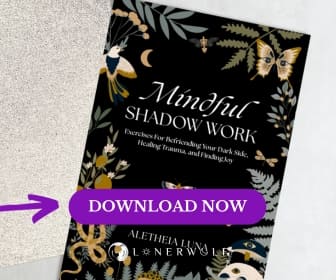
But you might be asking yourself, “What do I do now?”
If you need more spiritual guidance , consider this entire website your personal guide that is available 24/7! We have hundreds of articles that can help you. But where to start? We recommend beginning with something called inner work.
Inner work is the psychological and spiritual practice of diving deep into your inner self for the purposes of self-exploration, self-understanding, spiritual healing , and transformation. It helps to deepen and mature your process of spiritual awakening.
We write a lot about how to do inner work on this website. You can find the main resources to help you begin below:
- What is Inner Work?
- How to Love Yourself (Ultimate Beginner’s Guide)
- 25 Signs You Have a Wounded Inner Child (and How to Heal)
- Shadow Work: The Ultimate Guide + Free Psychological Test
There are many other practices that can help you start your inner work, some powerful examples being breathwork and journaling every day. The key is to find what empowers and supports you .
If you need more direct support on your path, I recommend checking out our highly-rated spiritual guidance offering, the Shadow & Light Membership .

Does your spiritual awakening make you feel lost , overwhelmed, and alone in this world? We wrote The Spiritual Awakening Process to help newly-awakened people gain the knowledge and tools necessary for finding peace, hope, clarity, and deep inner healing.
In The Spiritual Awakening Process , we walk you through the beginning stages of reconnecting with the loving and eternally wise place within you known as your Soul. Some of the topics covered include:
- What is happening to you
- Why you’re experiencing a spiritual awakening
- The three internal spiritual worlds to explore
- How to retrieve and integrate any fragmented pieces of your psyche
- What spiritual “traps” you need to be mindful of, and
- How to communicate with your soul
Click here to learn more!
This book is printable (PDF file) and digital (you can read it on your phone, laptop, etc.).
From the bottom of my heart, I hope this article has helped to support you in some way during your process of awakening.
Please know that you’re not alone. You’re not going crazy. And we’re here to help and support you – in fact, this entire website is. It’s our mission and purpose in life.
So please, feel free to reach out. Let me get to know you and your story. I’d love to hear from you below!
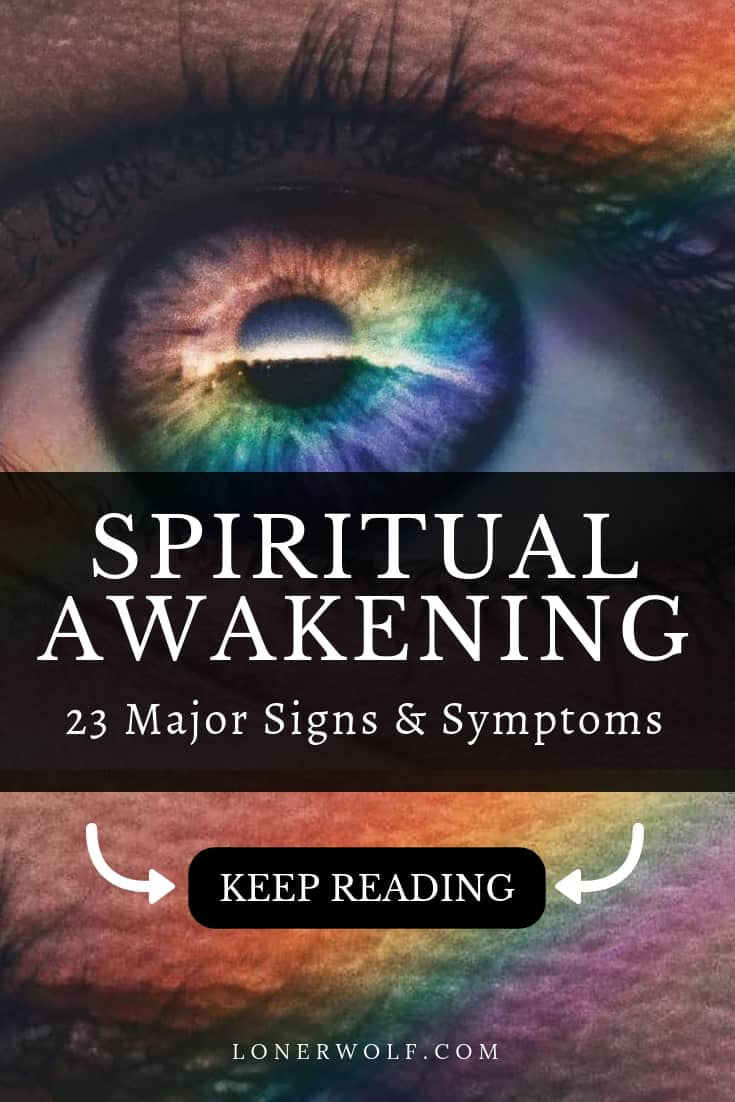
More Starting The Journey

About Aletheia
Aletheia is a prolific psychospiritual writer, author, educator, and intuitive guide whose work has touched the lives of millions worldwide. As a survivor of fundamentalist religious abuse, her mission is to help others find love, strength, and inner light in even the darkest places. She is the author of hundreds of popular articles, as well as numerous books and journals on the topics of Self-Love, Spiritual Awakening, and more. [Read More]
Support Our Work
We spend thousands of dollars and hundreds of hours every month writing, editing, and managing this website – you can find out more in our support page . If you have found any comfort, support, or guidance in our work, please consider donating as it would mean the world to us:
Custom Amount:
I'd like to receive your latest weekly newsletter!
Good morning Aletheia This is so wonderful and not able to really tell how it has given insight to me. I have been through this disillusionment of life. May talking more later. Thank you very much
I’m going through the monks vow of poverty, I guess…kinda doing this on my own. For quite some time now, but I feel the last seven years have made me a believer in something extraordinary. Let me just say, “I thank God, Jesus, Self, other , and most of all the Universe.”so just to cover all the bases right??
An official website of the United States government
The .gov means it’s official. Federal government websites often end in .gov or .mil. Before sharing sensitive information, make sure you’re on a federal government site.
The site is secure. The https:// ensures that you are connecting to the official website and that any information you provide is encrypted and transmitted securely.
- Publications
- Account settings
Preview improvements coming to the PMC website in October 2024. Learn More or Try it out now .
- Advanced Search
- Journal List
- Springer Nature - PMC COVID-19 Collection

Spiritual Pain: A Symptom in Search of a Clinical Definition
Marta illueca.
1 The Episcopal Diocese of Delaware, 913 Wilson Rd, Wilmington, DE 19806 USA
Ylisabyth S. Bradshaw
2 Department of Public Health and Community Medicine, Tufts University School of Medicine, 136 Harrison Ave, Boston, MA 02111 USA
Daniel B. Carr
We conducted a literature search to identify and compare definitions of the experiential dimension of spiritual pain. Key databases were searched, up to the year 2021 inclusive, for papers with a definition of “spiritual” or “existential” pain/distress in a clinical setting. Of 144 hits, seven papers provided theoretical definitions/descriptions; none incorporated clinical observations or underlying pathophysiological constructs. Based on these findings, we propose a new definition for “spiritual pain” as a “self-identified experience of personal discomfort, or actual or potential harm, triggered by a threat to a person’s relationship with God or a higher power.” Our updated definition can inform future studies in pain assessment and management.
Introduction
Spirituality is becoming a focus of increasing inquiry in medicine. Currently, the National Center for Complementary and Integrative Health (NCCIH) has a comprehensive strategic plan for the years 2021–2025, that delineates a commitment to research programs on “the whole person and on the integration of complementary and conventional care,” although the plan omits clear terminology about the spiritual dimension of healthcare (NCCIH, 2021 , p. 1).
Important advances have been achieved by studies of the neuroscience of religious experience. Research from the past two decades provides a functional brain mapping of spiritual practices (Newberg, 2014 ) and includes the delineation of related regional brain activity and EEG patterns (Beauregard & Paquette, 2008 ; Ferguson et al., 2021 ; Jegindø et al., 2013 ), religion’s neurologic substrate (Cristofori et al., 2016 ) and common neural pathways for physical and social pain (Eisenberger, 2012 ). These advances are occurring in tandem with the recent updating of the definition of pain (Raja et al., 2020 ) by the International Association for the Study of Pain (IASP) and proposals for new and/or reorganized pain-related terms in the 11th edition of the International Classification of Diseases (ICD-11) by IASP and the World Health Organization (Treede et al., 2019 ).
Spirituality-related instruments or scales continue to emerge (Büssing, 2017 ). For example, the Pain and Palliative Care Service at the NIH Clinical Center developed and validated a scale for psycho-social spiritual healing of individuals with life-threatening and life challenging situations, called the National Institutes of Health-Healing Experience of All Life Stressors or NIH-HEALS (Ameli et al., 2018 ). The latter is a welcome new measure of psycho-social spiritual healing, since there is a scarcity of scales that specifically assess spiritual practices or spiritual healing for patients with significant pain or suffering from life-threatening illnesses. The totality of the emerging data indicates a new appreciation for the potential importance of spiritual practices and highlights the need for dedicated terminology and instruments applicable to the clinical setting.
To address this unmet terminological need, we surveyed the literature in search of descriptors to define and conceptualize a new taxonomy of spiritual pain. Such terminology may help define the experience or symptoms of spiritual pain within the context of each patient's personal spirituality. Based on our findings, we aim to offer a practical and clinically applicable definition of spiritual pain in the hope of providing pathophysiological and ontological frameworks for healthcare providers.
Our narrative review addresses the experiential dimension of spiritual pain, building upon existing theoretical or clinical definitions, including if and how this type of pain differs from the biological, psychological, and social dimensions of pain and/or distress. This review also addresses the extent to which spiritual pain is a component of other types of pain or whether it is a distinct entity.
At the outset of this project, an initial survey of the Hospice and Palliative Care literature revealed an evolution in thinking that described the spiritual context of an individual. Until recently, the existence of a spiritual sphere of being was implicit in research focused on the terminally ill person, with a paradigm shift emerging. The last two decades point toward the distinctiveness of such a spiritual sphere.
In this respect, data was reported from Australia, on the interventional work of staff and volunteer chaplains, employed by hospitals, church or government, dealing with pain patients (Carey et al., 2006 ). The authors underscore the use of pastoral skills in tackling non-physical aspects of the pain experience with exclusively religious interventions (e.g., prayer, devotions, ritual, and worship). Notably, recent research highlights the evolving nomenclature available from the World Health Organization's (WHO) Pastoral Intervention Codings (now called Spiritual Intervention Codings: WHO-SPICs), as part of the International Classification of Diseases (ICD), where distinct spiritual interventions in healthcare are codified (Carey & Cohen, 2015 ). Without a doubt, the growing interest in the spiritual needs of patients and their caretakers is becoming more explicit, and has gradually extended into other areas of clinical care.
Early contributions to building a dedicated taxonomy for the spiritual aspects of healthcare are found in the nursing literature. In 1992, the North American Nursing Diagnosis Association (NANDA) meeting reviewed the terms “spiritual distress” and “risk for spiritual distress” as well as an early nursing definition of spiritual pain as a “disruption in the principle which pervades a person’s entire being and which integrates and transcends one’s biological nature" (North American Nursing Diagnosis Association (NANDA, 1992 as cited in Boss et al., 2015 , p. 918). Currently, “spiritual distress” remains as a listed term in the most recent NANDA Handbook (2021) but not “spiritual pain” (Herdman et al., 2021 ). Caldeira et al. ( 2013 ) characterized “spiritual distress” as a condition contrary to “spiritual well-being,” which results in loss of meaning in life.
Spirituality, specifically, has been characterized in various ways; however, a clear and more focused conceptualization with an angle distinct from existential features is lacking. An early characterization of spirituality was presented in broad terms, as “a personal experiential connection with the universe that is larger than you, and is in, through and around you” (Berger and deSwaan, 2006 , p.98). A few years later, the Archtone Foundation's Consensus Conference spearheaded a landmark set of guidelines seeking to integrate spiritual care as essential for optimal palliative care (Puchalski et al, 2009 ). The agreed upon definition at the time stated that “spirituality is the aspect of humanity that refers to the way individuals seek and express meaning and purpose and the way they experience their connectedness to the moment, to self, to others, to nature, and to the significant or sacred” (Puchalski et al, 2009 , p. 887).
A more recent concept analysis of spirituality further identified three defining characteristics: “Spirituality is a way of being in the world in which a person feels a sense of connectedness to self, others, and/or higher power or nature, a sense of meaning in life, and transcendence beyond self, everyday living, and suffering” (Weathers et al., 2016 , p. 93).
While we agree with portions of the above definitions, they are representative of the broad terminology which is non-descriptive of the transcendental spirituality space. A recent summary of the spirituality literature by Koenig ( 2018 ) highlights the lack of clarity and consensus in existing definitions of spirituality within a clinical context (p. 8). Therefore, we begin by re-examining and updating the concept of spirituality, which we define as “a transcendent space of being, which is non-physical and non-mental, wherein dwells a higher power, God, or universal energy with which a person seeks to enter or bask in a relationship temporarily, periodically, or permanently” (Illueca et al., 2020 ). It is within the context of this transcendent space that the experience or symptoms of spiritual pain may be manifested in the clinical setting. We propose that spiritual pain is a symptom because it can only be experienced and/or identified by the patient, as opposed to a sign that is assessed by an observer.
Cicely Saunders’s spearheaded the hospice movement and was early to point out the multi-dimensional nature of “total pain,” including the mental and spiritual spheres of the pain experience. This view of spiritual pain emphasizes the “unfairness” of terminal events and a “desolate feeling of meaninglessness" (Saunders, 1988 ). We argue that the latter concept of spiritual pain is primarily a reference to existential rather than spiritual issues. By “existential,” we mean those aspects of life that are integral to a person’s self-identity and meaning of life in the here and now. For the purposes of this paper, the existential context is distinct from the transcendental sphere of spirituality, which extends beyond life itself. Frankl describes the existential context in psychological terms as “existence itself” (i.e., the specifically human mode of being), its meaning and the search to find this meaning (Frankl, 1985 , p.123).
With all the above in mind, we surveyed papers from various clinical settings reporting the experience of spiritual pain as a focus for therapeutic strategies. We summarized the prototypes of prior definitions related to the concept of spiritual pain, identified key descriptors in those early definitions, and built a new clinical definition of spiritual pain.
We performed a narrative review by searching key medical and psychology databases for papers published up to the year 2021 inclusive. Inclusion criteria were papers written in English, with a focused description or definition of “spiritual" or “existential” pain or distress, within a patient-centered or clinical context. Only primary sources were included. Exclusion criteria referred to papers mentioning spiritual pain with no clear definition in the text, or papers that provided a definition cited from another primary source.
This search yielded 144 papers from Web of Science, PubMed, PsycNet, and Tufts Hirsch Health Sciences Library's JumboSearch. The searches were augmented with a manual review of citations presented within relevant papers, for a total of 18 articles of interest (Table (Table1). 1 ). Attention focused on whether spiritual pain was studied as part of other types of pain or whether it was treated as a distinct type of distress. Papers that included work on existential distress were included if they defined or characterized spiritual pain conditions or if their definitions of existential pain or distress included a spiritual dimension.
Spiritual Pain Database search results—November 18, 2021
*Not listed but searched with negligible outcomes were PsycNet and JSTOR
**Papers excluded for lack of spiritual pain definition
Only primary sources were included and papers that just cited a primary source for a definition were excluded. Duplicates and papers without an explicit definition for spiritual pain were not included even if they mentioned the term. Definitions for spiritual pain, from the seven papers that met our inclusion and exclusion criteria, were tabulated, and assessed for their applicability to both spirituality and the clinical setting (Table (Table2). 2 ). Essential descriptors were identified and noted as key components that may support a clinical definition of spiritual pain. Mixed definitions were noted as well as those that conflated existential and spiritual components. For the latter, key terms applicable only to the spirituality of the person were considered as true definitional components. Finally, based on aggregated findings, a new definition for spiritual pain is proposed.
Spiritual pain: timeline and definitions from included papers
Seven papers were identified that provided limited definitions or descriptors of spiritual pain in a clinical setting including Saunders' early definition noted above. Four papers were from Western countries (USA and Sweden), one from Japan, and two papers, although written in the USA, did not specify the location of the study (Table (Table2). 2 ). Papers in our review which indicate that “spiritual pain” is largely a self-identified experiential state separate from physical pain are discussed next, with data suggesting that spiritual pain may occur independently or in parallel with signs of somatic or existential discomfort.
Spiritual pain was studied in 57 advanced cancer patients in palliative care (Mako et al., 2006 ). These patients agreed to participate in study interviews given by chaplains. The operational definition of spiritual pain was “a pain deep in your soul (being) that is not physical." A total of 96% of participants reported the symptom anytime in their life and 61% during the study period. Through content analysis of patients' qualitative expression of their spiritual pain, the authors identified three distinct manifestations of the patient's experience. The reported variations included descriptions of an intrapsychic conflict (48%), or an issue in relation to the divine (38%), or an interpersonal loss/conflict (13%) as described by patients (see Table Table2). 2 ). In the same study by Mako et al. ( 2006 ), the authors noted that the spectrum of spiritual pain intensity was consistent across age, gender, natural history of disease, or religious/spiritual background, based on the patients' self-report. In addition, patients rated the intensity of their spiritual pain on an 11-point scale similar to the scale used to grade their physical pain on daily nursing rounds. The study did not report using any validated scales in their methods. The collected data was used to measure and estimate the correlation of spiritual pain outcomes (i.e., physical pain intensity, depression, severity of disease, and religiosity) using t test, analysis of variance (ANOVA) or Chi-square. Pertinent to our review, the only significant correlation was with depression ( r = 0.43, p < 0.001), and no correlation was found with the disease stage nor with their physical pain.
Although not part of our primary series of papers, it is of interest that Delgado-Guay et al. ( 2011 ) conducted a cross-sectional prospective study of 100 patients with cancer treated at MD Anderson’s Palliative Care Clinic. Using Mako's definition (Mako et al., 2006 ) this group reported additional data on spiritual pain, assessing the prevalence and intensity of spirituality, religiosity, and spiritual pain. In this publication, as in the literature in general, religiosity refers to the adherence to ritual and ceremonial practices within an established religious dogma. The authors also looked for connections between these factors and symptoms at the time of presentation, ways of coping, and quality of life. Patients in this study identified their own spiritual symptoms. The authors found that spiritual pain was associated with lower self-perceived religiosity and lower spiritual quality of life. Patients reporting more intense spiritual pain had higher levels of anxiety, depression, anorexia, and drowsiness. The adverse effects seen in the latter group of patients extended to increased physical and emotional symptoms.
Hui et al. ( 2011 ) studied spiritual distress from the point of view of its prevalence and symptom correlates in a cohort of patients with cancer admitted to MD Anderson’s acute palliative care unit (APCU). Patient characterization included symptom assessment using the Edmonton Symptom Assessment scale (ESAS), a validated tool for use in palliative care. The ESAS assesses for feelings of well-being as well as nine symptoms: pain, fatigue, nausea, depression, anxiety, drowsiness, sleep, appetite, and shortness of breath. A total of 113 patients were included, and 44% were considered to have spiritual distress. When compared with the group without spiritual distress by univariate analysis, the most frequent features of the distress group were younger age, pain, and depression. Age and depression were also correlated by multivariate analysis.
In addition, Hui et al. ( 2011 ) reported that spiritual distress was evaluated and diagnosed by their team's chaplains, using a shortened seven item version of the original 22 item questionnaire by Nash ( 1990 ). The modified tool included seven spiritual distress domains for which a high prevalence of dysfunction was reported, in at least two of seven domains relevant to cancer care. The seven domains with a prevalence of imbalance were hope versus despair (32%), wholeness versus brokenness (27%), courage versus anxiety/dread (29%), connected versus alienated (16%), meaningful versus meaningless (15%), grace/forgiveness versus guilt (8%), and empowered versus helpless (25%).
Strang and colleagues investigated the concept of “existential pain” as understood by hospital chaplains, palliative care doctors and pain specialists (Strang et al., 2004 ). We included this paper because it addresses religious issues and their existential pain context, defining the latter as a metaphor of “suffering with no clear connection to physical pain” (Strang et al., 2004 , p. 241). This definition is problematic because it does not exclude concurrent psychological pain as it may relate to mental health diagnoses. The latter study is valuable, however, in revealing key differences between the groups. The chaplains’ focus was on the idea of guilt and on religious issues whereas palliative doctors tended to relate existential pain to a sense of annihilation and impending separation. Pain specialist physicians responded in such a way as to indicate a sense that “life itself is painful.”
Another author (McGrath, 2002 , 2003 ) highlighted the role of spiritual and existential beliefs as determinants of the attitudes of patients receiving palliative care. Using qualitative analyses of patient narratives, a pioneering study of differences in the experience of pain between survivors of hematological malignancies (McGrath, 2002 ) and hospice patients (McGrath, 2003 ) was conducted. First, data from the 12 cancer survivors disclosed a few distinctive features (McGrath, 2002 ). In the latter, the notion of spiritual pain was represented by a subjective, post-treatment painful loss of the meaning of life with an accompanying “sense of void,” “cosmic loneliness,” and “disconnection” with “normal/expected relationships.” Notably, in the survivor report, the degree of spiritual pain was sometimes indicative of a “suicidal intensity.” Additional data from the 14 hospice patients revealed comparable distinctive features (McGrath, 2003 ). The latter were characterized by “relational pain” resulting from “existential losses” including loss of self, personal relationships, and loss of “the expected satisfaction and meaning-making from life” but no relevant reports of suicidal intensity from the spiritual pain. In the two papers by McGrath ( 2002 , 2003 ), we found a recurrence of the conflation around existential issues and spiritual pain or distress.
In this respect, the contrast between existential and spiritual pain or suffering, as it pertains to hospice and palliative care, was further explored through a literature review (Boston et al., 2011 ). Multiple spiritual and existential issues were identified including various dichotomies that highlighted the differences between existential and spiritual parameters: meaning and purpose in life (existential), connectedness with family and others (existential/social), worry about their loved ones (existential/social) and fear of dying (existential/spiritual). Among the existential issues considered distinct from spiritual ones are a sense of purpose, autonomy, freedom, and relational capabilities pertaining to significant others and loved ones. In contrast, the hallmark of spirituality was the self-transcendent tone in its defining traits: a sense of meaning within a religious, non-social context, recognition of a “higher source” of meaning and a relational sense of communion with the divine. The authors also found vagueness and inconsistency in the terminology and conceptualization of spiritual and existential issues.
One more paper was included that explored spiritual pain in Japanese patients with terminal cancer using a conceptual framework approach based on what the author considers the three dimensions of the human being, that is, a being founded on temporality, relationships, and autonomy (Murata, 2003 ). In Murata’s analysis, spiritual pain was defined as “pain caused by extinction of the being and the meaning of the self.” The latter idea is in tandem with the expected sense of isolation or social abandonment frequently noted in patients with pain (Craig et al., 2020 ; Eisenberger, 2012 ). Murata’s findings indicated that spiritual pain was characterized as a state of loss of life’s meaning, loss of identity and lack of self-worth that arose from the deep sense of losses of the dying patient (e.g., their future, their relationships, and their autonomy). The author concluded with recommendations for principles of spiritual care of terminally ill cancer patients that include recovery from this sense of loss in the various existential dimensions of the dying patient.
The available medical literature has not yet produced a consistent or uniform definition of spiritual pain. Therefore, we propose the following:
Spiritual pain is a self-identified experience of personal discomfort, or actual or potential harm, triggered by a threat to a person’s relationship with God or a higher power. Spiritual pain becomes clinically significant when it interferes with one’s functionality and prevents one from entering the transcendent spaces of spiritual practices temporarily or permanently.
In the present review, we found widespread conflation of spiritual and existential terminology with no consistent definition of spiritual pain. Therefore, to seek a clinical definition of spiritual pain is more than an exercise in exact clinical thinking, but rather a series of complex processes that typify clinical reasoning, including the use of a “differential diagnosis” and often, a “diagnosis of exclusion.”
One specific area of diagnostic challenge stems from the interchangeable terminology used in the literature to address “existential” and “spiritual” issues. However unintentional, this overlap of meaning between existential and spiritual aspects of pain is not a new issue. As mentioned earlier, in the 1960’s, the advent of the hospice movement served to manifest the multidimensional nature of pain, including the psychological and spiritual spheres of the pain experience as interpreted by Saunders ( 1988 ) and later expanded by Boston et al. ( 2011 ). In addition, we noted that some papers came from the Hospice and Palliative Care literature, and we propose that these terms can be extrapolated to any sick patient, especially those with chronic pain or a serious medical illness at any stage, not only those in the terminal phase of their illness.
Of interest, within the context of spiritual care, it is important to note potential roadblocks to its implementation within the care plan for every patient. The barriers to psychosocial spiritual care are described in the literature based on a physician group study, considering a major challenge the fact that healthcare practitioners do not offer psychosocial spiritual care (Chibnall et al., 2004 ). The authors defined psychosocial spiritual care as the “aspects of care concerning patient emotional state, social support and relationships, and spiritual well-being.”
Using a qualitative group discussion format, with physicians in a variety of practice settings, Chibnall et al. ( 2004 ) identified barriers in three main areas: cultural, organizational, and clinical. In the area of cultural barriers, a recurrent finding was the marginalization of psychosocial aspects of care as “tangential” within the fundamental curriculum of medical and healthcare training. Among organizational barriers, there was a tangible degree of dissatisfaction among the medical professionals, compounded by the busyness and “workaholic norm” of physicians that get in the way of pursuing the psychosocial aspects of care in the dying patient. And concerning clinical barriers, there were communication difficulties between the evidence-based medical workstyle and the subjective nature of spiritual and psychosocial issues.
Lastly, by November 2021, the time of submitting this paper for publication, there are no new references describing spiritual pain in the setting of the COVID-19 pandemic. There is, however, emerging literature considering the importance of “spiritual care” (Ferrell et al., 2020 ) and “spiritual fortitude” (Zhang et al., 2021 ) as areas to consider in future spirituality and health research.
Limitations
There are limitations to our approach in defining spiritual pain. The available scientific terminology is problematic, without uniformity or consensus. The scarce medical literature on this topic, mainly from the Hospice and Palliative Care setting, offers fragmented prototypes of definitions and few descriptors with little or no applicable clinical criteria as summarized above in our results. Attempting to define a clinical symptom or experience that manifests itself beyond the physical and psychological spheres is a task that defies suitability for evidence-based medicine. In our quest to define spiritual pain, we recognized the need for delineating a personalized spirituality context, within which this experience may or may not be identified.
The question remains, how do we approach the spiritual dimension of healthcare within a framework of research and clinical practice? The topic of spiritual pain has a complexity that does not allow for a standard methodology to be used across various patient populations, diverse cultures, and healthcare specialties. Yet, we believe that the definition we are putting forth facilitates the dialog toward this end.
Conclusions
To embrace the idea of a spiritual dimension of care, where spiritual pain is considered a cardinal symptom, it is necessary to be open to an individualized, yet collaborative approach to patient care. Spiritual needs overlap with those of physical and mental maladies, and it is essential to endorse patient-care models in which the chaplain or pastor is a participant in the clinical team. Eventually, through the collaborative efforts of both health care and pastoral workers, it will be feasible to provide patients with relief from this real source of distress and suffering, separate from physical and psychological ailments.
The spiritual dimension of a patient is a crucial yet elusive target for intervention and, more research from more diverse clinical and cultural populations, will help to discern the best strategies to incorporate formal training in this key aspect of the holistic approach to medical care.
Acknowledgements
Unpublished portions of this paper were written in fulfillment of the “End-of-life and Palliative Care Issues” course directed by Ms. Pamela K. Ressler, MS, RN, HNB-BC in the Pain Research, Education and Policy (PREP) program at Tufts University School of Medicine, Public Health and Professional Degree Programs, Boston, MA. The authors wish to thank Ms. Amy Lapidow, MLS, Associate Librarian Research & Instruction, at Tufts Hirsh Health Sciences Library, Tufts University School of Medicine, for technical assistance.
The authors declare that no funds, grants, or other support were received during the preparation of this manuscript.
Declarations
The authors declare no conflict of interest or non-financial interests to disclose.
This paper complies with ethical standards.
Portions of this manuscript were presented in poster form at the 46th International Association for the Study of Pain (IASP) World Congress on Pain, Virtual Congress, 2020.
Publisher's Note
Springer Nature remains neutral with regard to jurisdictional claims in published maps and institutional affiliations.
- Ameli R, Sinaii N, Luna MJ, Cheringal J, Gril B, Berger A. The National Institutes of Health measure of Healing Experience of All Life Stressors (NIH-HEALS): Factor analysis and validation. PLoS ONE. 2018; 13 (12):e0207820. doi: 10.1371/journal.pone.0207820. [ PMC free article ] [ PubMed ] [ CrossRef ] [ Google Scholar ]
- Beauregard M, Paquette V. EEG activity in Carmelite nuns during a mystical experience. Neuroscience Letters. 2008; 444 (1):1–4. doi: 10.1016/j.neulet.2008.08.028. [ PubMed ] [ CrossRef ] [ Google Scholar ]
- Berger, A. & deSwaan, C. B. (2006). Healing pain: The innovative, breakthrough plan to overcome your physical pain and emotional suffering . Rodale Press.
- Boss L, Branson S, Cron S, Kang DH. Spiritual pain in meals on wheels’ clients. Healthcare. 2015; 3 (4):917–932. doi: 10.3390/healthcare3040917. [ PMC free article ] [ PubMed ] [ CrossRef ] [ Google Scholar ]
- Boston P, Bruce A, Schreiber R. Existential suffering in the palliative care setting: An integrated literature review. Journal of Pain and Symptom Management. 2011; 41 (3):604–618. doi: 10.1016/j.jpainsymman.2010.05.010. [ PubMed ] [ CrossRef ] [ Google Scholar ]
- Büssing A. Measures of spirituality/religiosity—description of concepts and validation of instruments. Religions. 2017; 8 (1):1–2. doi: 10.3390/rel8010011. [ CrossRef ] [ Google Scholar ]
- Caldeira S, Carvalho EC, Vieira M. Spiritual distress—Proposing a new definition and defining characteristics. International Journal of Nursing Knowledge. 2013; 24 (2):77–84. doi: 10.1111/j.2047-3095.2013.01234.x. [ PubMed ] [ CrossRef ] [ Google Scholar ]
- Carey LB, Cohen J. The utility of the WHO ICD-10-AM pastoral intervention codings within religious, pastoral, and spiritual care research. Journal of Religion and Health. 2015; 54 (5):1772–1787. doi: 10.1007/s10943-014-9938-8. [ PubMed ] [ CrossRef ] [ Google Scholar ]
- Carey LB, Newell CJ, Rumbold B. Pain control and chaplaincy in Australia. Journal of Pain and Symptom Management. 2006; 32 (6):589–601. doi: 10.1016/j.jpainsymman.2006.06.008. [ PubMed ] [ CrossRef ] [ Google Scholar ]
- Chibnall JT, Bennett ML, Videen SD, Duckro PN, Miller DK. Identifying barriers to psychosocial spiritual care at the end of life: A physician group study. American Journal of Hospice and Palliative Medicine. 2004; 21 (6):419–426. doi: 10.1177/104990910402100607. [ PubMed ] [ CrossRef ] [ Google Scholar ]
- Craig KD, Holmes C, Hudspith M, Moor G, Moosa-Mitha M, Varcoe C, Wallace B. Pain in persons who are marginalized by social conditions. Pain. 2020; 161 (2):261–265. doi: 10.1097/j.pain.0000000000001719. [ PMC free article ] [ PubMed ] [ CrossRef ] [ Google Scholar ]
- Cristofori I, Bulbulia J, Shaver JH, Wilson M, Krueger F, Grafman J. Neural correlates of mystical experience. Neuropsychologia. 2016; 80 :212–220. doi: 10.1016/j.neuropsychologia.2015.11.021. [ PubMed ] [ CrossRef ] [ Google Scholar ]
- de Araújo Elias AC, Giglio JS, de Mattos Pimenta CA, El-Dash LG. Therapeutical intervention, relaxation, mental images, and spirituality (RIME) for spiritual pain in terminal patients. A training program. The Scientific World Journal. 2006; 6 :2158–2169. doi: 10.1100/tsw.2006.34545. [ PMC free article ] [ PubMed ] [ CrossRef ] [ Google Scholar ]
- Delgado-Guay MO, Hui D, Parsons HA, Govan K, De la Cruz M, Thorney S, Bruera E. Spirituality, religiosity, and spiritual pain in advanced cancer patients. Journal of Pain and Symptom Management. 2011; 41 (6):986–994. doi: 10.1016/j.jpainsymman.2010.09.017. [ PubMed ] [ CrossRef ] [ Google Scholar ]
- Eisenberger NI. The neural bases of social pain: Evidence for shared representations with physical pain. Psychosomatic Medicine. 2012; 74 (2):126–135. doi: 10.1097/PSY.0b013e3182464dd1. [ PMC free article ] [ PubMed ] [ CrossRef ] [ Google Scholar ]
- Ferguson MA, Schaper FLWVJ, Cohen A, Siddiqi S, Merrill SM, Nielson JA, Grafman J, Urgesi C, Fabbro F, Fox MD. A neural circuit for spirituality and religiosity derived from patients with brain lesions. Biological Psychiatry. 2021; S0006–3223 (21):01403–1407. doi: 10.1016/j.biopsych.2021.06.016. [ PMC free article ] [ PubMed ] [ CrossRef ] [ Google Scholar ]
- Ferrell BR, Handzo G, Picchi T, Puchalski C, Rosa WE. The urgency of spiritual care: COVID-19 and the critical need for whole-person palliation. Journal of Pain and Symptom Management. 2020; 60 (3):e7–e11. doi: 10.1016/j.jpainsymman.2020.06.034. [ PMC free article ] [ PubMed ] [ CrossRef ] [ Google Scholar ]
- Frankl VE. Man's search for meaning. Simon and Schuster; 1985. [ Google Scholar ]
- Herdman, T. H., Kamitsuru, S., & Lopes, C. (Eds.). (2021). NANDA International nursing diagnoses: Definitions & classification, 2021-2023. Georg Thieme Verlag.
- Hui D, de la Cruz M, Thorney S, Parsons HA, Delgado-Guay M, Bruera E. The frequency and correlates of spiritual distress among patients with advanced cancer admitted to an acute palliative care unit. American Journal of Hospice and Palliative Medicine. 2011; 28 (4):264–270. doi: 10.1177/1049909110385917. [ PubMed ] [ CrossRef ] [ Google Scholar ]
- Illueca, M., Bradshaw, Y. & Carr. D. (2020) 46th International Association for the Study of Pain (IASP) World Congress on Pain, Virtual Congress (2020 September–2021, March).
- Jegindø EME, Vase L, Skewes JC, Terkelsen AJ, Hansen J, Geertz AW, Roepstorff A, Jensen TS. Expectations contribute to reduced pain levels during prayer in highly religious participants. Journal of Behavioral Medicine. 2013; 36 (4):413–426. doi: 10.1007/s10865-012-9438-9. [ PubMed ] [ CrossRef ] [ Google Scholar ]
- Koenig, H. G. (2018). Religion and mental health: Research and clinical applications . Academic Press.
- Mako C, Galek K, Poppito SR. Spiritual pain among patients with advanced cancer in palliative care. Journal of Palliative Medicine. 2006; 9 (5):1106–1113. doi: 10.1089/jpm.2006.9.1106. [ PubMed ] [ CrossRef ] [ Google Scholar ]
- McGrath P. Creating a language for spiritual pain through research: A beginning. Supportive Care in Cancer. 2002; 10 (8):637–646. doi: 10.1007/s00520-002-0360-5. [ PubMed ] [ CrossRef ] [ Google Scholar ]
- McGrath P. Spiritual pain: A comparison of findings from survivors and hospice patients. American Journal of Hospice and Palliative Medicine. 2003; 20 (1):23–33. doi: 10.1177/104990910302000109. [ PubMed ] [ CrossRef ] [ Google Scholar ]
- Murata H. Spiritual pain and its care in patients with terminal cancer: Construction of a conceptual framework by philosophical approach. Palliative Supportive Care. 2003; 1 (1):15–21. doi: 10.1017/S1478951503030086. [ PubMed ] [ CrossRef ] [ Google Scholar ]
- Nash RB. Life’s major spiritual issues: An emerging framework for spiritual assessment and pastoral diagnosis. The Caregiver Journal. 1990; 7 (1):3–42. doi: 10.1080/1077842X.1990.10781563. [ CrossRef ] [ Google Scholar ]
- National Center for Complementary and Integrative Health (2021). NCCIH Strategic Plan FY 2021– 2025: Mapping the Pathway to Research on Whole Person Health. National Center for Complementary and Integrative Health website. Retrieved December 2, 2021, from https://files.nccih.nih.gov/nccih-strategic-plan-2021-2025.pdf
- Newberg AB. The neuroscientific study of spiritual practices. Frontiers in Psychology. 2014; 5 :215. doi: 10.3389/fpsyg.2014.00215. [ PMC free article ] [ PubMed ] [ CrossRef ] [ Google Scholar ]
- North American Nursing Diagnosis Association (NANDA) (1992) as cited in Boss, L., Branson, S., Cron, S., & Kang, D. H. (2015). Spiritual pain in meal on wheels’ clients. In Healthcare, 3 (4), 917–932. Multidisciplinary Digital Publishing Institute. 10.3390/healthcare3040917 [ PMC free article ] [ PubMed ]
- Puchalski C, Ferrell B, Virani R, Otis-Green S, Baird P, Bull J, Sulmasy D, Chochinov H, Handzo G, Nelson-Becker H, Prince-Paul M, Pugliese K. Improving the quality of spiritual care as a dimension of palliative care: The report of the Consensus Conference. Journal of Palliative Medicine. 2009; 12 (10):885–904. doi: 10.1089/jpm.2009.0142. [ PubMed ] [ CrossRef ] [ Google Scholar ]
- Raja SN, Carr DB, Cohen Ms, Finnerup NB, Flor H, Gibson S, Keefe FJ, Mogil JS, Ringkamp M, Sluka KA, Song XJ, Stevens B, Sullivan MD, Tutelman PR, Ushida T, Vader K. The revised International Association for the Study of Pain definition of pain: Concepts, challenges, and compromises. Pain. 2020; 161 (9):1976–1982. doi: 10.1097/j.pain.0000000000001939. [ PMC free article ] [ PubMed ] [ CrossRef ] [ Google Scholar ]
- Saunders DC. Spiritual pain. Journal of Palliative Care. 1988; 4 (3):29–32. doi: 10.1177/082585978800400306. [ PubMed ] [ CrossRef ] [ Google Scholar ]
- Schultz M, Meged-Book T, Mashiach T, Bar-Sela G. Distinguishing between spiritual distress, general distress, spiritual well-being, and spiritual pain among cancer patients during oncology treatment. Journal of Pain and Symptom Management, 2017; 54 (1):66–73. doi: 10.1016/j.jpainsymman.2017.03.018. [ PubMed ] [ CrossRef ] [ Google Scholar ]
- Strang P, Strang S, Hultborn R, Arner S. Existential pain—an entity, a provocation, or a challenge? Journal of Pain and Symptom Management. 2004; 27 (3):241–250. doi: 10.1016/j.jpainsymman.2003.07.003. [ PubMed ] [ CrossRef ] [ Google Scholar ]
- Treede RD, Rief W, Barke A, Aziz Q, Bennett MI, Benoliel R, Cohen M, Evers S, Finnerup NB, First MB, Giamberardino MA, Kaasa S, Korwisi B, Kosek E, Lavand'homme P, Nicholas M, Perrot S, Scholz J, Schug S, Smith BH, Scensson P, Vlaeyen JWS, Wang SJ. Chronic pain as a symptom or a disease: The IASP Classification of Chronic Pain for the International Classification of Diseases (ICD- 11) Pain. 2019; 160 (1):19–27. doi: 10.1097/j.pain.0000000000001384. [ PubMed ] [ CrossRef ] [ Google Scholar ]
- Weathers E, McCarthy G, Coffey A. Concept analysis of spirituality: An evolutionary approach. Nursing Forum. 2016; 51 (2):79–96. doi: 10.1111/nuf.12128. [ PubMed ] [ CrossRef ] [ Google Scholar ]
- Zhang H, Hook JN, Van Tongeren DR, Davis EB, Aten JD, McElroy-Heltzel S, Davis DE, Shannonhouse L, Hodge AS, Captari LE. Spiritual fortitude: A systematic review of the literature and implications for COVID-19 coping. Spirituality in Clinical Practice. 2021; 8 (4):229–244. doi: 10.1037/scp0000267. [ CrossRef ] [ Google Scholar ]

- Nov 27, 2023
Coping with Chronic Pain and Illness
In the journey of life, many individuals find themselves grappling with the harsh reality of chronic pain and illness. Whether it's a persistent ache, a debilitating condition, or an ongoing battle with a life-altering ailment, the toll on one's physical and emotional well-being can be overwhelming. In such times of adversity, individuals often turn to various sources of support, and for many Christians, faith becomes a cornerstone in their coping mechanism.
In this blog, we explore the Christian perspectives on coping with chronic pain and illness, exploring how our spirituality can provide solace, strength, and a sense of purpose amid the trials of health challenges.

Definition of Chronic Pain and Illness
Chronic pain is persistent discomfort that lasts for an extended period, often beyond the expected time for healing. Chronic illness, on the other hand, involves long-term health conditions that may not have a cure but can be managed. These conditions encompass a wide range of physical ailments, from autoimmune disorders to neurological diseases.
The Impact of Chronic Pain and Illness on Individuals
Emotional struggles.
Chronic pain and illness constitute more than physical challenges; they evoke a profound emotional toll. Individuals grappling with persistent pain often find themselves in a tumultuous sea of emotions, including frustration, despair, and at times, anger. For Christians, this emotional struggle extends to a deeper questioning of the divine purpose behind their suffering. The constant companionship of pain can give rise to doubts about the goodness of God, leading to a spiritual journey through the labyrinth of complex and often conflicting emotions.
Spiritual Crisis
The enduring nature of chronic pain can trigger a spiritual crisis, challenging the very foundations of faith. In times of unrelenting suffering, individuals may grapple with existential questions, questioning the purpose of their pain and seeking meaning in the midst of adversity. Christians facing chronic illness often find themselves in a delicate dance between their theological understanding of a benevolent God and the harsh reality of their physical condition. Navigating this spiritual crisis becomes a pivotal aspect of their journey, requiring introspection, prayer, and a profound reliance on the promises of God.
Social Isolation
The limitations imposed by chronic conditions often lead to social isolation , intensifying the emotional burden. Individuals facing persistent pain may find it challenging to participate in regular social activities, leading to feelings of loneliness and alienation. For Christians, the sense of isolation can be particularly poignant, as communal worship and fellowship hold a central place in their faith. Addressing social isolation requires intentional efforts from the Christian community, emphasizing the importance of inclusive practices and a compassionate understanding of the unique challenges faced by those with chronic conditions.
Identity and Purpose
Chronic pain has the potential to reshape an individual's identity, forcing a reevaluation of self and purpose. The limitations imposed by illness may challenge preconceived notions of capabilities and redefine one's sense of identity. Christians facing chronic pain are confronted with the task of grounding their identity not in physical abilities but in their relationship with Christ. This process of rediscovering purpose within the framework of faith becomes a transformative journey, inviting believers to embrace a narrative where their identity is firmly anchored in Christ, transcending the limitations imposed by their physical condition.
Practical Coping Strategies

Mindfulness and Biblical Meditation
Amidst the storm of chronic pain, mindfulness and biblical meditation emerge as practical coping strategies rooted in Christian spirituality. Encouraging individuals to focus on the present moment, these practices provide a path to finding peace in the midst of suffering. By immersing themselves in scriptures that promote positive thinking and gratitude, such as Philippians 4:8, Christians can redirect their thoughts and emotions, cultivating a mindset that transcends the immediate challenges of chronic pain.
Spiritual Disciplines
Engaging in spiritual disciplines such as prayer and regular scripture reading becomes a foundational anchor for individuals facing chronic pain. These practices not only foster a deeper connection with God but also serve as wellsprings of strength and resilience in the face of ongoing challenges. By maintaining a consistent spiritual routine, Christians can draw upon the sustaining power of their faith, finding solace and guidance in the midst of physical and emotional turmoil.
Support Groups and Christian Counseling
The Christian community takes on a crucial role in providing support through specialized groups tailored for those facing chronic pain and illness. These support networks offer a sense of community and understanding, recognizing the unique struggles of individuals navigating persistent health challenges. Christian counseling , grounded in biblical principles, becomes a safe space for addressing the emotional and spiritual dimensions of suffering, offering guidance and companionship through the ups and downs of the chronic illness journey.
Holistic Wellness
Christianity's emphasis on the interconnectedness of body, mind, and spirit aligns with a holistic approach to wellness for individuals facing chronic pain. Incorporating proper nutrition, engaging in exercise within the bounds of physical limitations, and ensuring adequate rest contribute to the overall well-being of the individual. Recognizing the body as a temple of the Holy Spirit (1 Corinthians 6:19-20), Christians can integrate these practical measures into their daily lives, promoting a holistic understanding of wellness that resonates with their faith.
Chronic pain and illness pose formidable challenges, testing the resilience of individuals on physical, emotional, and spiritual levels. However, the Christian perspective offers a unique framework for coping, allowing individuals to find solace and hope amidst adversity. Through the transformative power of prayer, the strength of community support, the wisdom found in biblical reflection, and the guidance of professional Christian counseling, individuals can navigate the complex terrain of chronic conditions while maintaining their faith and spiritual well-being.
And remember, seeking support is a sign of strength, and we Faith on the Journey has a team of dedicated Christian counselors ready to provide compassionate guidance. You're not alone on this journey; there's a community of faith ready to walk with you, offering comfort and assurance, grounded in the love and compassion of a faithful God.
Recent Posts
How to Pick Your Counselor
Your Christian Counselor is Your Healing Coach
The Benefits of Christian Trauma Counseling
Guiding You on Your Spiritual Journey with Special Guest Chintal Kakaya Spiritual Journey - Path to Awakening
- Religion & Spirituality
In today’s podcast episode, I am delighted to welcome special guest Chintal. Like Nims, Chintal is deeply passionate about spiritual healing. Her mission is to empower individuals by connecting them to their higher selves, guiding them from a state of pain and suffering into one of love and compassion. Peeling Back the Layers of Healing Join us as we explore the transformative process of spiritual healing. We discuss how to peel back the layers of trauma and transform fears, overwhelm, burnout, and anxiety into feelings of empowerment through connecting with your higher, authentic self. The Power of Healing Within We discuss how everyone has the power to heal within them. Healing is deep and multifaceted, involving personal healing, inner child healing, ancestral healing, the dark night of the soul, and past life healing. Shifting Your Perspective We share the power of changing your question and begins with asking different questions. Instead of, "Why is this happening to me?" ask, "What am I learning from this?" This shift helps you take radical responsibility for your growth and healing. Questions to Ponder: Why did your soul choose this journey?What are you learning from your experiences?How can you acknowledge your hurt, anger, and sadness, and what role have you played in your situations? Steps to Healing and Self-Love The first step in healing is awareness, followed by acceptance of who you are. From there, learn to truly love every part of yourself. Establish a daily self-care routine, including silence, meditation, and journaling—these practices are where true transformation occurs. Embracing Love and Light Remember, it’s always about love and light. The light will shine brightly on the wounds that need healing, and through the darkness, you will connect to that light. Questions for Self-Reflection: How do you feel about being on your own, and what fears arise?How much do you adapt who you are to be around others? Self-Care Reminder Do something for yourself today! You deserve to put yourself first. Journal Prompts: What does spirituality mean to you?If you’re feeling stuck, ask yourself: Where do you feel stuck? Close your eyes, feel into your body, and identify where you feel that stuckness. Breathe into that area—what comes up for you? Journal about it. Join us as we delve into these topics and more with Chintal, guiding you on your spiritual journey towards healing and empowerment. If you like what you hear, please share, follow and like. To contact Chintal on insta - https://www.instagram.com/thesacredhaveli/ or on her website - chintalkakaya.com or via email on [email protected] To contact Nims on insta - https://www.instagram.com/nimesh_radia/, on his website - https://spiritualjourney.life/ or via email on [email protected] Nims and Stacey's next free Healing Session on Zoom is scheduled for June 20th at 5pm EST, 2pm PST, 10pm UK time. Click the link below to register – it's free, and you won't regret it!https://us02web.zoom.us/meeting/register/tZYvdO-pqzkpHtCpWY4gvNxC_kYs0WGGHrZO This podcast uses the following third-party services for analysis: Podtrac - https://analytics.podtrac.com/privacy-policy-gdrp Chartable - https://chartable.com/privacy
- Episode Website
- More Episodes
Top Podcasts In Religion & Spirituality

Integrative Medicine
Spirituality and meaning-making, navigating belief systems to foster resilience in integrative mental healthcare..
Posted June 6, 2024 | Reviewed by Ray Parker
- What Is Integrative Medicine?
- Find counselling near me
- Clients' diverse religious and spiritual beliefs help them navigate life, death, and purpose.
- Clinicians can empower clients by understanding their belief systems to foster psychobiological change.
- Awe supports post-traumatic growth. It can promote trauma recovery and inspire self-care.
.jpeg.jpg?itok=WvOIE3HS)
Your clients may have a broad range of religious or spiritual beliefs, practices, and experiences. These reflect the great existential challenges of life and death: making meaning of our lives, connecting to a higher power, and engaging in experiences that inspire awe, hope, purpose, and service. However, mental and physical distress can challenge these beliefs, especially when illnesses become chronic or when people have tried many approaches yet had limited success.
As a clinician, how do you activate and supercharge meaning-making and empower clients to find meaning and translate that into purpose and power? How do you engage these robust belief systems to activate profound psychobiological change? My approach to spirituality in the Brainbow Blueprint is that therapists must delve into each client’s spiritual beliefs and behaviors to understand their impact on the client’s mental and physical health outcomes.
Disentangling Belief Systems
Clinicians are increasingly challenged to help clients disentangle belief systems, often rooted in spiritual or religious ideas, that blur the lines between magical thinking and magic. While you should question outrageous beliefs that doubt the rational material universe, you should also recognize that there are unexplained forces; in psychology, this is called the study of the paranormal. The danger is the merging of an openness to truth with conspiracies and paranoia . While it is beyond the scope of this post to explore these questions in depth, it is beneficial to explore how your own beliefs can consciously and unconsciously affect your work with clients.
As we delve into the realms of spirituality and meaning-making in the context of integrative mental healthcare, let’s begin by defining some key terms:
- Religious: Believing in a god or gods and following the practices of an organized religion.
- Spiritual: Having a subjective experience of a sacred dimension. This also refers to the deepest values and meanings by which people live, often in a context separate from organized religious institutions.
- Secular: Of or relating to the physical and not the spiritual world; not religious.
- Agnostic: A person who does not have a definite belief about whether a god exists or believes that it is impossible for us to know this.
- Atheist: A person who does not believe in the existence of a god or gods.
- Transpersonal: Experiences beyond the personal that incorporate transcendent and spiritual experiences. The transpersonal can intersect altered states of consciousness, anomalous cognition , and consciousness practices like meditation and prayer, as well as the use of entheogenic substances (psychedelics).
Spirituality and religion can play an important role in helping people cope with overwhelming events, trauma, medical and health challenges, loss, and grief . However, spirituality and religion can also reflect belief systems that reinforce shame , cause shadow projection , and maintain prejudices. There are numerous survivors of abuse at the hands of spiritual leaders from all denominations; such abuse can be devastating and often leads to a loss of hope or faith in a practice that may have previously been sustaining. As integrative clinicians, it is essential to identify how we can (or cannot) help individuals explore their spiritual or religious practices in service to their health and well‑being.

Awe and Meaning-Making
Post-traumatic growth is possible after the experience of trauma, whether religious-based trauma or otherwise. Post- traumatic growth has elements of spiritual transformation; it is concerned with the ultimate questions about life’s meaning as it relates to the transcendent, and it leads to greater appreciation of life, changes in priorities, closer relationships with others, enhanced personal strengths, and identification of a path for one’s life. Post-traumatic growth is both a process and an outcome, and it may also speak to the idea of the wounded healer.
Awe is an important emotion for post-traumatic growth, as well as in exploring spirituality and meaning-making more generally. Awe includes feelings of reverence and wonder that are experienced alongside a sense of meaning, purpose, and connection to something vaster or greater than ourselves. Experiences of awe can ameliorate the day-to-day suffering that is part of depression and chronic illness . Awe can also serve as a kickstart for trauma recovery, self-care, and a sense of “can do.”
Awe can link nature with spirituality since it is often the experience of the natural world and its many wonders that help us gain perspective and move us forward. For example, one study found that veterans and at-risk youth had a 29 percent reduction in post-traumatic stress disorder ( PTSD ) symptoms following a whitewater rafting experience (Anderson et al., 2018).
In fact, for 25 years, I developed and facilitated awe-inspiring nature immersion adventures for learning and healing purposes. These experiences had several goals : to teach clients new skills, to test their mettle in a profoundly different environment, to develop trust and cooperation , and to immerse the senses in the natural world. The activities included climbing mountains to find specific herbal medicines, riding on horseback, soaking in jungle waterfalls, diving among coral reefs, and canoeing in streams. The physical challenges, the stunning beauty of the natural world, and the use of “trust muscles” were inevitably transforming participants, each in the way they needed. They experienced both their capacity to change outcomes through their behaviors and their existential inability to control their lives fully.
Anderson, C. L., Monroy, M., & Keltner, D. (2018). Awe in nature heals: Evidence from military veterans, at-risk youth, and college students. Emotion (Washington, D.C.), 18 (8), 1195–1202. https://doi.org/10.1037/emo0000442

Leslie Korn, Ph.D. , is a clinician specializing in Integrative Mental Health, Nutrition and Traumatic Stress.
- Find a Therapist
- Find a Treatment Center
- Find a Psychiatrist
- Find a Support Group
- Find Online Therapy
- International
- New Zealand
- South Africa
- Switzerland
- Asperger's
- Bipolar Disorder
- Chronic Pain
- Eating Disorders
- Passive Aggression
- Personality
- Goal Setting
- Positive Psychology
- Stopping Smoking
- Low Sexual Desire
- Relationships
- Child Development
- Self Tests NEW
- Therapy Center
- Diagnosis Dictionary
- Types of Therapy

At any moment, someone’s aggravating behavior or our own bad luck can set us off on an emotional spiral that threatens to derail our entire day. Here’s how we can face our triggers with less reactivity so that we can get on with our lives.
- Emotional Intelligence
- Gaslighting
- Affective Forecasting
- Neuroscience

Spiritual Meaning of Wisdom Tooth Pain: A Journey of Growth
Have you ever experienced the excruciating pain of wisdom teeth coming through? As you lay there, unable to sleep or eat properly, you might wonder if there’s a deeper meaning behind this rite of passage. In many spiritual traditions, wisdom tooth pain is seen as a sign of growth, transformation, and the emergence of inner wisdom. Let’s explore the spiritual significance of this often-dreaded experience.
Here’s a quick interpretation:
Wisdom tooth pain is often seen as a sign of spiritual growth and the emergence of inner wisdom. As the teeth push through the gums, your consciousness expands and evolves. The discomfort symbolizes the challenges of personal development, encouraging you to let go of what no longer serves you and embrace the journey of self-discovery and transformation.

The Symbolism of Wisdom Teeth
Wisdom teeth, also known as third molars, usually appear between the ages of 17 and 25. This period of life is often associated with the transition from adolescence to adulthood, a time when we begin to understand ourselves and the world around us on a deeper level. The emergence of wisdom teeth is seen as a symbol of this inner growth and the development of our intuition and self-awareness.
The Pain of Growth
Just as the physical pain of wisdom teeth pushing through your gums can be intense, the process of spiritual growth can also be challenging. As you navigate the ups and downs of life, you may encounter difficult emotions, confusing situations, and painful realizations about yourself and others. This discomfort is a natural part of the journey towards greater self-awareness and understanding.
When you experience wisdom tooth pain, try to see it as a reminder that growth is not always easy, but it is always worthwhile. Embrace the discomfort as a sign that you are evolving and expanding your consciousness.
The Importance of Self-Care
During times of physical and emotional pain, it’s crucial to practice self-care and self-compassion. Just as you would take care of your mouth when your wisdom teeth are coming through, it’s important to nurture yourself emotionally and spiritually during periods of growth.
Some self-care practices that can help you navigate the challenges of spiritual growth include:
- Meditation and mindfulness
- Journaling and self-reflection
- Spending time in nature
- Connecting with loved ones
- Engaging in creative activities
- Seeking support from a therapist or spiritual teacher
Remember, taking care of yourself is not selfish – it’s essential for your well-being and growth.
The Wisdom of Letting Go
Sometimes, wisdom teeth need to be removed because there isn’t enough room in the mouth for them to grow properly. This can be seen as a metaphor for the importance of letting go of things that no longer serve us.
As you grow and evolve, you may need to release old beliefs, patterns, and relationships that are holding you back. This process can be painful, but it creates space for new ideas, experiences, and connections to enter your life.
When you experience wisdom tooth pain, ask yourself: What do I need to let go of in order to grow? What beliefs or habits are no longer aligned with my highest self? Be willing to release what no longer serves you, even if it’s uncomfortable.
The Emergence of Inner Wisdom
Ultimately, the spiritual meaning of wisdom tooth pain is the emergence of your inner wisdom. As you navigate the challenges of growth and transformation, you develop a deeper understanding of yourself and the world around you.
This inner wisdom is not something that can be taught or learned from books – it comes from your own unique experiences and insights. Trust that the pain you are experiencing is leading you towards greater self-awareness, compassion, and understanding.
When your wisdom teeth finally break through the surface, it’s a sign that you have survived the pain of growth and emerged stronger and wiser. Celebrate this milestone and honor the journey that has brought you to this point.
Wisdom tooth pain may be a physical experience, but it carries deep spiritual significance. It is a reminder that growth is not always easy, but it is always worthwhile. As you navigate the discomfort of this rite of passage, remember to practice self-care, let go of what no longer serves you, and trust in the emergence of your inner wisdom.
Embrace the journey of growth and transformation, knowing that each challenge is an opportunity to become more fully yourself. And when the pain subsides and your wisdom teeth have finally emerged, take a moment to celebrate the beautiful, wise being that you are becoming.
1. Can wisdom tooth pain be a sign of spiritual awakening?
Yes, in many spiritual traditions, the pain and discomfort associated with the emergence of wisdom teeth are seen as a sign of inner growth and the development of spiritual awareness. Just as the teeth are pushing through the gums, your consciousness is expanding and evolving.
2. Is it normal to experience emotional pain during wisdom tooth emergence?
Absolutely. The process of spiritual growth often involves confronting difficult emotions and painful realizations about yourself and others. This emotional discomfort is a natural part of the journey towards greater self-awareness and understanding. It’s important to practice self-care and seek support during this time.
3. What can I do to alleviate the pain and discomfort of wisdom teeth coming through?
In addition to seeking medical advice and treatment for physical pain, there are several self-care practices that can help you navigate the emotional and spiritual aspects of wisdom tooth pain. These include meditation, journaling, spending time in nature, connecting with loved ones, engaging in creative activities, and seeking support from a therapist or spiritual teacher.
4. How can I use the experience of wisdom tooth pain to facilitate personal growth?
When you experience wisdom tooth pain, try to see it as an opportunity for self-reflection and growth. Ask yourself what you need to let go of in order to evolve, and be willing to release old beliefs, patterns, and relationships that no longer serve you. Trust that the pain you are experiencing is leading you towards greater self-awareness and wisdom.
5. What does it mean when my wisdom teeth finally emerge?
When your wisdom teeth break through the surface, it’s a sign that you have survived the pain of growth and emerged stronger and wiser. This milestone represents the culmination of your journey towards greater self-awareness and understanding. Take a moment to celebrate your achievement and honor the beautiful, wise being that you are becoming.
Sophia Rose is a spiritual blogger enthralled by the mysticism of New Orleans. She aims to uncover symbolic meanings and share her learnings from a life spent exploring the spiritual realm.
Similar Posts

The Spiritual Meaning of August: Abundance and Growth
As the eighth month of the year, August holds a special place in the spiritual realm. This month is a time of transition, growth, and abundance. It’s a period when you can tap into your inner wisdom, harness the power of the divine, and manifest your deepest desires. In this article, we’ll explore the spiritual…

Insect Spiritual Meaning & Symbolism
Have you ever wondered about the deeper significance of insects in your life? These tiny creatures, often overlooked or even feared, carry powerful spiritual meanings and symbolism that can offer guidance and insight on your journey. In this article, we’ll explore the fascinating world of insect symbolism and uncover the hidden messages they may be…

Purple Orchid Spiritual Meaning & Symbolism
Have you ever wondered about the spiritual significance of purple orchids? These stunning flowers have captivated people for centuries with their exotic beauty and enigmatic allure. In this article, we’ll delve into the rich symbolism and spiritual meanings associated with purple orchids, exploring their connection to various cultures, religions, and belief systems. Here’s a quick…

What Does It Mean When A Deer Crosses Your Path?
Hoofed harbingers of fortune or furry four-legged fiascos? Deer darting across your path ignite a spark of both awe and apprehension. But beyond the adrenaline rush, whispers swirl – is it a lucky omen, a warning of danger, or just a Bambi blunder? Buckle up, nature navigators, because this expedition delves deep into the folklore…

Raven Spiritual Meaning: Unlocking Mystical Symbolism
When you think of a raven, what comes to mind? For many, it’s a dark, mysterious bird that’s often linked with omens and the supernatural. But ravens are so much more than that. They hold deep spiritual significance in various cultures around the world. Let’s dive into the intriguing world of raven symbolism and discover…

Red Ladybug Spiritual Meaning: A Guide to Luck & Growth
Have you ever noticed a vibrant red ladybug landing on your shoulder or fluttering by your window? These charming little creatures are more than just a pretty sight; they carry profound spiritual significance that can offer guidance and insight into your life journey. In this article, we’ll explore the captivating world of red ladybug symbolism…

...inspiration, motivation, growth
Spiritual Solitude – 10 Benefits of Enlightenment Through Aloneness
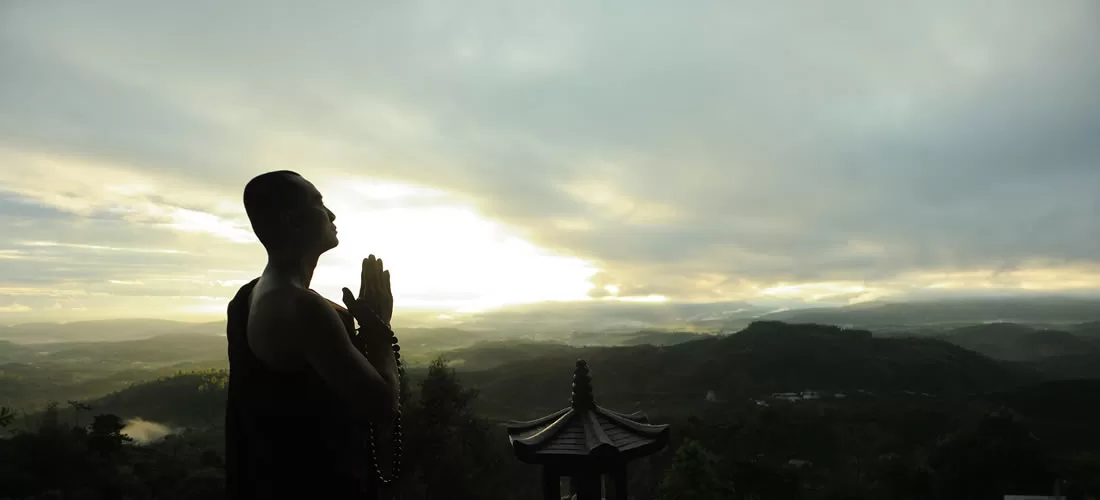
In today’s hectic world, it can be difficult to find moments of peace and solitude. But spiritual solitude is an important practice for many people who are looking to connect with a higher power or their inner selves. It involves spending time in quiet reflection and contemplation, allowing yourself to become free from the hustle and bustle of everyday life.
In this blog post, we will explore what spiritual solitude is and how it can help us on our journey of self-discovery. We’ll look at some tips for fostering a deeper sense of connection with ourselves through the practice of spiritual solitude. By taking these steps, you may find that your relationships with yourself as well as others deepen significantly over time.
What is Spiritual Solitude?
Spiritual solitude is taking time away from the hustle and bustle of everyday life to connect with your inner self. It’s a way to nurture yourself spiritually, whether it’s through spending time in nature, going on silent retreats or visiting sacred places. How often and how long you take time alone is up to you – it all depends on what works best for you. Spiritual solitude can help give you a deeper understanding of yourself, your spiritual path and the world around you.
Spiritual solitude is not about loneliness or isolation; rather, it is a purposeful and enriching experience that allows individuals to explore their inner world and develop a deeper understanding of their spiritual path. In summary, spiritual solitude is a deliberate and transformative practice that allows individuals to deepen their spiritual connection, gain self-awareness, and find inner peace amid the complexities of life.
Why Spiritual Solitude Matters in Our Modern Lives
Spiritual Benefits of Embracing Solitude
Embracing solitude can bring about a multitude of spiritual benefits. When you take time for yourself, it can bring you closer to the spiritual world. It can make you feel more peaceful and fulfilled. Spend some time alone and discover a deeper sense of purpose!
1. Enhanced Self-Awareness
When you’re alone, it can help you become more aware of who you are. Solitude gives you a chance to disconnect from what’s around you and focus on yourself. You can do things like meditate, pray, or reflect on your life without being bothered by anyone else. Taking a break from the outside world helps you observe your thoughts, feelings, and goals more deeply. You can learn more about how you act and think as well as recognize what makes you strong or weak. It also helps to understand why certain things matter to you.
2. Deeper Connection with the Divine
When you spend time alone in solitude, it can help you build a special connection with the divine. You can create a sacred space and explore your inner self for spiritual growth and understanding. Solitude gives you a chance to focus on yourself and open up to connecting with something bigger than yourself. This connection might give you a deeper sense of purpose, joy, and alignment with life’s mysteries.
You can explore your inner self when you’re alone and learn more about what you want spiritually. This will help you feel closer to the divine. Also, use this time by yourself for special rituals and ceremonies that matter to your spiritual journey. They can be a way of communicating with the divine and make you feel connected to something sacred.
3. Spiritual Insights and Intuition
When you are alone, it can be a time to explore yourself in a deeper way. You may be able to notice things that you would not have noticed in the busyness of life. You might even get spiritual messages or insights about life, personal growth, or the connection between all things. Solitude can also help your intuition – being able to understand things without using your brain – and help guide you on the right path. It can be a time to heal, reflect, and gain clarity. So don’t be afraid of being alone – it can be an empowering experience!
4. Emotional Healing and Renewal
When you are alone, it is the perfect time for you to think about your feelings without any disruptions or pressure from others. Take this chance to think deeply and work through any unresolved issues or traumas. Give yourself the time and space to heal so that you can experience emotional renewal and find peace within yourself. Don’t be afraid of your emotions – embrace them without judging or suppressing them so that you can release all of your negative energy. This will help you understand why certain feelings come up and begin the journey of healing.
5. Transcendence and Unity
When you’re alone, you can have moments where you feel connected to something bigger than yourself. This is called transcendence. It means that even though you’re just one person, you are part of the universe and everything in it. You can also experience unity consciousness, which means that all living things are connected and share a common essence. When this happens, it can make you feel awe and wonder for life around you and help give your life purpose and meaning. Transcendence and unity can be experienced in moments of solitude, allowing you to experience a deeper connection with the world around you.
In this state of transcendence, individuals may also gain insight into their true selves and create meaningful connections that span beyond physical boundaries. By understanding our own individual identity within the context of something greater than ourselves, we are better equipped to make positive changes in our lives and become emotionally resilient. Solitude gives us an opportunity to explore these deep connections within ourselves and allows us to live more authentically as part of a larger whole.
6. Deepening Spiritual Practice
Being by yourself can help you get deeper into your spiritual practice. You can put all your energy and attention into praying, meditating, or other spiritual rituals without any distractions. Spending time alone helps you explore yourself more deeply, which will help you grow spiritually and learn more about who you are. Plus, being alone creates a sacred atmosphere that makes it easier to feel connected to the divine world and align with what you believe spiritually. This can give you a strong sense of respect for yourself and bring peace to your life.
7. Inner Strength and Resilience
Solitude can lead to the development of inner strength and resilience. When you take the time to be alone, it can help you become stronger. You will face your inner challenges and struggles without the influences or distractions of others. Solitude also helps with healing old hurts and traumas which leads to personal growth and emotional strength. Through this process of introspection and self-confrontation, you will develop inner strength and resilience.
8. Gratitude and Appreciation
Being alone can help you feel thankful for the things around you. You can focus on the present and appreciate the small things like nature, sunshine, birds, and peaceful moments. It’s an opportunity to think about how much your family and friends mean to you. You might also be grateful for how much you have learned from difficult times in your life and all that it has taught you. In this way, solitude can help to bring out a sense of gratitude and appreciation.
9. Authenticity and Personal Growth
Solitude is a great way to get in touch with yourself. When you’re away from other people and the things they expect of you, it’s easier to think about who you really are and what matters to you. You can be honest about your thoughts, feelings, and beliefs without worrying what anyone else will think.
Exploring your own feelings can help you understand your values, passions, and goals better. It can also help you identify areas for improvement in your life and develop positive habits. Plus, being alone can give you spiritual insights that will bring clarity to what direction in life is right for you. This connection helps make sure that whatever decisions or choices that come up align with the spiritual principles that guide your life.
10. Freedom from External Validation
When you’re alone and away from others, it can help you to be free of the need for approval. You don’t have to follow the same rules or beliefs as everyone else. You can learn more about yourself and your spirituality without worrying about what other people think. Being alone gives you a chance to find out what is true for you and make decisions that are right for you. It’s also a great way to get closer to yourself and feel more content with who you are – no matter what anyone else says!
Embracing Spiritual Solitude: Practices and Techniques
When embracing spiritual solitude, individuals can utilize various practices and techniques to deepen their connection with themselves and the divine. Remember that embracing spiritual solitude is a personal journey, and you can tailor these practices and techniques to suit your unique preferences and beliefs. The key is to approach solitude with an open heart and a willingness to explore the depths of your spirituality.
Choose a quiet and comfortable space where you won’t be disturbed during your meditation practice. Decide on the duration of your meditation. Start with a manageable timeframe, such as 10-15 minutes, and gradually increase it as you become more comfortable with the practice. Sit in a comfortable position, with your spine straight but relaxed. Rest your hands on your lap or place them in a meditation mudra if you prefer.
Begin by focusing your attention on your breath. Observe the natural rhythm of your breath as it moves in and out of your body. Allow your breathing to guide you into a state of relaxation and presence. As you meditate, thoughts and distractions may arise. Instead of resisting them, acknowledge their presence and let them pass without judgment. Bring your focus back to your breath whenever you catch yourself getting carried away by thoughts.
Gradually, your mind will start to settle, and you may experience moments of increased clarity and stillness. Embrace these moments and allow your awareness to deepen. As you continue to meditate, use this space of solitude to connect with your spiritual essence. This might involve repeating a mantra, visualizing a sacred symbol, or simply being present with your inner self and the divine.
When your meditation time is complete, take a moment to express gratitude for the opportunity to connect with your spiritual self. Take this feeling of gratitude and carry it with you throughout the day.
Begin by setting a clear intention for your prayer session. Reflect on what you seek to communicate or experience during this time of solitude and connection with the divine. Choose a serene and quiet space where you can be alone and undisturbed. This could be a dedicated prayer corner, a natural setting, or any place that feels sacred to you. Take a few deep breaths to center yourself and bring your attention to the present moment. Let go of any distractions and worries, allowing yourself to be fully present with your intention for prayer.
Decide on the form your prayer will take. It could be spoken words, silent contemplation, written reflections, or a combination of these. Use the form that resonates most with you. Start your prayer with an expression of gratitude. Acknowledge the blessings and experiences in your life that you are thankful for, fostering a sense of appreciation and connection. Share your thoughts, emotions, and desires with the divine. Speak from the heart, expressing your hopes, fears, joys, and sorrows. Be authentic and genuine in your communication.
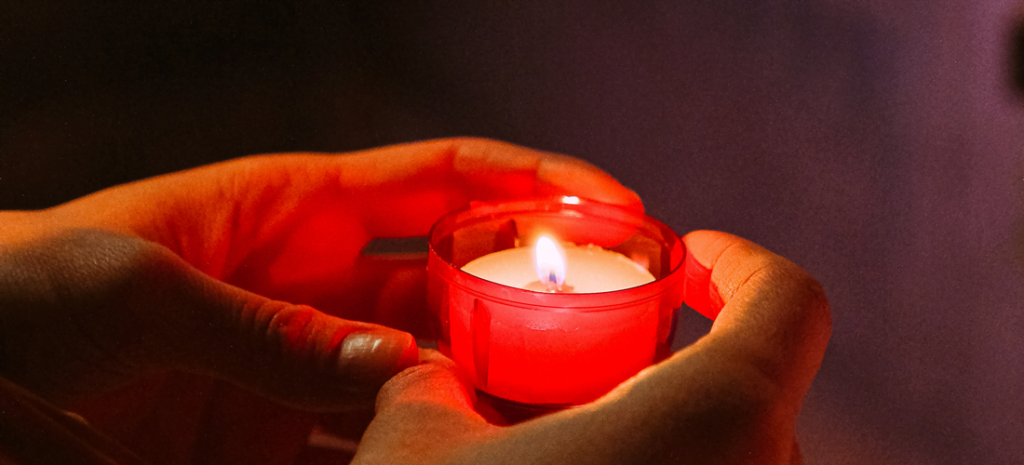
Solitude and Prayer: Alone with the Divine
After expressing yourself, spend some time in silence, allowing yourself to listen for any response or guidance from the divine. Be open to receiving insights and intuitive messages. Offer prayers and positive intentions for yourself, loved ones, and the world. Focus on sending love, healing, and peace to those in need. If you have specific questions or seek guidance, ask for clarity and wisdom during your prayer. Be open to receiving answers in unexpected ways.
Conclude your prayer session with another expression of gratitude, thanking the divine for the opportunity to connect and communicate. After your prayer, take a few moments to reflect on any insights or emotions that arose during the practice. Consider writing these reflections in a journal if you wish to capture them.
Choose a quiet and comfortable space where you can be alone with your thoughts and feelings. Create an environment that feels safe and conducive to introspection. Before you begin journaling, set an intention for your practice. Decide on the focus of your journaling session, such as exploring your spiritual journey, seeking guidance, or processing emotions. Begin your journaling session with an expression of gratitude.
Write down things you are thankful for, both in your spiritual life and personal experiences. This sets a positive and appreciative tone for your journaling practice. Allow your thoughts and feelings to flow freely onto the pages of your journal. Write without judgment or censorship, letting your innermost thoughts come to the surface. Use your journaling time to explore your spiritual experiences and insights.

Mindfulness Journaling: A Path to Inner Peace and Self-Discovery
Reflect on moments of connection with the divine, meaningful synchronicities, or spiritual teachings that have impacted you. If you have been facing challenges or emotional struggles, use journaling as a tool to process and release these feelings. Write about your emotions, the underlying causes, and any lessons you can learn from them. If you have questions or seek guidance, write them down in your journal. Allow yourself to explore these questions openly, trusting that answers or insights may arise during your journaling practice.
Journal about your spiritual progress and personal growth. Celebrate your achievements and acknowledge areas where you can continue to evolve and deepen your spiritual practice. Write down your intentions for your spiritual journey and personal development. Clarify what you wish to cultivate or manifest in your life. End your journaling session with another expression of gratitude. Acknowledge the process of self-reflection and the opportunity for spiritual solitude.
From time to time, review your journal entries. Use this practice to gain insights into patterns, progress, and the evolution of your spiritual journey.
Visualization
Find a quiet and comfortable space where you won’t be disturbed. Sit or lie down in a relaxed position, and take a few deep breaths to center yourself. Close your eyes and let go of any distracting thoughts or worries. Create a mental space of stillness and openness. Begin to visualize a serene and sacred place that holds special significance for you. This could be a peaceful garden, a mountaintop, a beach, or any place that evokes a sense of tranquility and spirituality.
As you visualize, engage all your senses. Imagine the colors, textures, scents, and sounds of your chosen place. Allow the imagery to become vivid and immersive. In this sacred space, invite a spiritual presence that resonates with your beliefs. It could be a deity, a spiritual guide, or a representation of the divine. Imagine this presence appearing before you or enveloping you in its loving energy. Use this visualization to seek guidance, healing, or answers to any spiritual questions you may have.
Engage in a conversation with the spiritual presence, asking for insights or clarity on your path. Take a moment to express gratitude for this spiritual encounter and for the guidance and support you receive during the visualization. Set clear intentions for your spiritual journey or personal growth. Affirm these intentions to the spiritual presence and the universe. Feel the loving and supportive energy of the spiritual presence infusing your being. Allow this energy to nurture and uplift you during your spiritual solitude.
When you feel ready, slowly bring your awareness back to the present moment. Open your eyes and take a few deep breaths to ground yourself. After your visualization, take some time to reflect on the insights and emotions that arose during the practice. Consider writing down your experiences in a journal to capture the essence of your spiritual solitude.
Sacred Reading
Sacred reading, also known as spiritual reading or contemplative reading, is a technique in practicing spiritual solitude that involves immersing oneself in sacred texts, spiritual literature, or philosophical writings. Select sacred texts, spiritual books, or writings that align with your beliefs and resonate with your spiritual journey. These could include religious scriptures, philosophical teachings, poetry, or inspirational books. Create a peaceful and quiet environment where you can read without distractions.
Choose a comfortable place that allows you to focus on the sacred reading material. Before you begin reading, set an intention for your sacred reading practice. Decide on the theme or aspect of your spiritual journey you wish to explore through the chosen texts. Take a few moments to center yourself with mindful breathing. Let go of any external concerns and bring your full attention to the present moment.
Start reading your selected sacred text slowly and reflectively. Absorb each word and sentence, allowing the wisdom and insights to resonate within you. Pause at key passages or verses that particularly speak to you. Contemplate their deeper meaning and relevance to your life and spiritual journey. As you read, ask yourself questions about the text’s implications and how it applies to your life.
Consider how the insights can guide your spiritual growth. Keep a journal nearby to jot down any reflections, questions, or emotions that arise during your sacred reading. Write down any insights or inspirations you gain from the text. If the text is complex or deeply meaningful, consider reading it multiple times to deepen your understanding and connection with the material.
After your sacred reading session, take a moment to express gratitude for the wisdom and spiritual nourishment you received from the texts. Take the insights and lessons gained from your sacred reading and apply them to your daily life. Consider how you can integrate these teachings into your actions and interactions.
Nature Connection
Seek out a natural setting that resonates with you—a park, a forest, a beach, or any place in nature where you can be surrounded by trees, plants, water, or open space. Arrive at your chosen location with a sense of presence and mindfulness. Take a few moments to breathe deeply and become fully aware of your surroundings. Engage your senses to connect with nature deeply. Notice the colors, textures, scents, sounds, and temperature of the environment.
Take a slow, solitary walk through nature. Allow yourself to move at a leisurely pace, absorbing the beauty and serenity around you. Pay attention to the intricate details of nature—the patterns on leaves, the ripples on water, the shapes of rocks. Marvel at the wonders of the natural world. Embrace a sense of oneness with nature. Recognize that you are an integral part of the interconnected web of life, and feel a deep connection with all living beings.

Nature Walks for Solitude Seekers: Therapy on the Trail
Find a comfortable spot to sit or stand and meditate in nature. Use the sounds of birdsong, rustling leaves, or the gentle flow of water as focal points for your meditation. Take a moment to express gratitude for the beauty and abundance of nature. Acknowledge the role of nature in sustaining and nourishing all life on Earth.
After spending time in nature, take out your journal and write about your experience. Reflect on the insights, emotions, and sensations that arose during your nature connection practice.
Gratitude Practice
Gratitude practice in solitude helps you shift your focus from what you lack to what you have, fostering a greater sense of contentment and abundance in your spiritual journey. Embrace this practice as a way to deepen your connection with the divine and find joy and fulfillment in the present moment during moments of spiritual solitude.
Choose a peaceful and quiet space where you can be alone and undisturbed. This allows you to fully immerse yourself in the practice of gratitude. Take a few deep breaths to center yourself and bring your focus to the present moment. Let go of any distractions or concerns, and fully engage in the practice.
Begin by reflecting on the blessings and positive aspects of your life. Acknowledge the people, experiences, and things that bring joy, love, and fulfillment. Verbally or mentally express gratitude for each blessing. Say “thank you” in your mind or out loud, acknowledging the impact and significance of each blessing. As you progress, delve deeper into your gratitude practice. Acknowledge not only the obvious blessings but also the challenges and lessons that have helped you grow and learn.
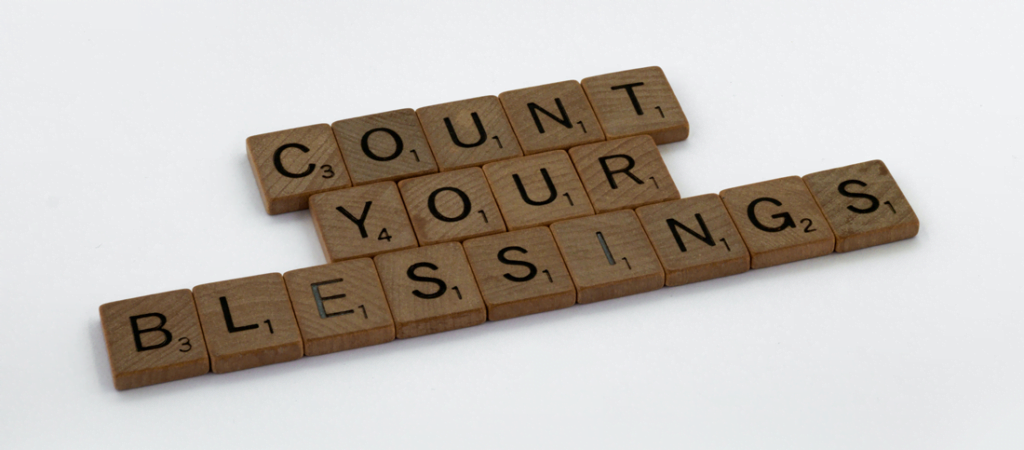
Practicing Gratitude: 10 Practical Ways to Self-Improvement
Consider keeping a gratitude journal during your solitude practice. Write down the things you are thankful for, the feelings they evoke, and how they contribute to your spiritual journey. Use gratitude affirmations to reinforce your practice. Affirmations like “I am grateful for all the abundance in my life” or “I embrace each day with a heart full of gratitude” can enhance your connection to gratitude.
Extend your gratitude practice beyond your immediate life. Acknowledge the beauty of nature, the kindness of strangers, and the interconnectedness of all beings. Incorporate a gratitude meditation into your solitude practice. Focus on feelings of gratitude in your heart and let this emotion radiate throughout your being.
As you conclude your gratitude practice, aim to carry the sense of gratitude into your daily life. Embrace a grateful mindset in your interactions and actions. Make gratitude practice a regular part of your spiritual solitude. Set aside time daily or weekly to engage in this transformative practice.
Creative Expression
Creative expression in solitude allows you to access a deeper layer of self-awareness, explore your spiritual journey, and communicate with the divine through the language of art. Embrace this practice as a means to discover new aspects of yourself and connect with the profound and mysterious elements of your spiritual path.
Find a quiet and comfortable space where you can engage in creative expression without distractions. Make this space your sanctuary for exploration and self-expression. Before you begin your creative expression, set an intention for your practice. Decide on the emotions, ideas, or spiritual themes you wish to explore through your art. Select a creative medium that resonates with you and aligns with your artistic preferences. It could be drawing, painting, writing, music, dance, poetry, photography, or any other form of art.
Let go of self-judgment and allow your imagination to flow freely. Allow your thoughts and emotions to guide your creative process without inhibitions. Use your chosen medium to express your inner world. Let your emotions, spiritual experiences, and insights come to life through your creative expression. Engage in your creative expression as a form of meditation. Let go of time and immerse yourself fully in the process, being present with each stroke, word, or note.
Once you’ve completed your creative expression, take a moment to reflect on the art you’ve created. Consider the emotions and messages it conveys and how it connects to your spiritual journey. Embrace imperfection in your art as a natural part of the creative process. Allow yourself to learn and grow from each creative expression.
Use your art as a tool for introspection and self-discovery. Look at your creations as mirrors reflecting your inner self, offering insights into your spiritual path. Make creative expression a regular part of your spiritual solitude practice. Dedicate time to engage in artistic expression, fostering a deeper connection with your inner self and spirituality.
Forgiveness Practice
Forgiveness practice is a transformative technique in practicing spiritual solitude that involves letting go of past grievances, releasing emotional burdens, and fostering inner peace and healing. Embrace this practice as a means to lighten your emotional load, cultivate compassion, and foster inner peace during moments of spiritual solitude.
Choose a peaceful space where you can be alone with your thoughts and emotions. This environment allows you to delve into the forgiveness process without distractions. Take a few deep breaths to center yourself and bring your awareness to the present moment. Let go of any tension or preoccupations, and create a sense of inner calm.
Begin by reflecting on past hurts or grievances that you are holding onto. Identify the people, situations, or events that have caused you pain. Allow yourself to feel the emotions associated with these past hurts. Be honest and compassionate with yourself as you confront these feelings. Extend self-compassion to yourself for carrying these emotional burdens. Recognize that it is okay to feel hurt and that forgiveness is a healing process. Try to understand the perspectives of those who have hurt you. Empathize with their circumstances and recognize that everyone carries their own struggles.
Make a conscious decision to forgive those who have caused you pain. This doesn’t mean condoning their actions, but rather, choosing to release yourself from the grip of resentment. Visualize letting go of the emotional attachments to these past hurts. Imagine them dissipating and dissolving, leaving you with a sense of freedom.
Engage in a forgiveness meditation, where you offer forgiveness to others and to yourself. Focus on sending love and healing to all parties involved. Recognize that forgiveness is a gift you give to yourself. By releasing past grievances, you open up space for healing, growth, and a more peaceful existence.
After your forgiveness practice, take some time to journal about your feelings and insights. Writing can help solidify the healing process. Forgiveness is a continuous practice. Repeat this forgiveness technique regularly, as new emotions and memories may arise over time.
Closing Thoughts
Finding spiritual solitude is a powerful tool for developing inner strength and resilience. In this blog post, we explored various methods of achieving it such as meditation, gratitude practice, journaling, and more. Whether you choose to practice one or all of these techniques – the most important thing is that you make time in your life for yourself every day so that you can enjoy moments of peace and tranquility within. By doing this regularly, you will be able to cultivate an unshakeable sense of self-confidence and joy even during difficult times. So go ahead: take some time each day for yourself – your spirit will thank you!
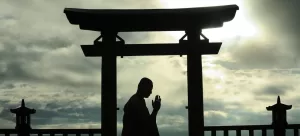
Finding Purpose Through Spiritual Solitude

How to Practice Forgiveness in Spirituality – 5 Thoughtful Steps

9 Mindful Ways for Creating a Sacred Space at Home

Affirmations in Spirituality: 4 Ways to Nurture Your Spiritual Path
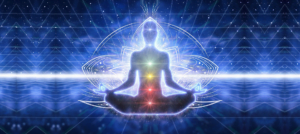
How to Use Chakras for Spiritual Healing

12 Healing Benefits of Aromatherapy

10 Profound Benefits of Practicing Holistic Health

6 Profound Benefits of Shamanic Practices
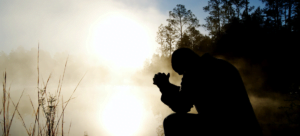
15 Ways to Overcome Spiritual Fatigue
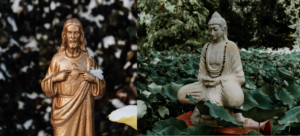
Spirituality and Religion: Which Path Is Right for You?
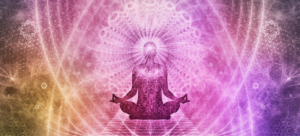
Ancient Spiritual Traditions: 7 Paths of Wisdom from the Past

Solitude and Holistic Healing: 10 Ways to Find Alone Time for Mind, Body, and Spirit

Cultivating Silence for Deeper Spiritual Insights
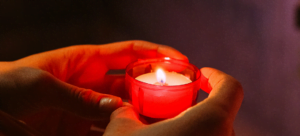
Solitude and Prayer: 15 Profound Ways of Being Alone with the Divine
Similar posts.

7 Easy Steps on How to Build a Good Habit
Creating and maintaining good habits is a challenge that many of us face. The key to success in how to build a good habit lies in identifying the areas of our lives that need improvement and creating an action plan with achievable objectives. This plan should include setting clear goals, building a reliable support system…

Creating a sacred space at home is more than just dedicating a quiet corner for meditation or yoga. It’s about creating a sanctuary, a place where you can retreat, reflect, and recharge. A “sacred space” is a personal area in your home that serves as a sanctuary, a place where you can retreat to for…

Ecotherapy and Solitude: 9 Profound Benefits of Alone Time in Nature
The practice of ecotherapy has been gaining traction in recent years. Ecotherapy encourages us to take time away from our busy lives – whether that’s an hour or a week – and spend it alone in the great outdoors. By spending time alone in nature, we can gain insight into our own thoughts and feelings…

Positive Affirmations in Meditation: 12 Simple Ways to a Mindfulness
Today we delve into the transformative power of positive affirmations in meditation. As we navigate the stresses of modern life, we often search for effective tools to calm the mind, nurture the spirit, and promote overall well-being. Among these tools, meditation backed by positive affirmations has emerged as a powerful practice. This potent combination invites…

Understanding Love Languages in Relationships
Love languages – you’ve probably heard the term used in countless relationship advice columns, podcasts, or maybe in a late-night conversation with your friends. But what really are love languages, and how can they play a crucial role in understanding and nourishing relationships? Let’s dive into the world of love languages, decoding this fascinating concept…
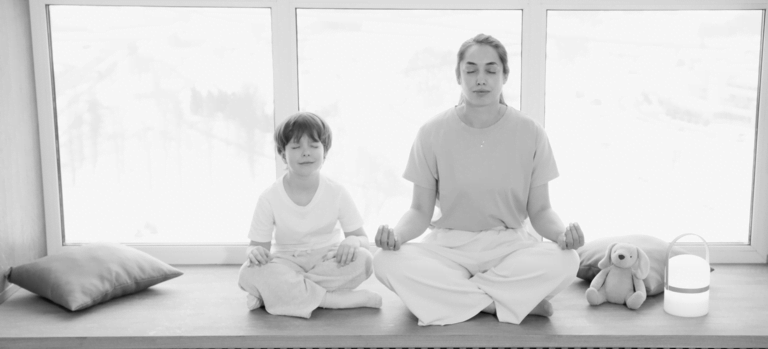
10 Significant Benefits of Mindful Parenting
Introducing mindfulness to your children may seem like a daunting task, but rest assured, it can be an incredibly rewarding journey. Welcome to our latest post on the benefits of mindful parenting, a topic that is fast gaining attention in the parenting world. Fostering mindfulness in kids not only instills peace and calm, but it…
Spiritual Mojo
Leg Pain Spiritual Meaning (Unraveling Mystical Messages)
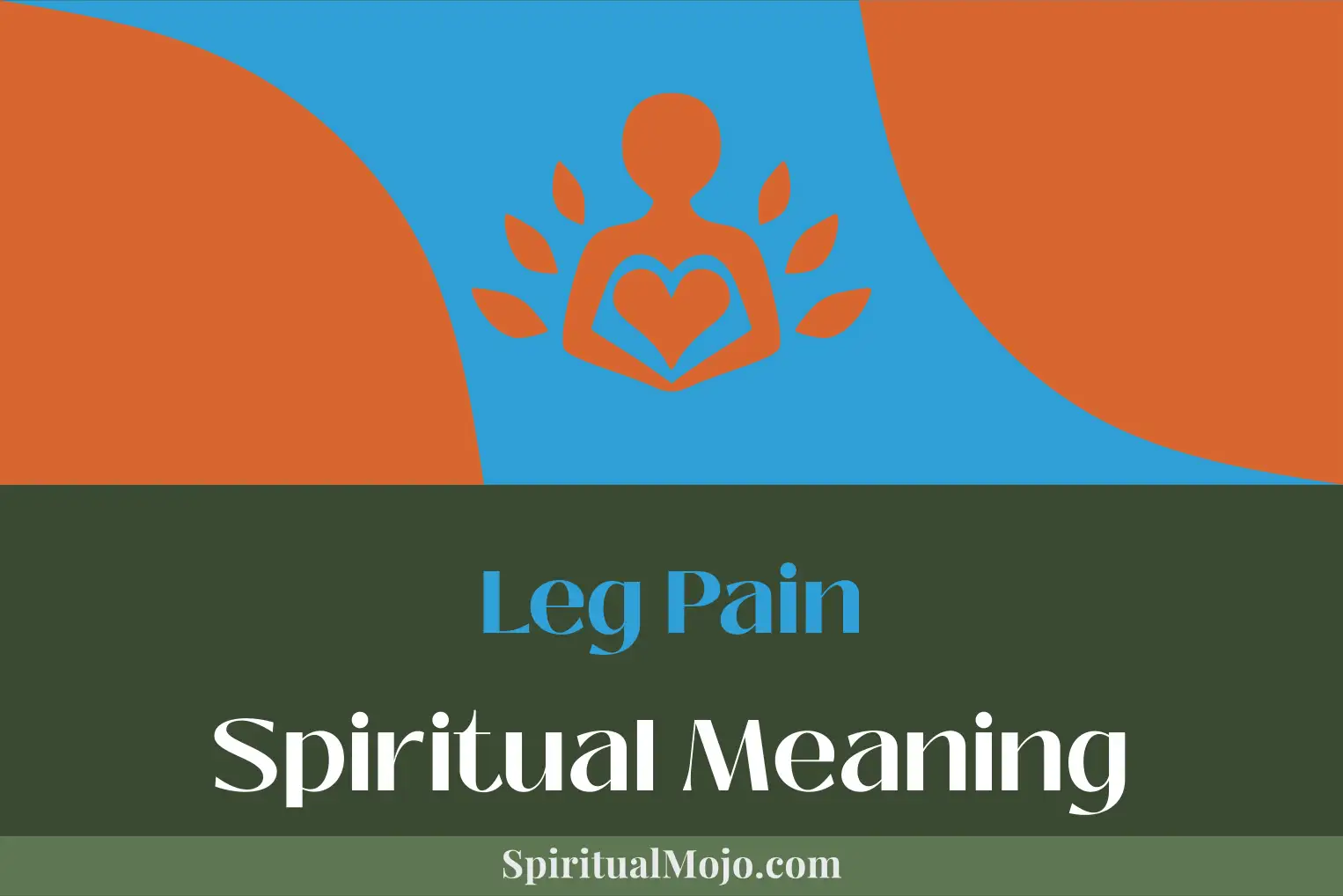
Have you ever experienced leg pain that made you wonder if there was more to it than physical discomfort?
You’re not alone.
Leg pain can be more than just a physical ailment; it can be intertwined with profound spiritual significance and hidden wisdom.
In this guide, we’ll explore the intriguing realm of leg pain spiritual meaning, unraveling the myriad spiritual interpretations that such discomfort can signify.
Whether you often experience leg pain, dream about it, or are simply intrigued by its potential spiritual significance, you’re about to discover why these experiences captivate our inner beings.
Leg Pain Spiritual Meanings
Movement and progress challenges.
Leg pain, in a spiritual sense, can symbolize challenges that are hindering your progress and movement in life.
Much like how physical leg pain can prevent one from moving freely, spiritual leg pain might indicate obstacles or issues that are slowing down your journey or preventing you from reaching your full potential.
This could be related to fears, doubts, or unresolved issues that are causing discomfort in your spiritual path, much like how an injury causes physical discomfort.
Overcoming this spiritual leg pain requires healing and overcoming these challenges, reflecting on your fears and doubts, and finding ways to resolve or let go of the issues that are holding you back.
Just as physical leg pain can be healed over time with proper care, spiritual leg pain can also be overcome with patience, understanding, and perseverance, allowing you to move freely and progress in your spiritual journey.
Grounding and Stability Issues
In a spiritual context, leg pain is often associated with grounding and stability issues.
It symbolizes a disconnection from your roots, from the earth, and from the stability that keeps you steady and secure in life’s journey.
Legs serve as our pillars of support, enabling us to move forward.
When we experience leg pain, it could be a spiritual signal that we are losing our balance, possibly due to fear, anxiety, or uncertainty.
This discomfort can signify that we are not grounded, that we have strayed from our path, or that we are not firmly planted in our convictions or beliefs.
It could also mean that we are not firmly rooted in reality, and are possibly living in denial or illusion.
Spiritually, overcoming leg pain involves addressing these grounding and stability issues.
This could mean reconnecting with nature, reassessing our beliefs, or confronting our fears.
By doing so, we reestablish our connection with the earth, regain our stability, and move forward with renewed strength and confidence.
Fear of Moving Forward
Leg pain, in a spiritual sense, is often viewed as a manifestation of the fear of moving forward.
It symbolizes a resistance to progress or change, indicating that the individual may be holding onto past experiences or regrets, hindering their ability to stride confidently into the future.
Just as physical leg pain can limit mobility and disrupt the rhythm of life, the fear of moving forward can stifle personal growth and development.
It may be the result of uncertainty, doubt, or a lack of confidence, all of which can immobilize an individual on a spiritual level.
This can serve as a powerful reminder to confront these fears and overcome the barriers that are preventing progress.
Just as physical therapy can help alleviate leg pain, spiritual healing can help one overcome the fear of moving forward, enabling them to take the necessary steps towards their goals and aspirations.
Like a journey, overcoming this fear is a gradual process, often involving introspection, acceptance, and resilience.
In this journey, leg pain, perceived spiritually, is not just a symbol of fear but also a call to action, urging one to take control of their life and stride fearlessly into the future.
Personal Journey Obstacles
Leg pain, in a spiritual context, can signify personal journey obstacles, serving as a symbolic reminder of the challenges one must overcome in the path of spiritual growth and enlightenment.
Pains in the legs can be viewed as a sign that one’s journey is being hindered by past traumas, unresolved issues, or internal conflicts that need addressing.
These obstacles can prevent us from moving forward and achieving our spiritual goals.
Just as physical pain in the legs can inhibit one’s ability to walk or run, so can spiritual leg pain hinder one’s progress on the path to spiritual fulfillment.
It is a call to confront the issues head-on, to heal, to learn, and to grow from the experience.
This process, although painful, is integral in one’s spiritual journey, as overcoming these obstacles strengthens one’s resilience, deepens understanding, and fosters spiritual growth.
In this sense, leg pain is not just an obstacle, but also an opportunity for transformation and enlightenment.
Connection to Earth Energy Blockages
Leg pain, from a spiritual perspective, signifies a blockage in the grounding energy connecting us to Earth.
This energy, often referred to as the root chakra, is responsible for our feelings of safety, stability, and belonging.
When this energy flow is impeded, it manifests physically as leg pain.
The legs serve as our physical support and enable movement, symbolizing our journey through life.
The pain could be indicating resistance to moving forward, unaddressed fears, or feeling unsupported in your life’s path.
Thus, the spiritual meaning of leg pain is a call to reassess our connection with Earth, our sense of security, and the direction we’re heading in life.
It’s a reminder to ground ourselves, to reconnect with our roots, and to unblock any stagnant energies that are inhibiting our spiritual growth.
Just as we need to physically address leg pain with rest and healing, spiritually, we need to work through the underlying issues causing this energy blockage to restore balance and continue our journey forward.
Life Balance Disruptions
Leg pain, in the realm of spiritual symbolism, can often represent disruptions in life balance, suggesting a need for realignment in one’s emotional, mental, or spiritual journey.
This pain can be a signal that we are overburdening ourselves, either physically or metaphorically, and the imbalance is manifesting in the body as a warning sign.
It may suggest we are taking on too much, neglecting self-care, or not giving enough importance to our emotional or spiritual well-being.
Moreover, our legs are our primary means of moving forward in life.
Therefore, when we experience leg pain, it may signify a resistance or hesitation to progress on our path, perhaps due to fear, uncertainty, or unresolved issues.
Thus, leg pain, spiritually, prompts introspection about our life choices, ambitions, and emotional state.
It serves as a reminder to find balance, prioritize self-care, and confidently stride towards our life purpose.
Resistance to Change
Leg pain in a spiritual context symbolizes a resistance to change.
It’s an indication that one may be stuck in their ways, refusing to move forward due to fear or uncertainty.
This pain, often persistent and intrusive, mirrors the deep-rooted stubbornness that resists progress and transformation.
Much like how leg pain can hinder physical movement, a resistance to change can prevent spiritual and emotional growth.
The legs, which carry us forward in life, are symbolic of our journey and progress.
When they hurt, it’s a sign we may be resisting the natural flow of life or fighting against necessary change.
This resistance can be rooted in fear of the unknown, unwillingness to leave comfort zones, or a struggle to let go of past patterns.
By acknowledging and addressing this resistance, one can begin to ease their spiritual leg pain and embrace the inevitable changes life brings.
Lack of Flexibility in Life Choices
Leg pain in spiritual terms symbolizes a lack of flexibility in life choices, indicating that the individual may be resisting the natural flow of life or struggling to move forward due to fear, hesitation, or stubbornness.
The legs are used for moving forward, stepping into new territories, and maintaining our balance.
Pain in these areas can be a clear sign that one is finding it hard to progress, possibly due to rigid thinking, an unwillingness to adapt or the fear of embracing change.
This could be a sign that the individual needs to loosen their grip on predetermined plans or expectations, and learn to be more open, adaptable, and willing to accept the unpredictable nature of life.
Just as physical flexibility is necessary for pain-free movement, spiritual flexibility allows us to navigate the ups and downs of life with resilience and grace.
By recognizing this signal, one can start fostering a more flexible mindset, which in turn can help in easing the spiritual pain manifested physically as leg pain.
Healing from Past Trauma
Leg pain in the spiritual realm is often associated with the process of healing from past trauma.
It signifies the burdens or unresolved issues that one carries from their past, creating a metaphorical weight on their legs and hindering forward movement in life.
The legs, symbolizing our stability and grounding, are fundamentally tied to how we progress and navigate through life’s journey.
Pain in the legs can imply that past traumas or emotional baggage are obstructing this journey, making it difficult to move forward or stand firmly within ourselves.
Spiritually healing leg pain involves acknowledging these past traumas, learning from them, and releasing the emotional charge they hold over us.
This process allows us to regain our strength and stability, empowering us to move forward with resilience and grace.
Just as physical therapy can restore function and ease physical pain in our legs, spiritual healing can help us address, resolve, and move past emotional pain.
It encourages us to metaphorically stand on our own two feet, liberated from the past and ready to stride confidently towards our future.
This spiritual perspective on leg pain serves as a reminder that we all have the capacity to heal and grow from our past, no matter how painful or challenging it might have been.
Carrying Burdens or Stress
Leg pain in a spiritual sense can be viewed as a manifestation of the burdens and stress we carry in our life.
This may arise from work stress, financial worries, or emotional turmoil, which figuratively weigh us down.
Just as physical leg pain makes it difficult to move forward, symbolically, it represents the struggles we face in progressing in our personal or professional life due to the heavy burdens we bear.
The spiritual message here is to lighten our load, let go of the stressors that are not serving us, and move forward with a lighter heart and mind.
It encourages us to take a step back, prioritize, and sometimes even seek help when the weight becomes too much to bear alone.
Moreover, this symbolic pain nudges us to take better care of our spiritual and mental health, reminding us that it is okay to put down our burdens and rest, and that moving forward at a slower pace is better than not moving at all.
It is a prompt to reassess our life, release unnecessary stress, and to heal and strengthen ourselves for the journey ahead.
Being Overwhelmed by Responsibilities
Leg pain, in a spiritual sense, often symbolizes the feeling of being overwhelmed by responsibilities.
It signifies carrying a heavy load and straining under its weight, much like how our legs bear the physical weight of our bodies.
Just as our legs provide mobility and balance, they are also spiritually connected to our ability to progress and maintain stability in life.
When we experience leg pain, it might be a spiritual message that we’re overburdening ourselves with tasks, duties, and obligations, causing imbalance and hindering progress.
In this context, leg pain serves as a reminder to pace ourselves, delegate tasks when necessary, and prioritize our responsibilities.
It teaches us the importance of self-care and the need to occasionally rest and rejuvenate, just like our legs need rest to recover from pain.
Remember, it’s okay to ask for help and share responsibilities.
Lighten your load and your legs, both physically and spiritually, will thank you.
Warning to Slow Down and Rest
In spiritual terms, leg pain often represents an urgent call from the body and soul to slow down and take a pause.
It is a tangible reminder to humans of their mortal limitations, compelling them to respect their physical and emotional boundaries.
This discomfort could symbolize excessive physical strain or emotional stress, indicating that rest and rejuvenation are vital for maintaining balance and health.
Overworking oneself, be it physically or mentally, disrupts the natural harmony within, leading to ailments such as leg pain.
The legs, being the primary mode of human locomotion, indicate progress and movement in life.
When they ache, it is a powerful warning that one’s pace may be too hurried or stressful.
The spiritual realm urges individuals to pay heed to this call, slow down, and take time to rest and recuperate.
Therefore, leg pain, in this spiritual context, serves as a health-check reminder and a warning to pause, reflect, and restore one’s energies.
It is a call to balance one’s life, harmonizing the physical and spiritual facets of our existence.
Need for Spiritual Anchoring
Leg pain in spiritual terms often signifies a need for grounding or anchoring.
It is a symbol that we might be carrying too much emotional or spiritual weight and might need to root ourselves more firmly in reality.
Just like our physical bodies rely on our legs for balance and movement, our spiritual selves also need a strong foundation to navigate through life’s challenges.
When we experience spiritual leg pain, it may be a sign that we need to stabilize our spiritual journey, perhaps by reconnecting with our core values, practicing mindfulness, or seeking support in a spiritual community.
Releasing Old Patterns and Habits
In a spiritual context, leg pain can symbolize the carrying of old, unproductive patterns and habits that are preventing us from moving forward freely and purposefully in our lives.
Our legs are our primary means of moving and progress, thus they symbolically represent our journey and the path we are taking.
When we experience leg pain, it might be a sign that we are struggling with letting go of past mistakes, fears, or negative behaviors that are acting as a burden on our journey.
This discomfort serves as a reminder that we need to release these outdated patterns and habits, just as we would seek to treat and heal physical pain.
Only by acknowledging and letting go of these burdens can we regain our stride and move forward with ease and purpose.
Just like a physical therapy for leg pain focuses on improving strength and flexibility, spiritual healing involves fostering resilience and adaptability in the face of change.
Recognizing leg pain as a call to release old patterns and habits allows us to grow and evolve, ultimately leading to a more fulfilled and balanced life.
Leg Pain Spiritual Messages
Embrace the journey of healing.
Leg pain can be a difficult physical challenge to overcome, often hindering your everyday routine and activities.
In a spiritual context, experiencing leg pain may be a reminder of the importance of embarking on the path of healing, both physically and emotionally.
Your legs carry you forward in life.
If they are causing discomfort, it could signify that there are areas in your life that need attention and healing.
Embracing the journey of healing is not simply about treating the physical pain, but also addressing the deeper emotional or spiritual issues that might be causing it.
When you experience leg pain, see it as a call to delve deeper into your healing journey.
It’s a chance to explore the self, to nurture your body, mind, and spirit, and to embrace the process of recovery and growth.
Listen to your body’s wisdom
Leg pain, in the spiritual realm, can serve as a sign that you need to slow down and pay attention to your body’s needs.
It is your body’s way of communicating that something is not balanced, whether it is physical, emotional, or spiritual.
Experiencing leg pain may mean you are carrying too much weight – not just physically, but also in the sense of responsibilities, pressures, or emotional burdens.
When leg pain arises, it’s a reminder to pause, reflect, and make necessary changes.
It’s a call to unload excessive burdens, to start taking better care of yourself, and to listen to the wisdom your body is trying to share.
Your body is a vessel of spirit, and its pains and aches are messages that should not be ignored.
Respect your body’s wisdom and it will guide you towards better health, peace, and spiritual growth.
Ground yourself through rest
Experiencing leg pain can be a spiritual message to slow down, rest, and ground oneself.
In the rush of our daily lives, we often neglect the need for adequate rest.
However, just like a vehicle needs to stop for refueling, our bodies also need time to rejuvenate.
When leg pain occurs, it is a reminder to take a break from the constant movement and strain.
It tells us to ground ourselves, to stay put, to rest and recuperate.
Just as earth is a grounding force, your legs, which connect you to the earth, are telling you to ground yourself.
Pay attention to this message, and take the necessary time to rest and recharge.
Your physical and spiritual health depend on it.
Adjust your pace; slow down if needed
Leg pain can often be a barrier in our daily activities.
It can inhibit our ability to move swiftly and freely.
In a spiritual sense, leg pain can be seen as a message from our body to slow down and adjust our pace.
It might be a sign that we are pushing ourselves too hard, and we need to take a step back for our wellbeing.
Just like a vehicle, our bodies need regular rest and maintenance.
Without it, we are bound to experience breakdowns.
So, when you experience leg pain, see it as a gentle reminder to slow down, rest, and rejuvenate.
Your body is your temple, and taking care of it is a spiritual practice.
Ignoring the pain and pushing on could lead to further complications.
On the other hand, adjusting your pace and caring for your body can lead to a healthier, more balanced life.
Remember, life is not a sprint; it’s a marathon.
Slowing down allows you to notice the beauty around you, to connect with yourself, and to live in the present moment.
Pain as a signal for self-care
Leg pain is an uncomfortable experience, often signalling that something isn’t right within the body.
From a spiritual perspective, this pain can be seen as a signal for self-care.
Our legs carry us through life, supporting our weight, enabling movement, and grounding us to the Earth.
When we experience leg pain, it might be a sign that we’re overworking ourselves, not resting enough, or not providing our bodies with the necessary care and nutrition.
This pain could also be reflective of our spiritual journey, showing us that we may be standing in a place of discomfort or instability.
It could be a sign that we are not moving forward in life due to fear or resistance, causing spiritual stagnation.
When leg pain occurs, it serves as a reminder to slow down, reflect on our current lifestyle and emotional state, and take the necessary steps towards self-care.
This might involve physical rest, proper nutrition, or even seeking professional medical help.
In a spiritual sense, self-care could involve grounding exercises, meditation, or seeking guidance from spiritual practices or advisors.
The pain is not just a physical ailment but a sign that we need to take better care of our overall wellbeing.
Remember, your body is your temple.
The physical pain you feel in your legs could be a signal from your higher self to pay attention and provide love, care, and healing to your body and spirit.
Seek balance in movement and stillness
Leg pain can often be a physical manifestation of the imbalance between movement and rest in our lives.
It is a reminder from our bodies to appreciate both the power of mobility and the serenity of stillness.
Engaging in physical activities and exercise keeps our bodies healthy, yet it is equally essential to allow time for rest and recuperation.
If you are experiencing leg pain, it might be a spiritual sign to reassess your activity levels and create a more balanced lifestyle.
Just like in life, the key is to find harmony between pushing forward and taking a moment to pause, reflecting the spiritual message of seeking balance in movement and stillness.
Let go of the weight you’ve been carrying
Leg pain can be an overwhelming burden, hindering your mobility and quality of life.
In a spiritual context, your legs represent your ability to move forward, to progress.
If you’re experiencing leg pain, it could signify that you’re carrying too much weight, both literally and metaphorically.
Perhaps you’re burdened with unresolved issues, guilt, resentment or expectations that are hindering your spiritual and emotional progress.
When leg pain appears, it’s a spiritual reminder to release these burdens, to let go of the weight you’ve been carrying.
Freeing yourself from these burdens can alleviate your leg pain and allow you to move forward unimpeded.
Movement can be a form of meditation
Leg pain can be a hindrance, it can slow you down and disrupt your daily activities.
However, the spiritual message behind it can be an invitation to understand and appreciate the power of movement.
Movement isn’t just about physical relocation or exercise; it is a form of meditation, a way to keep your mind and body in sync.
It’s a reminder to keep going, no matter how hard the path might seem, because each step you take is a step closer to healing and self-discovery.
When you experience leg pain, it’s a sign from the universe that you need to slow down, focus on your movements, and find a balance between action and rest.
Don’t let the pain overpower you.
Instead, use it as a motivation to understand your body better and to discover the joy and peace that intentional movement can bring.
When leg pain is persistent, it’s an indication to pay attention to your body, give it the care it deserves and find ways to incorporate therapeutic movement into your routine.
The journey may be challenging, but remember, every step you take, no matter how small, is a step towards healing and growth.
Explore alternative paths to well-being
Leg pain can be a physical symptom of a deeper spiritual discomfort or imbalance.
It may indicate that you are carrying too much emotional or psychological weight and it’s time to release it.
When you experience leg pain, it might be a signal to slow down, reflect and listen to what your body is trying to tell you.
Exploring alternative paths to well-being such as meditation, yoga, or energy healing can be beneficial.
These methods can help you tune into your body, identify any emotional or spiritual issues contributing to the pain, and guide you toward restoring balance.
Remember, your body is a vessel for your spirit.
Taking care of it through physical and spiritual methods can lead to a healthier, more harmonious life.
Don’t ignore your leg pain but rather, see it as a spiritual message urging you to explore alternative paths to well-being.
Trust in your body’s capacity to recover
Leg pain, whether it is temporary or chronic, can be an uncomfortable and distressing experience.
However, from a spiritual perspective, it can serve as a reminder to trust your body’s innate ability to heal itself.
The human body has an impressive capacity for recovery and healing, often overcoming illnesses and injuries through its inherent mechanisms.
This pain can be seen as a signal your body sends to indicate that it needs time to repair and rejuvenate itself.
When you experience leg pain, it is an opportunity to listen to your body and respond to its needs.
It is essential to give your body the rest, nutrition, and care that it requires to recover.
Remember, just as the spiritual journey entails patience and trust in the process, so does your body’s healing journey.
Through every twinge and ache, your body is communicating and working towards its recovery.
Trust in this process and allow your body the time it needs to heal.
Leg pain is more than just physical discomfort; it carries potent spiritual symbolism representing the need for grounding, balance, and moving forward in life.
By paying heed to when and how leg pain manifests in your life, you can unearth messages and guidance that are in sync with your personal journey.
Whether you’re undergoing a significant life transition, seeking deeper spiritual truths, or simply feeling the physical manifestation of emotional pain, the spiritual meanings of leg pain provide profound insights and inspiration.
So remember, the next time you feel pain in your legs, it might be more than just a fleeting physical sensation. It could be a profound call to ground yourself, seek balance and move forward in life with renewed purpose.
And if you are looking to harness the power of your mind to manifest your dreams, don’t miss out on my guide on The Law of Attraction .
Interpreting Aura Colors: A Guide to Understanding Your Spiritual Palette
The Eye That Sees All: How the Evil Eye Protects Against Bad Fortune
The Universe Has Rules: 12 Laws to Live By for a Phenomenal Life
Rose Quartz Is A Girl’s Best Friend, But Have You Met These Other Crystals?
Similar Posts

Tea Cup Spiritual Meaning (Vessels of Vision)

Ox Spiritual Meaning (Exploring Fertility Symbols)

Well Spiritual Meaning (Mysteries of Water Symbolism)

Bed Bug Spiritual Meaning (What They Actually Signify)

Red Onyx Spiritual Meaning (A Mystical Journey)

Triple 2 Spiritual Meaning (Unlocking Your Purpose)
Leave a reply cancel reply.
Your email address will not be published. Required fields are marked *
Save my name, email, and website in this browser for the next time I comment.
We will keep fighting for all libraries - stand with us!
Internet Archive Audio

- This Just In
- Grateful Dead
- Old Time Radio
- 78 RPMs and Cylinder Recordings
- Audio Books & Poetry
- Computers, Technology and Science
- Music, Arts & Culture
- News & Public Affairs
- Spirituality & Religion
- Radio News Archive

- Flickr Commons
- Occupy Wall Street Flickr
- NASA Images
- Solar System Collection
- Ames Research Center

- All Software
- Old School Emulation
- MS-DOS Games
- Historical Software
- Classic PC Games
- Software Library
- Kodi Archive and Support File
- Vintage Software
- CD-ROM Software
- CD-ROM Software Library
- Software Sites
- Tucows Software Library
- Shareware CD-ROMs
- Software Capsules Compilation
- CD-ROM Images
- ZX Spectrum
- DOOM Level CD

- Smithsonian Libraries
- FEDLINK (US)
- Lincoln Collection
- American Libraries
- Canadian Libraries
- Universal Library
- Project Gutenberg
- Children's Library
- Biodiversity Heritage Library
- Books by Language
- Additional Collections

- Prelinger Archives
- Democracy Now!
- Occupy Wall Street
- TV NSA Clip Library
- Animation & Cartoons
- Arts & Music
- Computers & Technology
- Cultural & Academic Films
- Ephemeral Films
- Sports Videos
- Videogame Videos
- Youth Media
Search the history of over 866 billion web pages on the Internet.
Mobile Apps
- Wayback Machine (iOS)
- Wayback Machine (Android)
Browser Extensions
Archive-it subscription.
- Explore the Collections
- Build Collections
Save Page Now
Capture a web page as it appears now for use as a trusted citation in the future.
Please enter a valid web address
- Donate Donate icon An illustration of a heart shape
Are Testimonies In Today's Christianity Truly Reflective Of Our Spiritual Journey
Iframe pdf item preview, share or embed this item, flag this item for.
- Graphic Violence
- Explicit Sexual Content
- Hate Speech
- Misinformation/Disinformation
- Marketing/Phishing/Advertising
- Misleading/Inaccurate/Missing Metadata

plus-circle Add Review comment Reviews
Download options, in collections.
Uploaded by Sixbert SANGWA on June 23, 2024
SIMILAR ITEMS (based on metadata)

Sacred Roses ~ Spiritual Meaning Of The Rose
T he spiritual meaning of the rose has captivated our imaginations for centuries; its lush petals and thorns evoking themes of beauty, love, and pain. More than just a flower, the rose has profound symbolic meaning in world religions, mythology, folklore, and esoteric traditions. The iconic flower's numerous spiritual interpretations emphasize the power of symbols to convey what ordinary language cannot express.
We all know that rose is is a romantic symbol, but its symbolism is far more layered and complex than that. Many spiritual traditions have used its form to represent complex theological concepts related to devotion, purity, paradise, and the process of spiritual awakening .
Across all faiths and traditions, the rose universally symbolizes the journey of the spirit. Its petals symbolize purity and growth, while its thorns serve as a reminder of the sacrifices and suffering awakening sometimes asks of us. The rose thus resonates with the universal experience of inspiration and hardship, joy and obstacles overcome.
In this post we'll explore the multidimensional spiritual meaning of the rose. From Christianity to Greek legends, Islam to Hinduism, folklore to Rosicrucianism, the rose is a multifaceted metaphor for life's beauty and challenges. Perhaps that's why its beauty has captured the hearts of saints and poets, believers and seekers across so many diverse traditions.
Related Post: The Spiritual Meaning Of The Rainbow
Religious Symbolism Of The Rose
Christianity & the symbolism of the rose.
The rose holds deep symbolic ties with the Virgin Mary in the Christian tradition, both in canonical scripture and medieval legend. Mary is referred to as the " Mystical Rose" or "Rose of Sharon" in religious texts, drawing parallels between her purity and the flower's beauty. In the biblical Song of Songs, she's described as "a rose of the plain" and "a lily of the valleys."
A enduring medieval tale strengthens the connection between Mary and the rose, portraying her as the "Lovely Rose without thorns." Mary, being the mother of Jesus conceived without sin, is likened to a thornless rose, symbolizing her immaculate spirit. This untarnished rose, blooming in splendor, serves as a potent symbol of Mary as the pure vessel through which the Christ child entered the world. In essence, the rose is the symbol of the Divine Feminine spirit.
Over time, the symbolic link between the flawless form of the rose and Mary's sinless soul solidified. In subsequent Christian iconography, the contemplation of mystical rose gardens frequently accompanied the reverence for the Holy Mother.
The Spiritual Meaning Of The Rose In Islam
Islam links the spiritual meaning of the rose with the nature of the Divine. Roses are sacred in Islam as symbols of God's infinite beauty and mercy. It's said that every place the Prophet Muhammad stepped, a rose bloomed. The lush scent and petals represent the gentle fragrance of his presence.
The beauty of the Prophet's face is likened to a perfect red rose and his shrine described as a heavenly 'rose garden'. Just as a rose's unfolding petals reveal deeper beauty, so did the Prophet reveal the loving nature of Allah through his words and actions.
Beyond associations with the Prophet, rose symbolism permeates Sufi literature. The famous Sufi poet and mystic Jalal ad-Din Muhammad Rumi wrote:
Here, Rumi draws parallels between the rose and the soul overcoming challenges on the journey towards the light. The thorns represent pain, doubt and struggle, while fragrant blossoms represent beauty and purpose.
The verses of Sufi master Hafez speak to the rose opening its heart fully to divine presence:
This symbolizes the spiritual awakening possible when one surrenders their soul to God. In Sufi teachings, the rose symbolizes the human potential to reach higher conciousness by embracing the qualities of the Divine.
The Symbolism Of The Rose In Hinduism
In Hindu tradition, the spiritual meaning of the rose is related to the origins of mankind and the divine goddess Lakshmi.
Scriptures recount the gods Vishnu and Brahma debating which flower was most sublimely beautiful – Vishnu advocated for the rose, while Brahma favored the lotus.
To resolve the quarrel, Vishnu manifested a bush blooming with 108 large roses and 1,008 smaller buds. Upon beholding this vision, Brahma was enchanted by the rose’s grace. He then used the rose petals from Vishnu’s mystical bush to form the goddess Lakshmi, deity of prosperity, fortune and beauty. She emerged as Vishnu’s divine bride and the mother of humanity.
Thus in Hindu iconography, the rose signifies ideal beauty, love and the genesis of creation. Lakshmi is frequently depicted in paintings and sculpture holding roses or with roses blossoming nearby. The flower's unfolding petals are a metaphor for the soul elegantly opening to divine blessing.
Rosicrucian Symbolism
Rosicrucianism is an esoteric mystical and spiritual movement that emerged in late medieval Europe. Followers seek spiritual transformation and enlightenment through the study of metaphysical, mystical, and alchemical lore. Rosicrucian groups aim to secretly bring ancient wisdom to their members.
While the exact origins are debated, the public learned of Rosicrucianism after anonymous manifestos circulated in the early 1600s. These writings, meant for a select few, used Christian and alchemical symbols, like the rose, as windows into spiritual insights.
One later Rosicrucian offshoot was the Hermetic Order of the Golden Dawn in the late 1800s. This esoteric order also drew on Qabalah, Hermeticism, alchemy and magic alongside Rosicrcian philosophy. Both traditional Rosicrucians and the Golden Dawn place heavy symbolic emphasis on the rose based on its mystical representations.
In essence, Rosicrucianism can be summarized as a mystical and esoteric Christian tradition that emphasizes the pursuit of spiritual transformation through the acquisition of divine truths, often enveloped in a degree of secrecy. The symbolic rose underscores their core teachings about shedding one's lower nature to reach higher states of consciousness.
The Spiritual Meaning Of The Rose In Mythology
The rose appears as a spiritually symbolic flower throughout myths across cultures. Ancient tales and folklore reveal how important the rose was. Gods and goddesses have danced with roses, and mighty civilizations have risen and fallen under their sweet perfume. The rose tells tales of war and peace, sensuality and innocence.
In Greek mythology, Aphrodite the goddess of love, rushes to revive her slain beloved Adonis, and red roses spring up where drops of his blood touch the earth – forever linking roses with immortal romance.
Norse myths recount the goddess Freya discovering the exquisite Vanir rose only seen by eyes blessed with love. And according to Celtic legends, a golden underworld bough drips ageless roses of wisdom sought by heroic adventurers. Roses likewise figure from Persian hero tales to Polynesian fables of blooms blazing like the sun.
Irrespective of geography, the vibrant spirit of the rose mirrors our collective yearning for beauty, power, and transcendence—an enduring symbol that resonates across the spectrum of human existence.
Final Thoughts
The spiritual meaning of the rose threads its way through the stories humans have told for centuries. More than a botanical beauty, the rose is a sacred blossom that reflects humanity's longing for the sublime. Whether gracing icons like the Virgin Mary and Lakshmi or starring in tales of paradise, the universal motif of the rose persists.
This spiritual resonance likely stems from the rose's very form – its lush petals, regal stature and dangerous thorns that mirror the contradictory essence of life.
The rose epitomizes the bittersweet heartache and momentary glory that, in a way, characterizes life. For seekers on all paths, the rose remains the consummate natural emblem of fleeting earthly joy and the promise of something more enduring, thorned but radiant, waiting for its season to blossom.
Frequently Asked Questions
A red rose holds spiritual significance as a symbol of deep love, passion, and commitment. In many spiritual traditions, the vibrant red hue represents the heart's intense emotions and the soul's longing for connection. It embodies not only romantic love, but also serves as a symbol of spiritual devotion and the connection between the material and spiritual realms.
Roses boast a rich historical significance, dating back to ancient civilizations in China, Persia, and Egypt. In medieval Europe, they became powerful symbols during conflicts like the War of Roses. Across cultures, roses have held religious importance, symbolizing purity in Christianity and divine beauty in Islam, while their universal association with love and beauty has made them enduring symbols in art, literature, and cultural traditions.
In Hebrew symbolism, the rose, particularly mentioned in the Song of Songs, serves as a metaphor for the enduring beauty and resilience of the Jewish people amidst challenges, often likened to a rose or lily among thorns. Additionally, in Jewish mysticism, the Zohar associates a "thirteen-petalled rose" with the thirteen attributes of Divine Mercy, highlighting a deeper spiritual significance beyond its physical beauty. While the rose itself doesn't have a fixed or singular meaning, these contextual interpretations emphasize themes of beauty, resilience, and divine attributes within the Hebrew tradition.
You Might Also Enjoy These Posts
Butterfly Symbolism ~ Meaning, Magic & Myth
The 42 Laws Of Ma'at
The Healing Power Of Tree Hugging
The 9 Solfeggio Frequencies And Their Benefits
Palo Santo Vs Sage ~ Understanding Sacred Smoke
Candle Color Meanings For Candle Magic
7 Crystals For Protection ~ With Protection Rituals
A Guide To Crystal Grids ~ With 4 Free Templates
The post Sacred Roses ~ Spiritual Meaning Of The Rose appeared first on The Daily Dish .


IMAGES
VIDEO
COMMENTS
A spiritual awakening is the soul's search for truth and purpose, and many have walked this path before. Get all your questions answered here. ... Something happens to begin your journey, typically a trauma or painful loss. The loss of a loved one, a job, illness, burnout or breakdown is some of the circumstances that spark a spiritual ...
9: Tingling sensation between eyebrows. This might be one of the most common physical symptoms of spiritual awakening and something I often experience during meditation. The space in between your eyebrows is where your third eye chakra is located, also known as "the seat of the intuition". Tingling may mean that it's starting to activate ...
Understanding the pain of spiritual awakening. Before we can talk about why spiritual awakenings are so painful we have to discuss the physical, mental, and emotional pain people experience during an awakening. ... Without it, we would remain stuck in our old patterns and behaviors, never truly moving forward on our spiritual journey. 2. Change ...
1. Heightened emotions. A spiritual awakening can leave you with an open heart and increased sensitivity. As spiritual energy flows through you it can open up a lot emotions. Sometimes this can look like intense crying for seemingly no reason. To others this may turn into anxiety.
Understanding Releases and Relief on Your Spiritual Journey. Simply put, relief is when the pain is numbed, masked, or sent back into remission. Release is when part or all of an issue leaves your body and energy. Clearly, the better of the two is obvious, but most people don't know what releasing an issue is like.
2. Yoga: Another powerful way to connect with your spiritual self while managing pain is by practicing yoga. This ancient discipline incorporates physical movement, breathing exercises, and mindful awareness to help increase flexibility, reduce stress levels, and improve overall well-being. 3.
Way of the Spiritual Warrior: 3 Ways to Turn Your Pain into Power. 1. Accept having a broken heart and embrace the pain within you. 2. Don't collapse into passivity - proactively step into a space of courage. 3. Return to your heart and let love be the light that leads you. Now is the Time.
Pain is the touchstone of spiritual growth, offering opportunities for personal transformation. Embracing suffering can lead to resilience, awakening, and a greater sense of purpose. Finding meaning in pain and adversity can provide insight and foster personal growth. Overcoming adversity requires cultivating resilience and a mindset that views ...
Spiritual awakening is a deeply personal and unique experience, as each individual's journey is shaped by their own beliefs, experiences, and consciousness. Physical pain can play a significant role in this journey, serving as a catalyst for inner transformation and self-discovery.
The Journey Through Pain Towards Spiritual Awakening. In the metamorphosis of one's spirituality, like a butterfly emerging from its cocoon, pain often plays an unexpected yet crucial role. It facilitates transformation and enlightenment - journeying through it can be likened to walking on burning embers towards spiritual awakening. ...
Spiritual pain is often broken down into four categories: Meaning - struggling with the "meaning" behind life, relationships, and the world around you. Forgiveness - pain that stems from forgiving others, ourselves and God. Relatedness - dealing with relationships, whether good or bad. Hope - feeling like there is no hope or it ...
1. Be gentle and go at your own pace. It's normal to feel overwhelmed and a little inundated by the influx of information when first beginning your spiritual journey. My advice is to go slowly, be gentle, and go at your own pace. You don't need to know every tiny detail of every field of wisdom ever created.
Discover answers to common questions about spirituality, including what it is, how to become more spiritual, its benefits, and its relationship with science and religion. Learn about meditation for spiritual growth, various spiritual practices, and how to find your unique spiritual path. Explore the concept of a spiritual awakening and its impact on mental health. Take our personalized quiz to ...
The spiritual journey through chronic pain is an odyssey of awakening resilience—an invitation to explore the depths of one's inner landscape, to cultivate mindfulness, and to uncover the boundless strength that resides within. It's a journey of shifting perspectives, finding meaning in suffering, and connecting to the wellspring of ...
What actually happens during a spiritual awakening? The spiritual awakening journey is the process of both being and becoming on the level of Soul and Spirit. On the level of Soul, we're like a snake shedding its skin or a caterpillar going through a metamorphosis. This process of becoming is an awkward and painful process because it involves ...
Spiritual pain was studied in 57 advanced cancer patients in palliative care (Mako et al., 2006). These patients agreed to participate in study interviews given by chaplains. The operational definition of spiritual pain was "a pain deep in your soul (being) that is not physical." A total of 96% of participants reported the symptom anytime in ...
In the sacred pathways of chronic pain healing, the communion with nature is not just a physical experience; it is a spiritual journey that unfolds as individuals rediscover their ...
Conclusion. Chronic pain and illness pose formidable challenges, testing the resilience of individuals on physical, emotional, and spiritual levels. However, the Christian perspective offers a unique framework for coping, allowing individuals to find solace and hope amidst adversity. Through the transformative power of prayer, the strength of ...
October 31, 2019. A spiritual journey is a path of self-expression and transformation. It is the path that takes you to a new dimension. Life becomes more enjoyable and meaningful as you embark on this path. Spirituality is completely different from religion. Even if you are not religious you can still be spiritual.
Like Nims, Chintal is deeply passionate about spiritual healing. Her mission is to empower individuals by connecting them to their higher selves, guiding them from a state of pain and suffering into one of love and compassion. Peeling Back the Layers of Healing Join us as we explore the transformative process of spiritual healing.
The Soul Chooses Pain. The spiritual self is the soul and spirit, and the physical self is the body and mind. The soul and the body are in constant communication to exchange energy, information ...
Key points. Clients' diverse religious and spiritual beliefs help them navigate life, death, and purpose. Clinicians can empower clients by understanding their belief systems to foster ...
Here's a quick interpretation: Wisdom tooth pain is often seen as a sign of spiritual growth and the emergence of inner wisdom. As the teeth push through the gums, your consciousness expands and evolves. The discomfort symbolizes the challenges of personal development, encouraging you to let go of what no longer serves you and embrace the ...
Plus, being alone can give you spiritual insights that will bring clarity to what direction in life is right for you. This connection helps make sure that whatever decisions or choices that come up align with the spiritual principles that guide your life. 10. Freedom from External Validation.
Leg pain, in the realm of spiritual symbolism, can often represent disruptions in life balance, suggesting a need for realignment in one's emotional, mental, or spiritual journey. This pain can be a signal that we are overburdening ourselves, either physically or metaphorically, and the imbalance is manifesting in the body as a warning sign.
Are Testimonies In Today's Christianity Truly Reflective Of Our Spiritual Journey by Sixbert SANGWA. Publication date 2024-06-22 Usage Attribution-NoDerivatives 4.0 International Topics Christianity, testimonies, spiritual journey, humility, honesty, prosperity gospel, spiritual growth, self-exaltation, exaggeration, fruits of the Spirit.
The spiritual meaning of the rose has captivated our imaginations for centuries; its lush petals and thorns evoking themes of beauty, love, and pain. More than just a flower, the rose has profound ...